

Signature Snow Leopard Expedition to Ladakh
This snow leopard expedition to Ladakh is the best experience possible. World’s best trackers, a private luxury camp, and the incredible Himalayas.

Winner, Best of the Best (Travel) Robb Report, 2022 Winner, Bright Ideas in Travel, Condé Nast Traveller, 2022 Top 100 Travel Experiences, Harper’s Bazaar, 2020
Signature Snow Leopard Expedition To Ladakh
This snow leopard tour to Ladakh is the quintessential snow leopard experience. World’s best trackers, a private remote camp, and the incredible Himalayas.
Our Signature Snow Leopard Expedition is a rare opportunity to see wild snow leopards while staying at the world’s finest snow leopard camp. This snow leopard trip is guided by top expedition leaders and based in the Trans-Himalayas of Ladakh, India with one of the highest concentrations of snow leopards globally. Group and private departures available.
This trip is ideal for those searching for the ultimate snow leopard photo tour.
Voygr was awarded Robb Report’s Best of the Best in the Travel Category in 2022. Harper’s Bazaar rated Voygr’s snow leopard tour as 2020’s “ Top 100 Ultimate Travel Experiences. ” Condé Nast Traveler featured this expedition as the 10 page cover story (UK & US) in October, 2020 (even before our amazing camp upgrades!). The FT’s How To Spend It recommended this trip in a 10 page article in November, 2019.
Group DEPARTURES NOV to APR | 10 – 12 guests Starts/ends in New Delhi, India. Domestic flights included. From $7,499 per person . PRIVATE DEPARTURES : NOV to APR Trips are also available in both longer and shorter variants.
Our Signature Snow Leopard Expedition is a rare opportunity to see wild snow leopards while staying at the world’s finest snow leopard camp. This snow leopard trip is guided by the world’s top expedition leaders and based in the Trans-Himalayas of Ladakh, India with one of the world’s highest concentrations of snow leopards. Group and private departures available.
Harper’s Bazaar rated Voygr’s snow leopard tour as 2020’s “ Top 100 Ultimate Travel Experiences. ” Condé Nast Traveler featured this expedition as the 10 page cover story (UK & US) in October, 2020. The FT’s How To Spend It recommended this trip in a 10 page article in November, 2019.
Group DEPARTURES NOV to APR | 10 – 12 guests Starts/ends in New Delhi, India. Domestic flights included. From $7,499 per person . PRIVATE DEPARTURES : NOV to APR Trips can be made longer.
World Class Field Team
A 100% success rate for snow leopard tours. This expedition is lead by top naturalists, photographers, film-makers, and conservationists.
Superb Location
The Trans-Himalayas of Ladakh offer you fantastic chances to find the ghost of the mountains. Access productive valleys with the best sightings on earth.
Top Equipment
Teams are equipped with the latest in communication tech, the best Swarovski optics, and have over two decades of tracking experience in this region.
Ultimate Stays
Luxurious private camp with centrally heated tents, 5 course meals, and spectacular attention to detail. One of the world’s ultimate experiences.

Introduction to the Snow Leopard Tour to Ladakh
Introduction, the itinerary, past sighting reports, our private camp, accommodations, dates & prices, includes / excludes, altitude information, covid & health, the world’s best snow leopard expedition.
Ladakh, in the very north of India, is spectacular snow leopard habitat. Surrounded by some of the world’s greatest mountain ranges, this former Tibetan Buddhist Kingdom is the best place on Earth to see snow leopards. Our Signature Snow Leopard Expedition to Ladakh is crafted to deliver an intimate feel for the culture and history of the region while searching for snow leopards.
The major city of this region, Leh, was once an important hub for trade on the ancient Silk Road. Today, it is a melting pot of Central Asian and Himalayan cultures. Ethnic Ladakhis coexist with Tibetans, Uighurs, Baltis, and Kashmiris. Leh still remains a frontier town, isolated from the rest of India through bitter winters.
Our snow leopard expedition begins further south, in India’s capital New Delhi. After spending the first night in New Delhi, we’ll fly across the Great Himalayan Range. The first day in Leh is an easy one. We must acclimatize to the altitude of 11,000 feet above sea level. The group will spend the second day visiting some of the major sights around Leh. These include medieval Tibetan monasteries around Leh. The real expedition begins on day three, when we transfer by road to our private camp. The LUNGMĀR is the world’s most exclusive snow leopard focused property in prime snow leopard habitat.
We’ll use the spectacular LUNGMĀR Remote Camp as a base. Each day Voygr’s professional trackers will spread out through the valleys. They will scan the towering ridges around camp for snow leopards, blue sheep and more. Your expedition leader will tell you about the regions deep history, the varied wildlife, and about conservation challenges in the region. They will also be able to teach you photography.
The LUNGMĀR is the result of years of research and development. Though remote, it is eminently comfortable. It features custom-made centrally heated tents, beautiful suites, hand-woven Afghan and Ladakhi rugs, exquisitely prepared meals, and 24/7 power and running hot water. The LUNGMĀR guarantees an excellent and warm experience. The camp is accessible by road and we have road access through much of the area we track snow leopards in. Guests do not have to hike into camp.
- Conservation
Conservation is at the heart of every thing we do. Voygr Expeditions is proud to donate $350 per snow leopard tour booking as well as 20% of its annual profits to the High Asia Habitat Fund to further conservation in front-line communities across Central Asia. Besides this our trackers and naturalists provide annual training to rangers in Central Asia as well as access to high-tech equipment and gear to preserve critical habitat on the world’s highest frontiers. All our tours are carbon negative, and our camps uses solar power and solar water heaters.

In the dusk, the family turned to faint silhouettes, vanishing as snow leopards will. I followed Behzad back to camp, our iPhones lighting the way. Peter Matthiessen was right that it is enough that the snow leopard is. To see one is better than enough, an overflowing of good fortune. To see what I’d seen was an unthinkable abundance. As I walked down the valley, the cubs still leaped and chased in my memory. We know the snow leopard is vulnerable, but the snow leopard knows nothing of this. The snow leopard only knows it has been born to walk on mountaintops.
Maggie Shipstead in Condé Nast Traveller. Maggie Shipstead is the New York Times -bestselling author of three novels and a short story collection. Her novel Great Circle was shortlisted for the Booker Prize and the Women’s Prize. She is a graduate of the Iowa Writers’ Workshop, the recipient of a fellowship from the National Endowment for the Arts, and the winner of the Dylan Thomas Prize and the L.A. Times Book Prize for First Fiction.
Itinerary : Signature Snow Leopard Expedition To Ladakh
Expand/collapse boxes by clicking on them, day 1. arrive in new delhi.
1. Arrive in New Delhi, India. We’ll pick you up at the airport and transfer you to the Roseate House Hotel. Breakfast
Day 2. Transfer to Leh. Acclimatize.
2. Leh straddles the old silk route and was a nexus of important Central Asian trade routes till the late 1950’s. Today the bustling town serves as an entry point to a dozen different types of mountain and high altitude adventures.
We’ll check-in to our hotel in Leh, the Grand Dragon, and spend the day at a pace that is slower than normal to properly acclimatize to the high altitude. We recommend reading a book, drinking a few cups of tea, and enjoying the view. Time is the best way to acclimatize.
In the evening we’ll have a welcome dinner and trip briefing with the whole crew. Breakfast, lunch, and dinner at the Grand Dragon Hotel.
Day 3. Explore Leh and Nearby Medieval Tibetan Monasteries
3. Walking tour of Leh. An early start for those interested. We’ll head to T hiksey gompa (monastery) to attend morning prayers. This is a beautiful and calming experience steeped in the tradition of the Gelugpa (yellow hat) order of Tibetan Buddhism, headed by His Holiness, the Dalai Lama. The monastery, begun in 1630, features Ladakh’s most gorgeous image, a huge (and surprisingly modern) gilded statue of the Maitreya (Future Buddha). Afterwards, we drive along the beautiful valley and find a spot to eat our packed breakfast and admire Stakna gompa, towering above the meandering Indus River since 1580.
We’ll return to our hotel for lunch and some rest.
In the evening, we’ll visit the Shanti Stupa, a peace pagoda build by the Japanese in the 80’s. It offers commanding views of Leh, the Leh Palace, Namgyal Tsemo, the beautiful 16th century monument to victory that crowns the central peak in Leh, and the mighty Ladakh Range.
Breakfast, lunch, and dinner at the Grand Dragon Hotel.
Day 4. Leh to the LungMār Remote Camp
4. We’ll transfer to our private camp in Hemis National Park today. An hour and a half drive will take us into the heart of snow leopard territory. Spend the daylight hours searching for the elusive ghost of the mountains with our field teams and the evenings sipping hot toddys around the dining room fire.
Breakfast, lunch, dinner at Camp, or packed.
Day 5-10. Hemis National Park
5-10. Explore Hemis National Park. We’ll explore Hemis National Park with our expert spotters on the lookout for wildlife such as the Argali (Great Tibetan Sheep), Bharal (Blue Sheep), Shapu (Ladakhi Urial), and the elusive Snow Leopard. You’ll be transferred to various points by 4×4. Depending on where wildlife is sighted, walking or short hikes may be required to achieve suitable viewing positions.
An Average Day On A Snow Leopard Tour To Ladakh
Snow leopards are crepuscular, meaning they are most active at dawn and dusk. Our spotters leave camp at dawn. One of our 4x4s drops them off at various points in different valleys. They scan the ridge-lines and slopes for wildlife, reporting any sightings back to camp. Usually guests start waking up around 7 AM. Our beautiful dining is already warm and inviting. Hot French presses, pots of tea, and breakfast to order.
At this point, two things can happen. Either our spotters see a snow leopard or don’t see one. If a snow leopard is seen, guests rush off to the closest vantage point. They are either driven or walk, depending on the spotter’s location. Our spotters at other locations pack up and converge on the sighting location. They use their combined experience to decide on a plan for the day to best track the snow leopard for as long as possible. Meals, coffee, tea, snacks, all keep arriving from camp for as long as guests are at a sighting.
If a snow leopard is not seen, the trackers convene back at camp and decide on a plan for the day. This is usually influenced by the previous days sightings and intelligence gathered in the morning.
Based on the plans, guests accompany the spotters and trackers to various parts of the valley as they search for the snow leopard. Spotters, trackers, and the field team always point out interesting birds and wildlife, as well as share details about local life and culture.
There will be opportunities to visit some local homes and villages as well. These visits are always an important way to understand what life is like in this beautiful region of the world, and how essential communities are to conservation. Breakfast, lunch, dinner at Camp, or packed.
Each day on this snow leopard tour will consist of some driving and some walking.
Day 11. Fly to Delhi
11. Fly to Delhi. Say goodbye to the mountains as you transfer to Leh airport, about an hour away, and then fly to Delhi in the morning. Our tiger safaris in Ranthambhore are the perfect extension to our snow leopard tour.
Day 12. Fly Out
12. Fly out of India. Book a late afternoon or evening flight to make sure you’ve left enough gap time just in case our previous day’s flight is rescheduled due to bad mountain weather. Breakfast.
The Area: The Trans-Himalayas of Ladakh, India
The Trans-Himalayas of Ladakh, India are one of the best regions of Asia to view snow leopards in. With has alpine shrublands, meadows, and alpine tundra, it has one of the highest concentration of snow leopards in the world.
Along with the Snow Leopard the region is home to Argali (Great Tibetan Sheep), Bharal (Blue Sheep), Shapu (Ladakhi Urial), and plenty of domesticated yaks.
Other predators besides the snow leopard include the Tibetan wolf, the Eurasian brown bear (endangered in India), and the red fox. Small mammals include the Himalayan marmot, mountain weasel, and the Himalayan mouse hare.
The region is also an excellent place to view Himalayan and Trans-Himalayan birds of prey including the golden eagle, the lammergeier vulture, and the Himalayan griffon vulture. Great opportunities for bird-watching abound, including several Tibetan species not common in other parts of India. Birds present here include brown accentor, robin accentor, Tickell’s leaf warbler, streaked rosefinch, Tibetan snowfinch, chukar, fork-tailed swift, red-billed chough, Himalayan snowcock, and the fire-fronted serin.
The region is home to 16 mammal species and 73 bird species.
The Region Beyond Wildlife Ladakh is a region in the northernmost of India. It is located in the Himalayas and is known for its rugged and mountainous terrain, high-altitude lakes, and Buddhist monasteries. Ladakh is often referred to as “Little Tibet” due to its strong Tibetan influence and cultural ties.
The Silk Road was an ancient network of trade routes that connected the East and West. It stretched from China to the Mediterranean Sea, passing through Central Asia, the Middle East, and Europe. The Silk Road was a crucial avenue for the exchange of goods, ideas, and cultural influences between different civilizations. It played a vital role in the development of trade, commerce, and cultural exchange in the ancient world.
Ladakh is located along the Silk Road and was an important center of trade and cultural exchange. It was a gateway between India, Central Asia, and China, and its strategic location made it a major hub for the exchange of goods such as silk, spices, and other luxury items. The region was also an important center for Buddhism, and its monasteries served as centers of learning and cultural exchange.
Today, Ladakh is a popular destination for tourists and adventurers due to its stunning natural beauty and rich cultural heritage. It is home to a number of important Buddhist monasteries, including the famous Thiksey Monastery and the Hemis Monastery, which are known for their architectural beauty and cultural significance. The region is also home to a number of high-altitude lakes, including the Pangong Tso and the Tso Moriri, which are popular with tourists and photographers.
Conservation is at the heart of every thing we do. Voygr Expeditions is proud to donate $350 per snow leopard tour booking to the Snow Leopard Trust and 20% of its annual profits to the High Asia Habitat Fund to further conservation in front-line communities across Central Asia. Besides this our trackers and naturalists provide annual training to rangers in Central Asia as well as access to high-tech equipment and gear to preserve critical habitat on the world’s highest frontiers.
Past Sighting Reports for the Snow Leopard Expedition
- 100% of our snow leopard tours were successful.
- 23 snow leopard sightings between January and April.
- 7 Tibetan wolf sightings,
- 2 Eurasian lynx sightings.
- 29 snow leopard sightings between January and April.
- 12 Tibetan wolf sightings,
- 4 Eurasian lynx sightings.
- 37 snow leopard sightings between January and April.
- 18 Tibetan wolf sightings,
- 6 Eurasian lynx sightings.
- 2 groups saw mating snow leopards.
- 1 group saw a snow leopard with 2 cubs.
- 30 snow leopard sightings in 34 tracking days between January and March.
- 8 Tibetan wolf sightings,
- 9 Eurasian lynx sightings.
- 2 groups saw a snow leopard with 2 cubs
- 2 groups saw mating snow leopards
- Season cut short due to COVID-19.
- 38 snow leopard sightings in 41 tracking days in Feb, March, and April 2022.
- Multiple snow leopard sightings in November and December 2021 as well.
- 6 Tibetan wolf sightings.
- 3 groups saw a snow leopard with cubs.
- 1 group saw mating snow leopards.
- Season operated with starts and stops due to the Omicron wave in India. Full tracking and sighting report for 2022, here .
2022- 2023 Season
- 106 snow leopard sightings in 88 tracking days in November, December, January, February, and March
- 12 Tibetan wolf sightings.
- 7 groups saw a snow leopard with cubs.
- 3 groups saw mating snow leopards.
- 5 groups saw a snow leopard with a kill.
All expeditions see hundreds of blue sheep, a few fox, and various birds including the chukar, Himalayan snowcock, Tibetan snowcock, red and yellow billed choughs, white-browed tit warbler, lammergeirs, golden eagles, Himalayan griffons, robin accentor, fire-fronted serin, Tibetan partridge, and many more.
Worried about winter camping? Put your fears to rest. This snow leopard expedition has an incredible winter set-up.
Besides working with the most experienced snow leopard trackers on earth, the most important thing for a successful snow leopard tour is location . We have a significant snow leopard population in our tracking areas and we use a one-of-a-kind private camp here, the only such camp anywhere on earth, specialized in snow leopard tours deep in prime snow leopard habitat.
Our private camp is located in a part of Ladakh that is infrequently accessed by tourists and other tour operators. With road access, central heat, running hot water, and power, you can experience the magnificent Trans-Himalaya without roughing it for two weeks.
We use the LUNGMĀR Remote Camp – nestled deep in the Ladakh Range of India, beyond medieval Tibetan Buddhist Monasteries and past ancient shepherding hamlets, our spectacular location and timeless Silk Road feel strike the perfect balance between remote luxury and rugged adventure.
Exclusivity and an intimate approach to the wilderness are key features of the LUNGMĀR. We have just 11 rooms in two different styles for adventurous travelers in search of the grey ghost. Five Predator Suites offer the finest rooms available for snow leopards trips, with en-suite bathrooms, central heat, and spectacular views, while six Quonset style Kurkhang Tents offer a traditional take on the remote bush camp, with a warm and well furnished bedroom in the tent and separate showers and toilets a short walk away. Local materials, used all over the camp, give a deep sense of place. Richly hued red and green rocks from our valley blend perfectly with carved local wood beams and roofs. The textures connect you to the great mountains that surround us – the workmanship to our neighboring communities. The suites and tents continue this exploration of the region and the Great Road. Stone and wood framed beds ground our guests to the land, while the textiles used within perfectly blend a high-end safari with the expedition life.
The Kurkhang Tents, included in the standard pricing for our fixed departures, are designed for warmth and comfort. These tents provide a classic ‘bush glamping’ experience. They have taken years of R&D and testing to perfect for our needs – peak winter temperatures in our area of operation can go down to -20ºC. Regardless of outside conditions, our tents remain comfortable on the inside. In Ladakhi, Kurkhang translates to tent home – an ideal description for this comfortable bedroom in the wilderness.
Utilizing hand-stitched canvas, multiple layers of high-tech custom insulation, central heat, and furnished with one king sized or two twin beds, the unique structures offer warmth and a good nights rest.
Guests staying in a Kurkhang have access to the LUNGMĀR Hammām. The Hammām is a heated stone building, with four bathrooms shared between guests in our 6 Kurkhang tents. To prioritize warmth and reduce our carbon footprint, spaces are kept small.
Guest can choose to upgrade their trip by selecting one of suites as well. The LUNGMĀR’s Suites are singularly unique. They are the finest accommodations available for snow leopard trips throughout any of the twelve nations these elusive big cats call their home. All Suites are beautifully decorated with wood-work and local mud-plaster. Each Suite features tsug-den rugs hand-woven by Changpa nomads of the Tibetan Plateau, spectacular traditional poplar and willow roofs, gorgeous brocades of the Silk Road, and wooden floors done in a local style. All suites have windowed views of the surrounding mountains. There are 3 suites with king beds, and 1 with twin beds and 1 with a single bed.
In peak winter in the Trans-Himalayas, when snow leopard sightings are the best, these amazing suites provide warm comfort, 24/7 running hot water, relaxing showers, flush toilets, and spectacular mountain views.

A view of the Sumdo Sarāi, the central building at camp that houses the dining on the lower level and the suites on the upper level.

The dining space at the Sumdo Sarai

The Kurkhang tents. Ultra-warm and very comfortable.

A Kurkhang tent with a king bed.

A king sized suite.

View from one of the King-sized suites.

The vast 2 room, 2 bathroom Shan Suite.

The Shan Suite's living room.
Maps & satellite imagery, click satellite image thumbnails to expand.

Context. A zoomed out view of India with Ladakh at the very top.

Zoomed in. Red areas indicate that the area is great habitat for snow leopards. Yellow indicates medium suitability for snow leopards, and uncolored areas are low in suitability. Usually these are the highest ridges and peaks.
As you can see, we’re located in prime territory in a stretch of unbroken red and yellow. Lots of overlapping territory for many cats.

And zoomed in some more. The world’s best snow leopard camp.
Overlays depicted in red and yellow taken from WattsSM, McCarthy TM, NamgailT (2019) Modelling potential habitat for snow leopards (Panthera uncia) in Ladakh, India. PLoSONE 14(1):e0211509. Creative commons attribution license. Superimposed on high res satellite imagery from Google Earth Pro.
Accommodations: The Best Ladakh Has To Offer
The grand dragon hotel, leh.
We have a long running partnership with the Grand Dragon Hotel in Leh. One of the first luxury hotels in Ladakh, it is owned and operated by the Abdu family from Leh, with over 40 years of experience welcoming visitors to this stunning region. It is decorated magnificently with handmade paintings by Gulam Mustafa (Ladakh’s first modern artist) and tasteful locally inspired decor.
The hotel is centrally heated and solar powered, not only ensuring warmth but also ensuring that it is eco-friendly. The attention to detail offered by the staff, coupled with the magnificent views, will guarantee you take back home sweet memories.

Roseate House, New Delhi
Roseate House is a beautiful hotel in New Delhi, and our choice for short transitional stays near the airport.
Each room is equipped with state of the art amenities, a four fixture bathroom, a flexible workstation, and luxe amenities. Sample mouth-watering fare at DEL, the all-day world cuisine bistro, fine Indian cuisine at Kheer and an impressive beverage menu at Chidya Ghar Bar. You can also visit Tara the Japanese roof top lounge and get patisserie delights at Roasted.
The Aheli spa has 4 therapy rooms, salon, steam room and sauna, a gym and an infinity pool.
Dates and Prices for the Snow Leopard Expedition
12 day signature tours.
- USD $7,499 per person – twin-sharing rate
- USD $9,890 per person – single rate.
- The Signature tours are led by award-winning expedition leaders with deep experience in South Asia, and years of guiding expertise.
- Standard rates above utilize the Kurkhang Tents at camp. Paid upgrades to the suite rooms at the LUNGMĀR are possible and based on availability.
14 day President’s Tour
- USD $9,499 per person – twin-sharing rate
- USD $11,890 per person – single rate.
- The President’s tour is led by Behzad J. Larry, FRGS, FRAS, CEO of Voygr Expeditions, and one of the world’s most experienced snow leopard expedition leaders.
- This tour prioritizes photographic instruction.
TWIN RATE VS SINGLE RATE?
- On the twin-rate you’ll share accommodations with another person. Good for couples, friends, and those that don’t mind sharing space.
- On the single rate, all accommodations will be yours alone.
2024 Fixed Departures
2025 fixed departures.
- Click here to book.
- A 25% deposit is required for confirming bookings. Full payment is due 90 days before departure.
- See full booking terms & conditions .
Voygr’s Flexibility Guarantee
We know you’re looking to travel again. And we know you need your plans to be flexible – so we’ve made sure we’re flexible too.
Need to change plans? Reschedule it. Change plans up to 45 days before your scheduled departure. We’ll let you reschedule to the same tour within a 18 month period. You may incur some charges if the tour you switch to is more expensive, or if there are rate hikes from suppliers, airlines, and/or hotel partners.
What's Included & Excluded
What’s Included in Standard Pricing
- All guiding, tracking, and expedition services.
- Accommodation in the Grand Dragon Hotel in Leh with all meals, on twin-sharing. (Single extra.)
- A standard Kurkhang tent and full board while at the LUNGMĀR Remote camp. (Upgrade to suite extra.)
- High-powered Swarovski BTX 95 spotting scopes per group.
- All road journeys and airport transfers
- Pre-trip advice and briefing
- Group medical kit and oxygen cylinders for emergencies.
- Access to a Gamow Bag for high-altitude emergencies.
What’s Excluded
- International flights
- Visa for India
- Payments for required COVID testing
- Travel insurance (required).
- Personal expenses such as alcoholic drinks, souvenirs, gifts, calls, laundry, room-service.
- Personal porter ($595). You only need a personal porter if you are bringing heavy camera equipment and would like to not have to carry it up and down hills. Often when a snow leopard is spotted, we go as far as we can on the road and then switch to walking or hiking nearer to its location. Many guests prefer to bring a porter to make their lives easier at altitude and with carrying a large lens like a 600mm or 800mm.
Altitude Information About The Snow Leopard Expedition
Snow Leopards are some of the most elusive animals on earth. Spotting them is a once-in-a-lifetime opportunity.
However, the terrain they live in is high, harsh, and difficult. Participants on our Snow Leopard Tour must be relatively fit, have medical clearance from their physician to be at high altitudes (above 10,000 feet), and should be able to walk 3-6 kilometers (2 – 4 miles) per day in sometimes rough, mountainous terrain. There are always plenty of staff around to help you.
We promise you, the sight of a Snow Leopard in the wild is something you will never forget.
If altitude is a concern, explore our snow leopard tour to Mongolia instead.
We're Experts At Altitude
Voygr’s team are part conservationists and part mountaineers, and one of the finest expedition crews on the planet. You’re in the best hands.
Your Field Team Leader, Abdul Rashid, has two decades of experience leading summit attempts on the world’s tallest mountains. He has also led several search and rescue operations on the world’s highest glaciers for the Indian Army and commercial mountaineering operations.
Your Expedition Lead Tracker, Dorjay Stanzin, has two decades of experience in Hemis National Park and knows the terrain, the communities, and the wildlife here intimately.
Our itineraries are built with acclimatization in mind and our staff is well trained to always monitor guests’ well being. Together, your team is well equipped to handle any emergency that pops up.
Voygr’s guests always have access to oxygen (in the hotel in Leh, in camp, in the car), in case they should need it along with pulse oxymeters to easily measure their blood oxygen content. We are also one of the few operators to own Gamow Bags , portable hyperbaric chambers that are an emergency apparatus that a patient suffering from high altitude sickness can be put in.
We’ve never had to use it due to our excellent planning, but our staff drills with it regularly and many on our team have used it during much more high-altitude (17,000ft+) mountaineering expeditions.
Images from Previous Snow Leopard Tours

Health & COVID
Exceptional care is taken to protect our staff and our guests from the transmission of any communicable diseases. Training and re-training are the norm. If you’d like to read a more detailed account of our COVID policies, please go here.
As an organization, we love science. We’re following the advice of the WHO on best practices to keep everyone safe and healthy. We’re also a very transparent organization. If you have questions, just ask.
Private Camp
Voygr’s camps are located off the beaten path and away from crowds. The exclusivity of our location also offers peace of mind. A tented camp means no shared hallways, lots of space, clean air and pure water. Snow leopard expeditions aren’t safari vehicle bound. So you’re not stuck in close spaces with other guests. Meals can be served privately, in your own tent, or outside.
Copper is King
Copper has incredible anti-bacterial and anti-viral capabilities. Along with the SARS-COV-2 virus (COVID-19), copper has been shown to kill pathogens like Methicillin-resistant Staphylococcus aureus (MRSA), Middle East Respiratory Syndrome (MERS) and the Swine Flu (H1N1) in research studies.
We’re introducing copper to all our high-touch point surfaces, such as tables, door handles, and zippers. We’ve been using copper utensils in our dining rooms for years.
Want to learn more science behind why copper is such a great germ killer? Here’s a good article by the Smithsonian .
Common spaces, such as dining facilities are cleaned 5 times a day. All touch surfaces are wiped down with alcohol. Vehicles are sanitized before guests get on board and the drivers wear masks. Trackers, guides, and spotters in close proximity to guests also wear masks and are trained to practice rigorous personal hygiene.
Add These Incredible Add-On Trips To Your Snow Leopard Expedition

ADD THE ROYAL BENGAL TIGER TO YOUR EXPEDITION
Witness the wonder of the Indian jungle in the forests of Ranthambore on a private departure for the Bengal Tiger . These trips have a tight focus on tigers and other predators in the park, while also covering the wide variety of small mammals and herbivores that abound.
The extension departures can be scheduled either at the start or end of a snow leopard expedition. Get in touch and we’ll figure out the right way to pair tigers and snow leopards.

CAMERA TRAPPING WORKSHOP
If up-close shots of the snow leopard are a priority for you, we recommend adding the camera trapping workshop as an extension of your regular tour. Camera Trapping snow leopards with Voygr combines our location expertise with regular monitoring, swapping batteries, replacing memory cards, troubleshooting, and uploading images to our clients. Our crew also has significant experience using the newest tech for camera trapping.
Or give us a call: US : +1 646 905 0550 UK : +44 1316 080 049
Essential Reading

Can’t figure out which tour is the one for you? Download our 42 page e-Book . The goal of this detailed PDF is to lay out the various options possible. It is designed to help YOU choose the ideal type of snow leopard tour and ideal destination for YOU . We list all the merits of each destination, alongside the challenges. We also discuss photography, so you have the correct expectations, cover the ethics of snow leopard tourism, and finally, list our snow leopard itineraries, so you have it all in one place.
This is the most extensive information on snow leopard expeditions anywhere on the planet. If you have questions – just get in touch . We’d love to exchange emails, speak on the phone, or do a video call.
100% Success Rate
Incredible luck, (good karma?!) an incredibly hard working team of trackers, and a strong local intelligence network have meant that every single guest has seen snow leopards when traveling with us since we began operating these trips commercially in 2017. Now we’re in our 8th season of these trips. Of course, as with any wildlife, sightings do depend on luck. We’re always hopeful that good fortune will favor all expeditions, but there is never a guarantee with wildlife.
A Note On Guiding
This Signature snow leopard expedition to Ladakh is guided by top specialist guides, naturalists, and expedition leaders. This is the best snow leopard tour for photographers, BUT it is not only for photographers. Our trips are designed to be enjoyed by anyone with an interest in wildlife, the great outdoors, conservation, and supporting local communities. Our expedition leaders have extensive experience with snow leopards. They work in tandem with our Ladakhi Field Team, the very best in the business. If you’re looking to get better at photography, get a deeper perspective of the history and culture of this region, or just want to travel with a top-notch naturalist, this is the expedition for you.
This trip can be run as a private itinerary and departures can be scheduled at your convenience. Pricing is dependent on number of guests, guide, and number of days. Private departures can be scheduled from November through end April.
Our Other Snow Leopard Tours & Expeditions
This snow leopard expedition is the most comfortable and luxurious snow leopard journey in the world. We also have a Snow Leopard Tour to Mongolia , and a Snow Leopard Expedition to Kyrgyzstan . The journey to Mongolia is at lower altitudes, while the journey to Kyrgyzstan is tougher than either Ladakh or Mongolia. To learn more, read our extensive article, “ Which Snow Leopard Tracking Tour: India, Mongolia or Kyrgyzstan? ” Or give us a call.
Snow Leopard Expedition Team
Expedition leaders.
With a diverse set of specializations, our expedition leaders add an immense amount to any tour. If you have trouble deciding on the right one for you – just get in touch. We’ll be happy to recommend the right leader.

Abdul Rashid
Abdul Rashid is a renowned snow leopard specialist, filmmaker, photographer, and Himalayan expert who works with Voygr. Hailing from a small village in Nubra Valley near the Indo-Chinese border, Rashid is fluent in eight languages. With a 20-year career as…

Aditya Panda
Aditya Panda is an award-winning naturalist, wildlife conservationist and photographer from Odisha, India. He has been working in the field of conservation for over 15 years and focuses on tiger and elephant landscapes, besides wetlands and other ecosystems in Eastern…

Behzad J. Larry, FRGS, FRAS
Behzad Larry is a professional photographer, historian, and adventurer. An avid explorer, Behzad specializes in documenting the remote reaches of the world. Through his travel photography he covers wildlife, portraiture, and landscapes in the high Himalayas, Central Asia, and the…

Brad Josephs
Brad has been a professional naturalist guide, wildlife photographer and wildlife expedition leader since he graduated from the University of Alaska, Fairbanks with a B.S. in wildlife biology in 1999. He guides Voygr’s snow leopard and Himalayan brown bear expeditions.…

Harsha Jayaramaiah
Growing up in Bangalore, Harsha was fascinated by wildlife from a young age. He realized main stream education was not for him. He missed classes at college for his work with rescue and rehabilitation of urban wildlife with PFA (People…

Ismail Shariff
Ismail Shariff is an internationally featured nature and wildlife photographer and fine art print-maker from Hyderabad, India. Ismail is a conservationist photographer and works with the Snow Leopard Trust to experience ecosystem realities first-hand to educate on the existence and…
Our snow leopard tracking team are legends. Dorjay, Nawang, Khenrab, and Smanla are the most well regarded field experts when it comes to snow leopards and their ecosystems in Ladakh, with over two decades working in Hemis National Park. Dorjay is widely considered to be the sharpest snow leopard spotter in the world, with over 65% of snow leopards spotted during an average season attributed to him alone. In combination, Voygr’s snow leopard teams have over seventy man years of experience tracking the grey ghost. Our teams frequently travel to snow leopard range countries to train national park rangers, provide guidance on running eco-tourism programs, and helping communities mitigate human-wildlife conflict.
Voygr Expeditions is the only Western company operating in Ladakh with full time in-country staff dedicated to snow leopard expeditions with our own infrastructure. We do not subcontract our tours to other operators and do not rent equipment from anyone.

Dorjay Stanzin
Dorjay "eagle-eyes" Stanzin is probably the world's top snow leopard spotter. Hailing from the small village of Skiu in Hemis National Park, Dorjay has been working with snow leopards and conservation since 1990. Between 1992 and 1997 he helped start…

Khenrab Phuntsog
Khenrab is an award-winning snow leopard conservationist. With close to two decades as a Wildlife Guard in Hemis National Park, he is one of the keystones of conservation within the park. Having tracked, rescued, and engaged with wild snow leopards…

Nawang Tsering
Nawang is an incredible snow leopard spotter, with over 15 years of experience tracking the grey ghost. He's from the village of Rumbak in Hemis National Park. Nawang has a tremendous knowledge of Himalayan and Central Asian wildlife and has…

Rigzin Chhosdol
Rigzen hails from the high altitude hamlet of Gya, one of the oldest settlements in Ladakh. With a BSc. in Physics, Chemistry and Math, she's currently pursuing a Masters in Economics from the University of Jammu. An accomplished mountaineer, Rigzin…

Smanla Tsering
Smana Tsering is a snow leopard specialist and award-winning conservationist. He has spent two decades pushing conservation in Hemis National Park, India as a Wildlife Guard. Smanla has tracked, rescued, and engaged with wild snow leopard for his whole career…
Frequently Asked Questions About The Snow Leopard Expedition
What is the best time to go on a snow leopard tour.
Snow leopard tours take place in the winter from November through April. Over the past twenty years, the highest number of tours were conducted in February and March because it was long believed that mating season, with increased movement of snow leopards, would have the highest chances for success. As demand for snow leopard tourism has grown, and as the number of experienced trackers has grown, we’ve discovered that snow leopards are found with the same frequency from autumn through spring. Historically, all of Voygr’s guests coming to see snow leopards have seen snow leopards if they’ve done a standard length tour, November through April.
In fact, data analysis of sightings and frequency also show us that mating itself can be hit or miss. When a female snow leopard is ready to mate, male snow leopards are attracted into the area through vocalizations and pheromones indicating readiness left on marking-rocks. This does lead to an increased number of snow leopards in the area near the female. However, that doesn’t mean that the female will be in an area that is easy to view, or within our tracking areas. Mating can also serve to take all the snow leopards out of an area, leading to a “dry-spell.” However, a lot of snow leopards do tend to go into mating season around the same stretch of time – so even if we have a dry spell in one tracking area, teams in other tracking areas can see other cats mating. We ensure we have open lines of communication with multiple teams, including other tour operators and snow leopard specialists so we can make informed decisions about how to plan for great sightings.
These elusive cats are also seen during the summer, but sightings are much fewer and the distances are usually much greater. Winter is the best time to see them because they tend to move down to lower altitudes as the upper reaches of the mountains are in deeper snow cover.
What are the chances of actually seeing a snow leopard?
Pretty great! Voygr’s snow leopard tours have a 100% success rate, historically . We do not guarantee that you’ll see a snow leopard, but traveling with us means using the very best trackers, staying in the heart of snow leopard territory, and benefiting from our years of experience understanding animal behavior, habitat, and prey.
What optics do you use on a snow leopard expedition?
Our snow leopard tour is the best available, and so our guests always have access to top-of-the-line Swarovski BTX 95 scopes, the very best in optics available. All our trackers and spotters are outfitted with Swarovski optics and we always have scopes on hand for the viewing pleasure of our guests. Read more about why great optics can make or break your snow leopard trip .
Why is Voygr the expert at tracking snow leopards?
Voygr Expeditions is the world’s leading supplier of high-end snow leopard tours. Our tours employ the world’s leading trackers and expedition crews and our camps are exceptional for their expedition luxury. Deploying camps in remote areas allows us to place ourselves in prime snow leopard habitat instead of being in a homestay, surrounded by noise, people, and loads of traffic. It also guarantees that our guests get a truly immersive experience in the incredible ecosystem that is home to the snow leopard. Our camps are superbly appointed with centrally heated and insulated tents, fine-dining, and fantastic attention to detail. High tech temperature sensors across the camp allow our team to keep an eye on guest warmth and comfort 24 hours a day. For those seeing the highest levels of comfort, our suites are the very best accommodation available across snow leopard landscapes internationally. In Ladakh, 95% of our staff are locals and from within the Hemis National Park area. This allows us to ensure that we’re putting critical financial resources into the communities who live on the front-lines of conservation.
Snow leopards, after the Amur leopard (also a phenomenal Voygr tour), are one of the rarest big cats to see. Besides a fantastic tour operator, you also need really good luck. We take a lot of pride in providing the best guides, services, and expertise available to increase your chances of finding the ghost of the mountains on the best possible experience.
Who guides Voygr's snow leopard expeditions?
The very best trackers on earth work with expedition leaders with years of guiding experience to create the ultimate experience. Every guide that leads one of Voygr’s snow leopard tours brings a unique set of skills, and knowledge to our journeys. Some are renowned photographers, having documented the High Asian wildlife across various habitats, others naturalists with two decades of experience working with animals and wilderness across the world.
Our trackers are legends. Dorjay, Nawang, Khenrab, and Smanla are the most well regarded field experts when it comes to snow leopards and their ecosystems in Ladakh, with over two decades working in Hemis National Park. Dorjay, our Head Tracker, is widely considered to be the sharpest snow leopard spotter in the world, with over 65% of sightings during an average season attributed to him alone. In combination, Voygr’s teams have over seventy man years of experience tracking the grey ghost. Our teams frequently travel to snow leopard range countries to train national park rangers, provide guidance on running eco-tourism programs, and helping communities mitigate human-wildlife conflict.
Why is Ladakh the best choice for a snow leopard expedition?
Ladakh, sandwiched between the Great Himalayas, the mighty Karakoram range, and the Tibetan Plateau, is an exceptional region. It is isolated by some of the world’s highest mountains yet linked by trade routes to the ancient trading towns of Western China, Central Asia, and the dusty plains of India. Ladakh has been a bastion of the Great Silk Route for over a millennium. Today, Ladakh’s ancient mix of Tibetan Buddhist and Balti Muslim cultures are a pleasure to explore and photograph with our guests. While cultural exploration and the stunning landscapes of the region keep us busy through the springs and summers, the cold Trans-Himalayan winter brings with it the rarest wildlife encounter on earth.
A snow leopard tour in Ladakh requires expert tracking, top notch logistics, high-end winter gear, a well trained support crew, and great luck. Traveling with a company like Voygr Expeditions puts the odds in your favor.
Tracking these elusive cats in one of the highest mountain ranges on earth is no mean feat. Dorjay, Nawang, Khenrab, and Smanla, our lead trackers have over two decades of experience in Ladakh. If you can think of any famous snow leopard image or the recent award-winning film sequences of snow leopards shown in BBC’s Planet Earth II or National Geographic’s Hostile Planet, you know these trackers. Watching them pick up the trail of a snow leopard, or Tibetan wolf, that has passed by in the night is amazing. When we actually spot the ghost cat, there is a feeling of awe and wonderment. Our clients, many of whom have dreamt of this encounter, often feel their eyes well with tears. Then the cameras erupt in a frenzy of shutters.
How do you find a snow leopard in the wild?
Snow leopards are fantastically adapted to life in these high mountains. Their fur is incredibly dense, with over 4000 hairs per square centimeter. Their long tail, ranging from 75-90% of their head-body length, acts as a balancing organ, allowing it to descend and ascend rapidly on sleep slopes. Snow leopards can to leap over 15 meters. The tail also doubles as a dense blanket, insulating the paws and head from the biting cold at high altitudes.
On our journeys Voygr’s phenomenal trackers use a variety of skills to find these elusive cats. While they use high-powered scopes through the day to search for movement on the slopes, many high ridges also provide valuable clues. Scrape markings are the most common type of signs left by snow leopards. These are often found on the top of ridges, near marking rocks, at the confluence of streams and gorges, and at the base of cliffs. Snow leopards also communicate with each other by spraying urine at certain well-trafficked sites, which our snow leopard trackers routinely visit and inspect to gauge recency and direction of snow leopard movement.
Not only are these cats rare, they also cover enormous territories. Recent research indicates that there may be between 4-5 snow leopards in 100 square kilometers in what would be considered a densely populated area for snow leopards in Ladakh, such as in Hemis National Park.
Another variable for a successful tour is understanding prey behavior and movement. In Ladakh, the snow leopard’s primary prey base are wild sheep and goats such as the blue sheep (Bharal), the Asiatic Ibex, and the Ladakhi Urial. However, snow leopards are also known to prey on smaller mammals such as marmots, hares, pikas, and even some birds. On average, snow leopards can successfully kill every 8-10 days with 70-90% of attempts at hunting resulting in failure. Thus, Voygr’s trackers also monitor and look for herds of prey animals such as blue sheep. Finding and tracking a decent sized herd of such mountain sheep over a few days usually results in discovering a snow leopard that is also following the sheep.
Where should I go on a snow leopard expedition?
We recommend a tour with our trackers in Ladakh, Mongolia, and Kyrgyzstan for the best chances of seeing one. Ladakh has the highest rates of success. This is because our tours in Ladakh take place in terrain that is much steeper than that in other parts of the world. This means that the cats need to traverse high ridges to look at prey movement on either side, which allows trackers with high powered scopes to spot them when they move at dawn and dusk.
Voygr operates its tours in Ladakh within Hemis National Park and is currently doing the groundwork by training rangers and building our community focused conservation program in Kyrgyzstan and Mongolia. While snow leopards have been spotted across Ladakh and the remoteness of the region allows for a decent population of prey animals (relatively speaking), sound conservation strategy dictates that Hemis National Park is the best place to see snow leopards in Ladakh and it is also the most sustainable place to run these tours.
How do you deal with the cold on a snow leopard expedition?
The best time to see snow leopards is peak winter. One of the reasons Voygr Expeditions is the best tour operator for snow leopard tours is because our expedition infrastructure is second to none! Our custom made tents allow us access to prime habitat while keeping our guests warm and toasty.
Voygr upgrades infrastructure every single season to keep up to date with the latest improvements in remote expedition equipment and constantly innovates to come up with its own solutions. A high-spec central heating system keeps our camp super comfortable regardless of outside conditions. We employ several high-tech temperature sensors that allow our field team to continuously monitor data. This active data collection of temperatures for the outside, for every guest tent and for our facility tents allows them to proactively manage guest comfort. This data driven approach also allows us to fine-tune insulation, heat delivery, and over all expedition comfort. Voygr also uses several insulation techniques that we have developed in-house to keep our tents super-warm.
So how cold does it get? It can get down to -20ºC / -4ºF at night during peak season, with day-time highs around 3ºC / 37ºF. Our guest tents and suites are heated to maintain temperatures of 18ºC / 64ºF to 22ºC / 71ºF with guests retaining the flexibility to control their own heat.
Testimonials for the Snow Leopard Expedition
Exceptional journeys get exceptional reviews. 5/5 stars from every guest that’s ever reviewed us.
This is the second time I've traveled with Voygr Expeditions, and I'm sure to come back for more. What makes Voygr so special is that they have created adventures that are deeply aligned with and respectful of the land, the… continue reading →
What an exciting trip it was to go see the Snow Leopards in Leh. I was not sure what to expect but what I experienced far exceeded it. We were able to see 7 snow leopard sightings. On top of… continue reading →
This adventure absolutely exceeded my expectations. It was a unique combination of being totally in nature with many upscale comforts. The staff was exceptional, they anticipated your every need and were especially accommodating. I have such respect for everyone who… continue reading →
My wife and I had a dream trip up to Leh/Hemis National Park with Voygr Expeditions and Behzad and were lucky enough to see several snow leopards! We even saw a mum and 2 cubs playing around in snow from… continue reading →
Just came back from an 8-night trekking expedition with the Voygr crew. Wow. Unbelievable camp experience with some nice amenities (e.g. cots/carpets/side tables in the tents), and great food prepared 3x daily (lunch was delivered to us wherever we were… continue reading →
Read These Articles To Plan The Best Snow Leopard Expedition

RECAP: Our 2021/2022 Snow Leopard Tours in India
Spectacular snow leopard sightings, mating, and even a couple of kills rewarded guests in 2022.

How To: Snow Leopard Tour Packing List
All the info you need to pack. On this snow leopard tour packing list we'll tell you the must-haves, the should-haves, and what you can…

Snow Leopard Excursion Planning: Why Great Optics Are Critical
A snow leopard excursion to Ladakh or Mongolia needs powerful optics. Learn how they can make or break your dream vacation, and see our recommendations.

Snow Leopard Safari or Expedition? What’s In A Name?
Snow leopard safari? As snow leopard experts, here's why we don’t use the 's' word when describing these trips. Quest? Yes. Expedition? Yup. Tour? Sure.

Tracking Snow Leopards: India, Mongolia, Kyrgyzstan, or Tajikistan?
Planning to track snow leopards? Learn what's best for you: India, Mongolia, Kyrgyzstan, or Tajikistan. We compare comfort, altitude, and sighting chances.

Snow Leopard Photo Tour: Detailed Planning Information
Want to plan the best snow leopard photo tour? We explain why some destinations are better than others and give you info on the ideal…
Why Book With Voygr?
Actually local. at every destination..
We don’t subcontract our tours to “local” companies. We are the local company. At Voygr, our experts live and work in the regions where we take our guests.
Empowering Remote Communities
Our mission when starting Voygr almost a decade ago was to put more money into remote communities. Fully controlled operations means we hire local employees from remote communities. This ensures that your dollars actually end up where you’re traveling to instead of lining pockets in NYC or London.
Conservation is Key
Environmental conservation and protecting endangered species are core values. Voygr commits 20% of our annual profits to the High Asia Habitat Fund . Expeditions with Voygr are not just carbon neutral – they are Carbon Negative.
Read more about Voygr Expeditions to learn about our ethics, how giving back to the communities we travel to is part of our DNA, and what steps we take to actively preserve our planet.
- Signature Snow Leopard Expedition • Ladakh
- Snow Leopard Expedition • Kyrgyzstan
- Snow Leopard Tour to Mongolia
- Snow Leopard Trip to Tajikistan
- Ladakh Photo Tour
- Camera Trapping Workshops
- Central Asian Journeys
- Journey to Kyrgyzstan
- Journey to Uzbekistan
- Journey to Tajikistan
- Amur Leopard Expedition
- Siberian Tiger Expedition
- Group Departure – Tigers
- For Tour Operators & Agents
Privacy Overview
Necessary cookies are absolutely essential for the website to function properly. This category only includes cookies that ensures basic functionalities and security features of the website. These cookies do not store any personal information.
Any cookies that may not be particularly necessary for the website to function and is used specifically to collect user personal data via analytics, ads, other embedded contents are termed as non-necessary cookies. It is mandatory to procure user consent prior to running these cookies on your website.

On the Trail of the Gray Ghost of the Himalayas
Searching for snow leopards in india.
From $7,595
Moderate to Strenuous
Call 1-800-368-2794 or contact us for any questions
Track snow leopards in the Himalayas of Ladakh, the best place in the world to find these near-mythical cats in the wild. The prime season for sightings is winter, when high-altitude mountain goats descend to the valleys, bringing the cats with them. In the austere beauty of Ladakh's winter landscape, we head out with local Ladakhi trackers to search for the “gray ghost.” We'll be based in a comfortable lodge at 13,000 feet in the village of Ulley, which has partnered with the Snow Leopard Conservancy to assure that by protecting their former adversary (the snow leopard), the local people generate income and benefits for the entire community. At journey's end, join our extension to Kanha National Park, India's most renowned Project Tiger reserve, with a stay in our award-winning lodge.
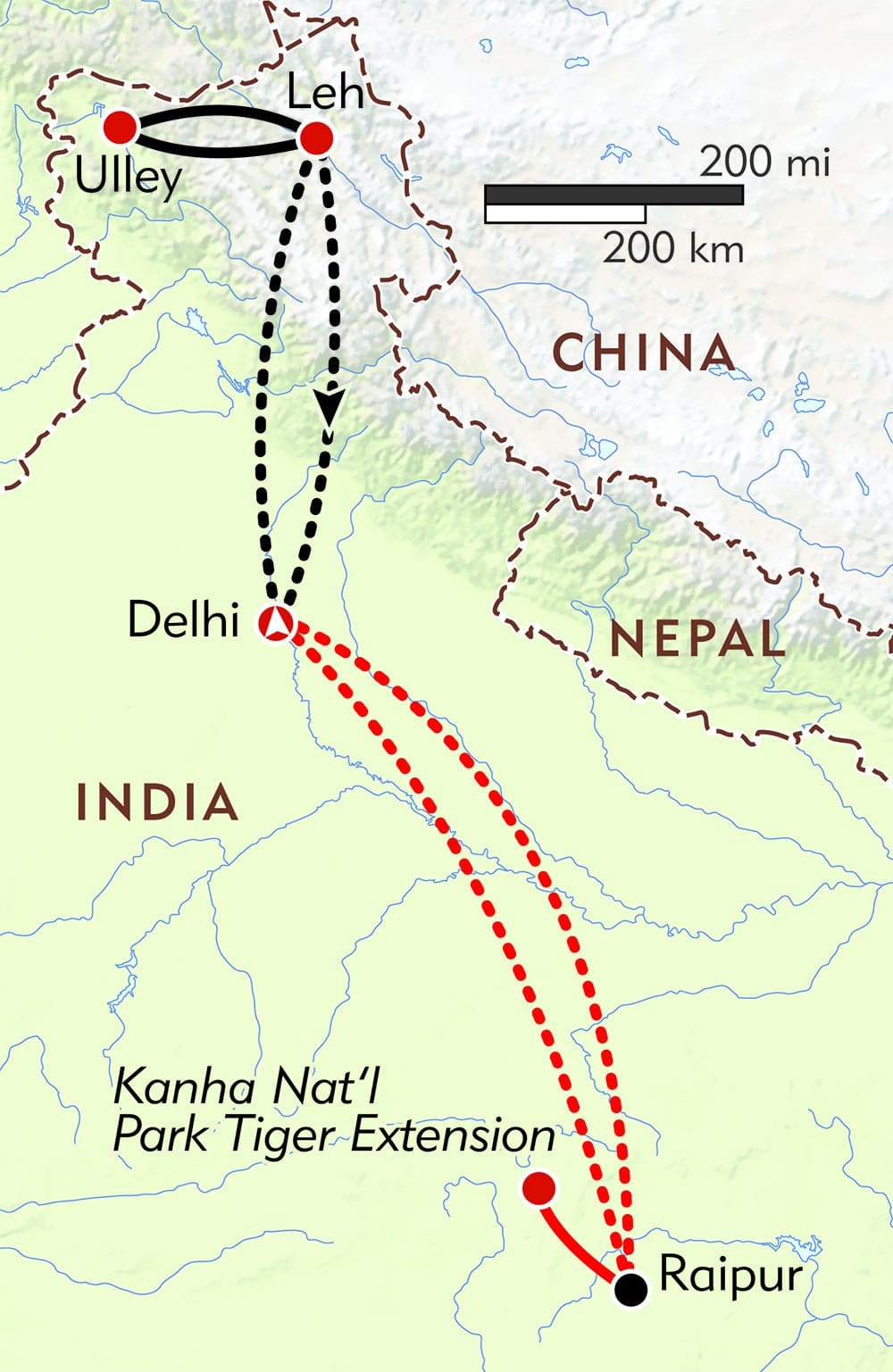
Arrive: Delhi, India
Depart: Delhi, India
- Track snow leopard in the high Himalayas, supporting a community-based Himalayan wildlife conservation project
- Experience Ladakh's breathtaking landscapes and traditional Tibetan Buddhist culture
- Extend your journey to include Kanha National Park, known for tiger and leopard sightings
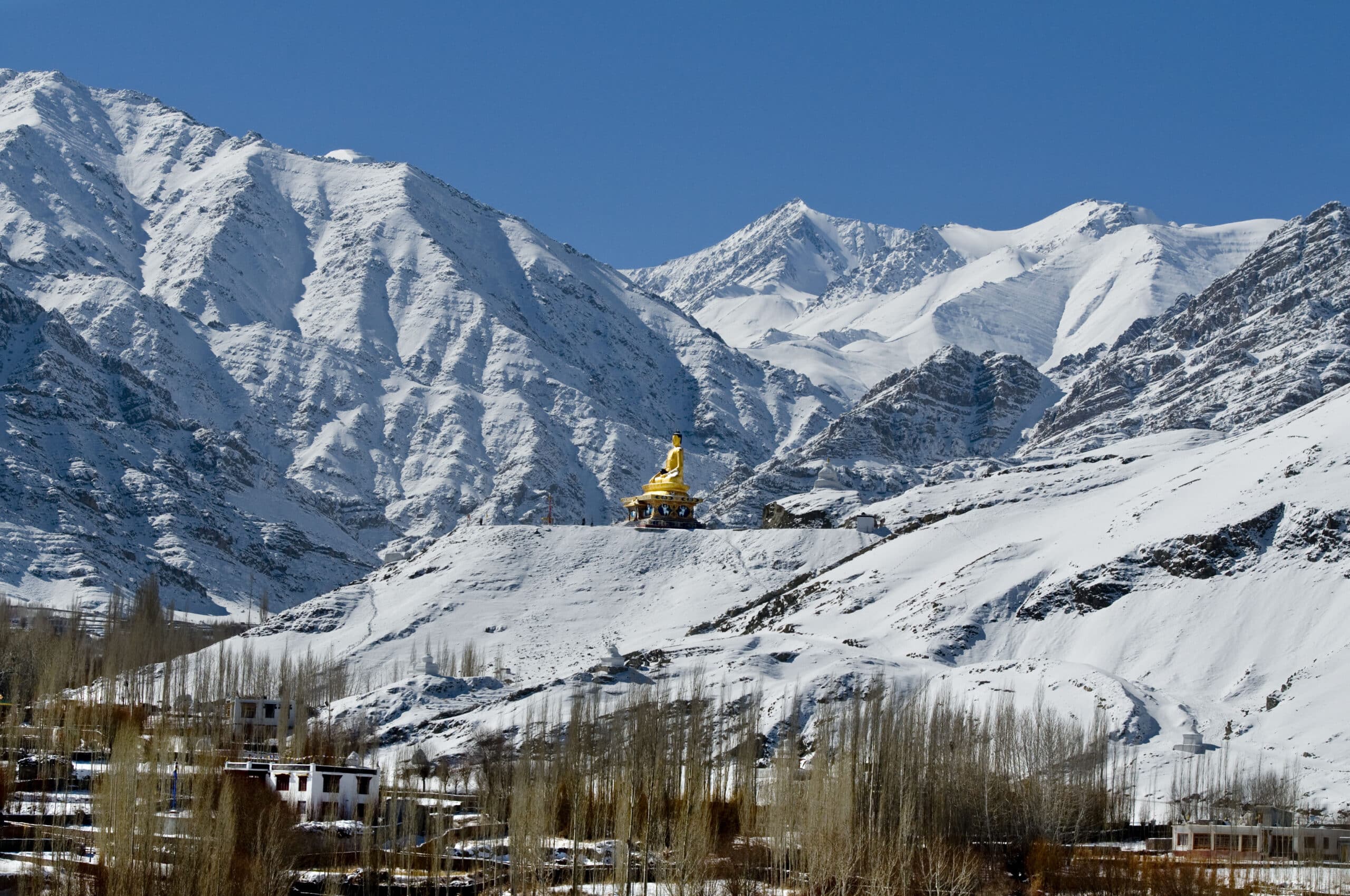
Dates & Pricing
Pricing below is per person and based on double occupancy. The earlier you book, the more choice you’ll have. WT also has the most generous cancellation and transfer policies in the industry, we make it easy if you change your mind. Have a small group of your own? Take over an existing date or choose your own. You’ll have your own private guide–and the adventure–all to yourselves!
Payment & Cancel Schedule
$600 due at time of reservation 90 days prior to departure: Balance
Cancellation & Transfer Schedule
Up to 91 days prior to departure: No Charge! 61-90 days prior to departure: 25% of trip cost 46-60 days prior to departure: 50% of trip cost 45 days or less: 100% of trip cost
- Expert leadership of a Wilderness Travel Trip Leader and local guides
- Accommodations in mountain lodges, hotels, and jungle lodges
- All meals included except 2 dinners as indicated in Detailed Itinerary
- A glass of wine or beer with dinner
- All ground transportation and baggage handling from meeting until departure
- All activities as indicated in Detailed Itinerary
Not Included
- Travel to and from the arrival and departure location as indicated in Detailed Itinerary
- Additional hotel nights outside the trip's scheduled dates
- Optional gratuities to Trip Leaders or staff
- Optional travel insurance
- Other expenses of a personal nature (some alcoholic beverages, laundry, etc.)
Accommodations
Scroll through our signature accommodations for this trip below. Although it is highly unlikely, we may make substitutions when necessary.
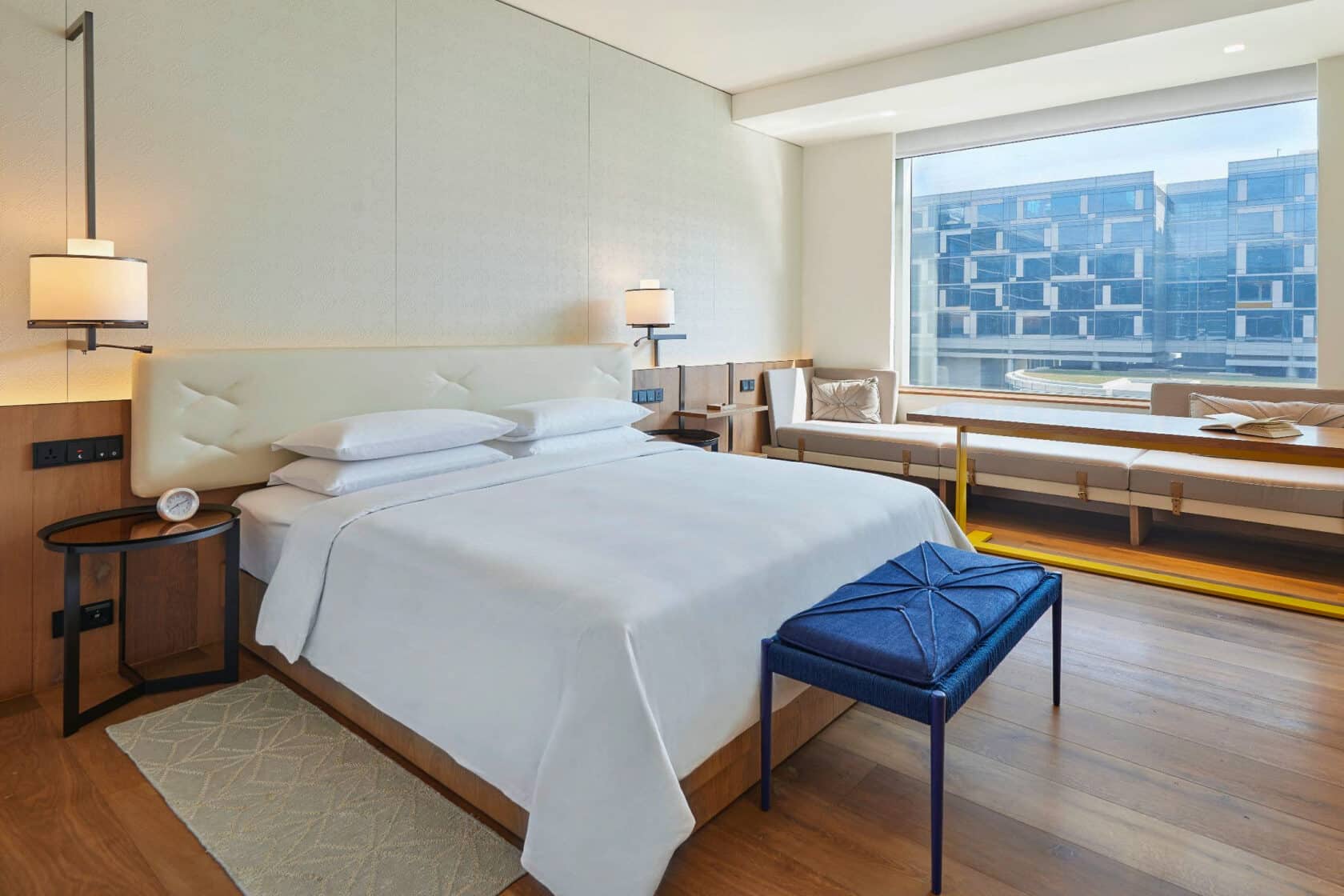
Andaz Delhi
New Delhi, India
Day 1 (1 night)
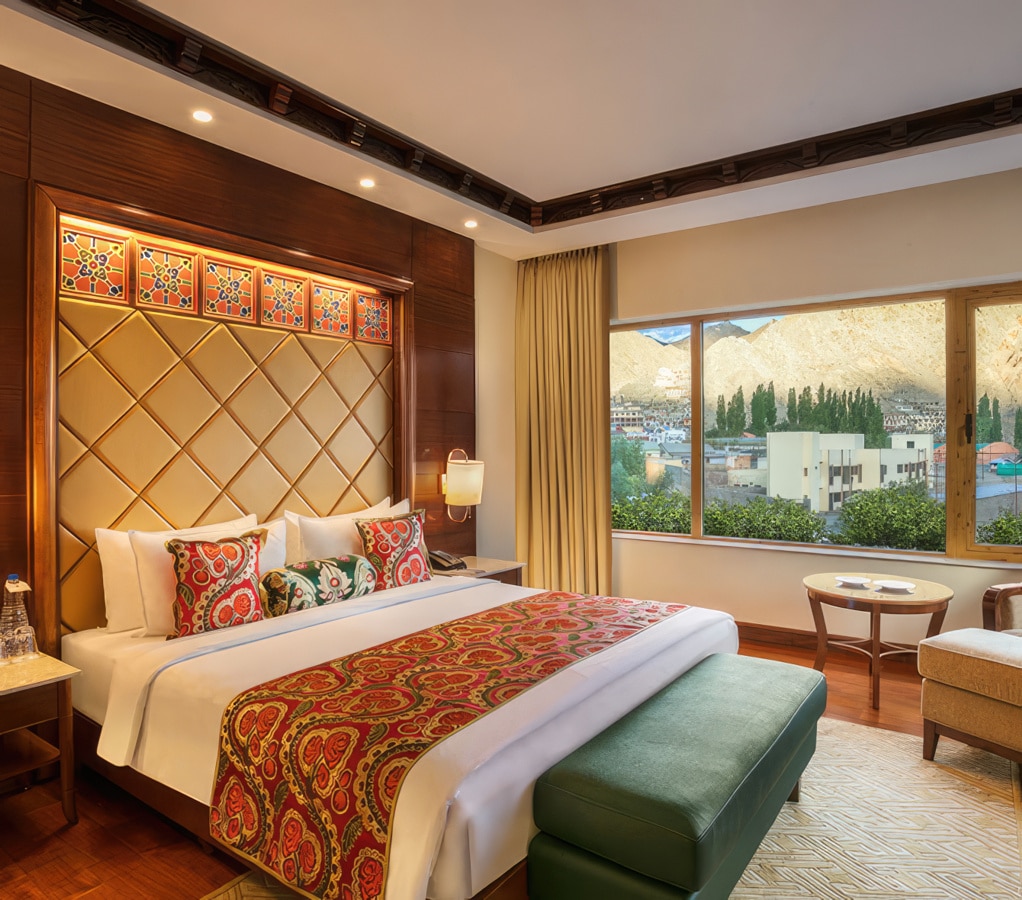
Grand Dragon Ladakh
Days 2-3 (2 nights)
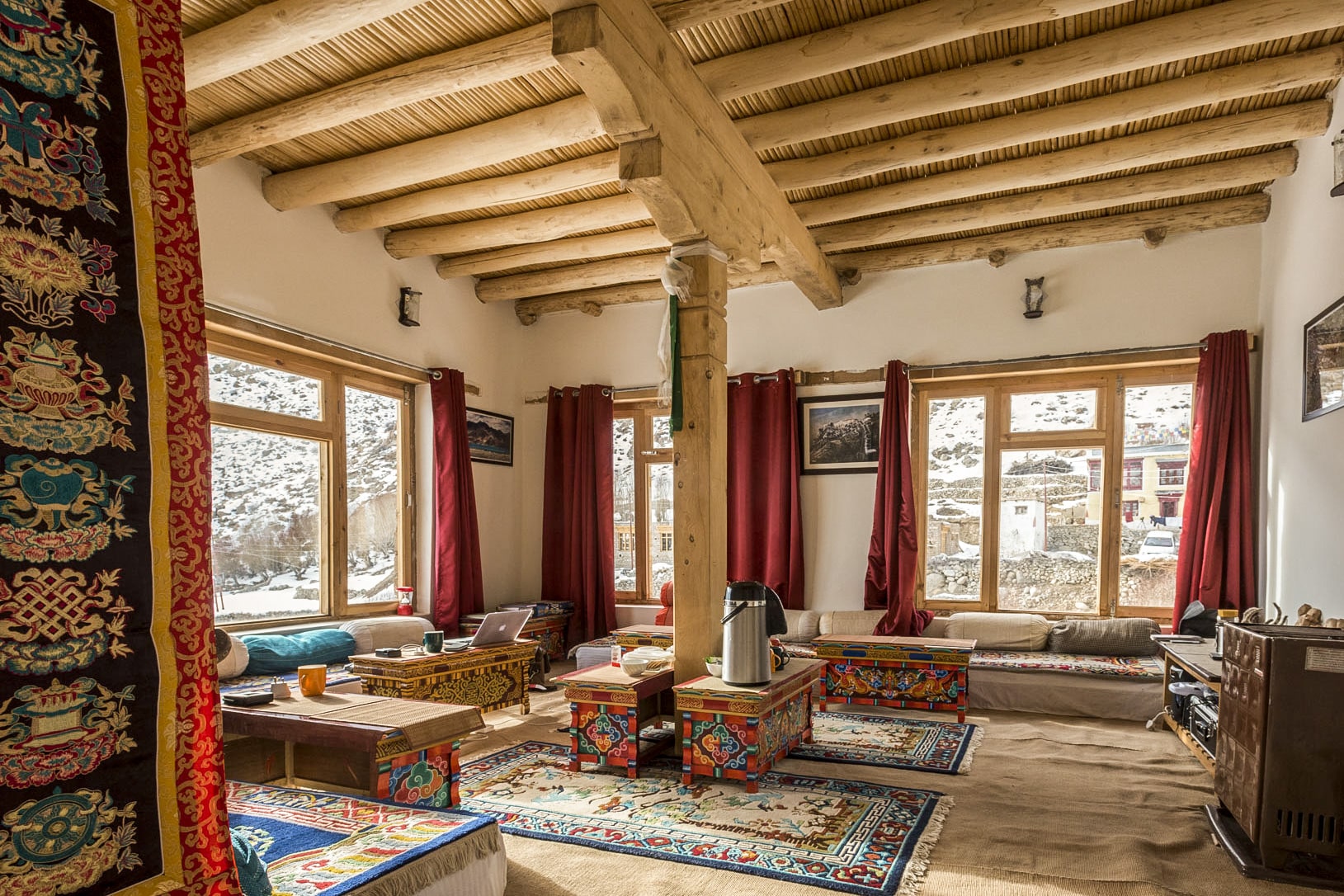
Snow Leopard Lodge
Ulley, India
Days 4-9 (6 nights)
Day 10 (1 night)
Day 11 (1 night)
Trip Leaders
Wilderness Travel Trip Leaders have a passion and a joy for creating an unforgettable journey. We are extremely proud of them and the incredible travel experiences they make possible. For more information, including client comments about them and which specific trips they will be leading, please click on their profiles below.

Gulzar Hussain
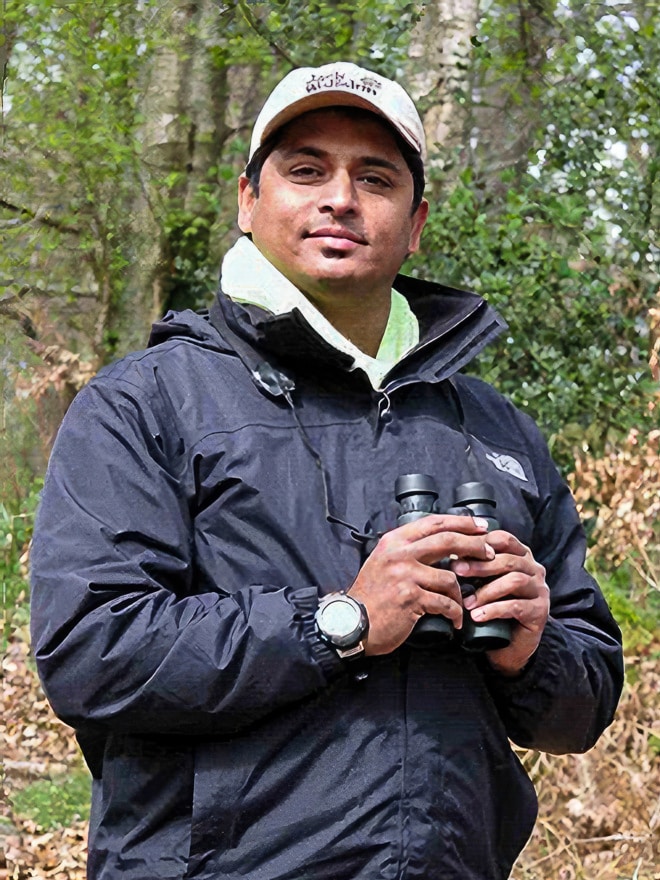
Indrajit Latey
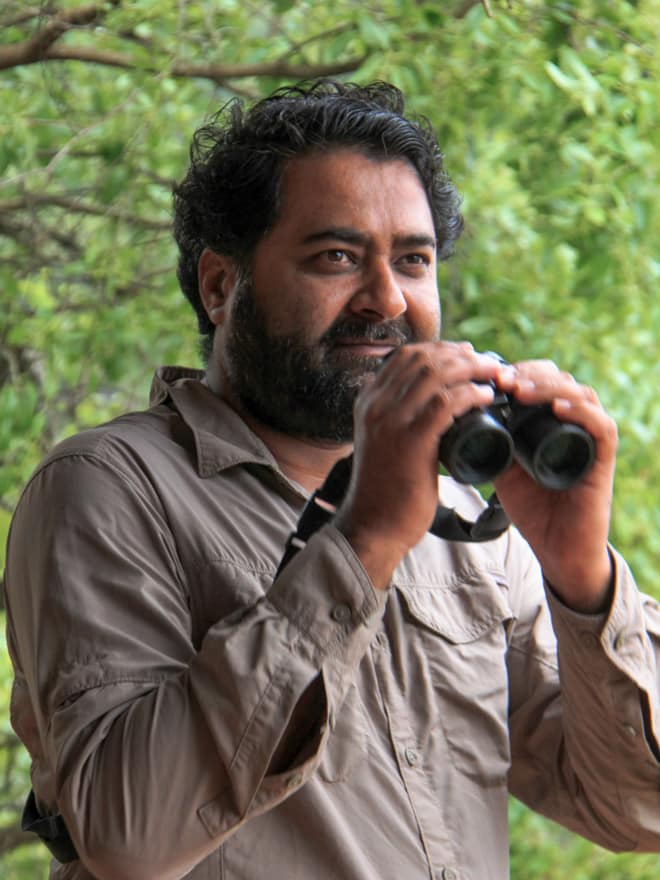
Ashwin H.P.
What the Trip is Like
When our trackers spot wildlife, we will hike varying distances to get the best views, and at high altitudes (14,000 feet or higher), hiking can feel strenuous. For your own enjoyment, we recommend you make a special effort to be in good physical condition.
Our lodge, in Ulley is simple but it is comfortable and heated (and a fantastic alternative to camping). Our rooms are simple rooms with beds, sheets, and blankets. Some rooms do not have power outlets, but every room has a light. There is no running water at the lodge as pipes will freeze in the winter. Bathroom facilities have a toilet and bucket bath (hot water will be provided if you wish to bathe). Please be prepared for limited bathing.
A Special Note on Travel to Ladakh
Ladakh is an exciting destination, and while tourism is growing, the infrastructure remains limited (particularly felt by travelers on the bumpy roads!). Essential requirements for travel in Ladakh are flexibility, a sense of humor, curiosity, enthusiasm about new peoples and places, and an openness to the unexpected.
Extend Your Trip
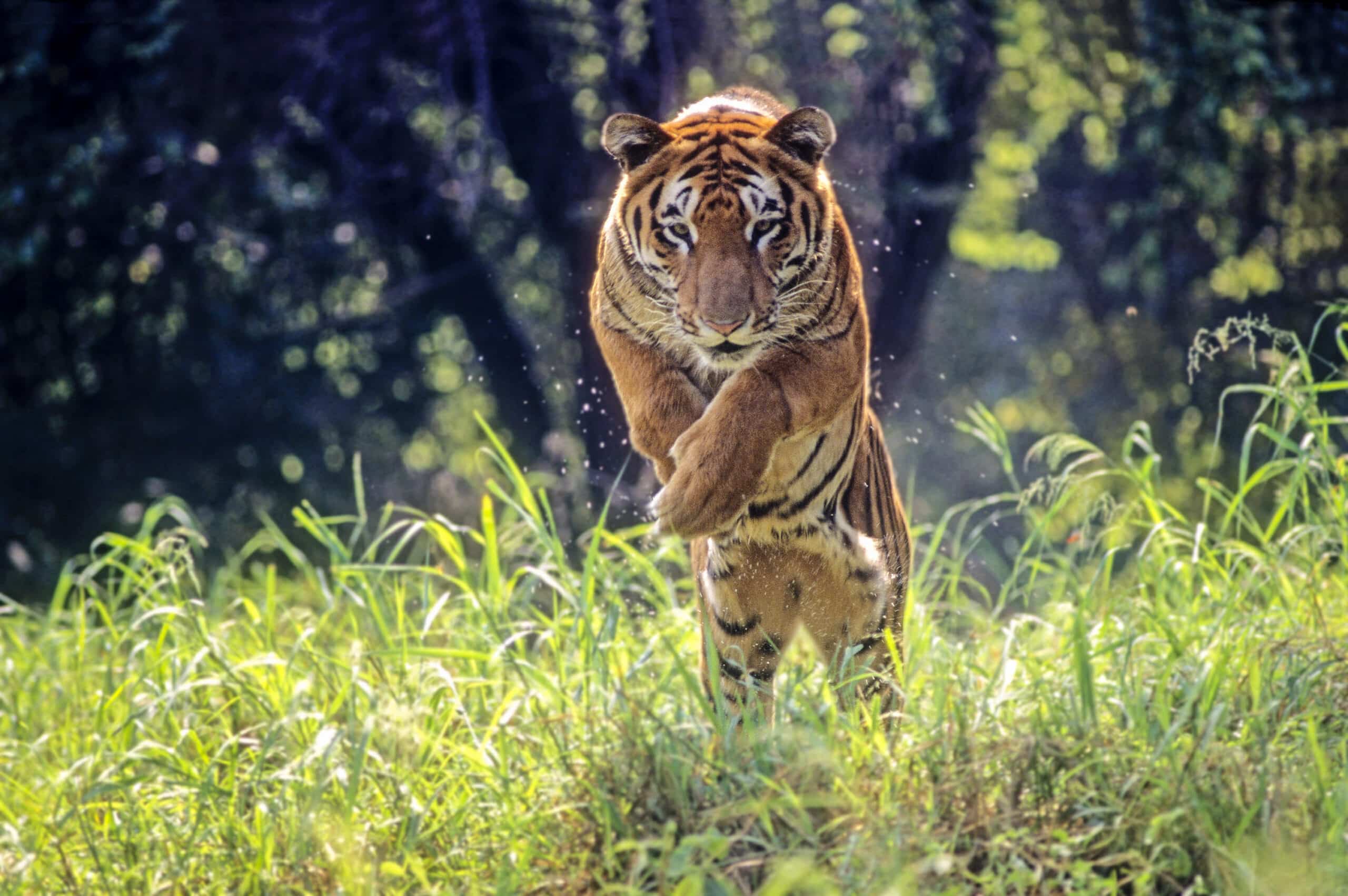
Kanha National Park Tiger Extension
From $2,245
Client Testimonials
"The trip operation was seamless for the guests. The trip leader and the assistant leader, as well as all the ground staff, made this trip easy to navigate, understand, and enjoy, making it a highly successful experience."
"The opportunity to see both snow leopards and tigers on one itinerary makes this a very special trip. The Snow Leopard Conservancy visit was fantastic as we learned about their important work, and then saw it in action at the Snow Leopard Lodge and surrounding valleys. That work is critical and we were so pleased to have a portion of our fee go to that organization. And while wildlife sightings are never guaranteed, we were fortunate to have the best team possible to help boost our odds."
San Jose, CA
"A wonderful trip! So much more than a chance to catch a photo of a snow leopard or tiger, this was the rare opportunity to really learn about these two cats, their environments, and the ongoing conservation efforts being made to save them."
Durango, CO
Other Trips You Might Like
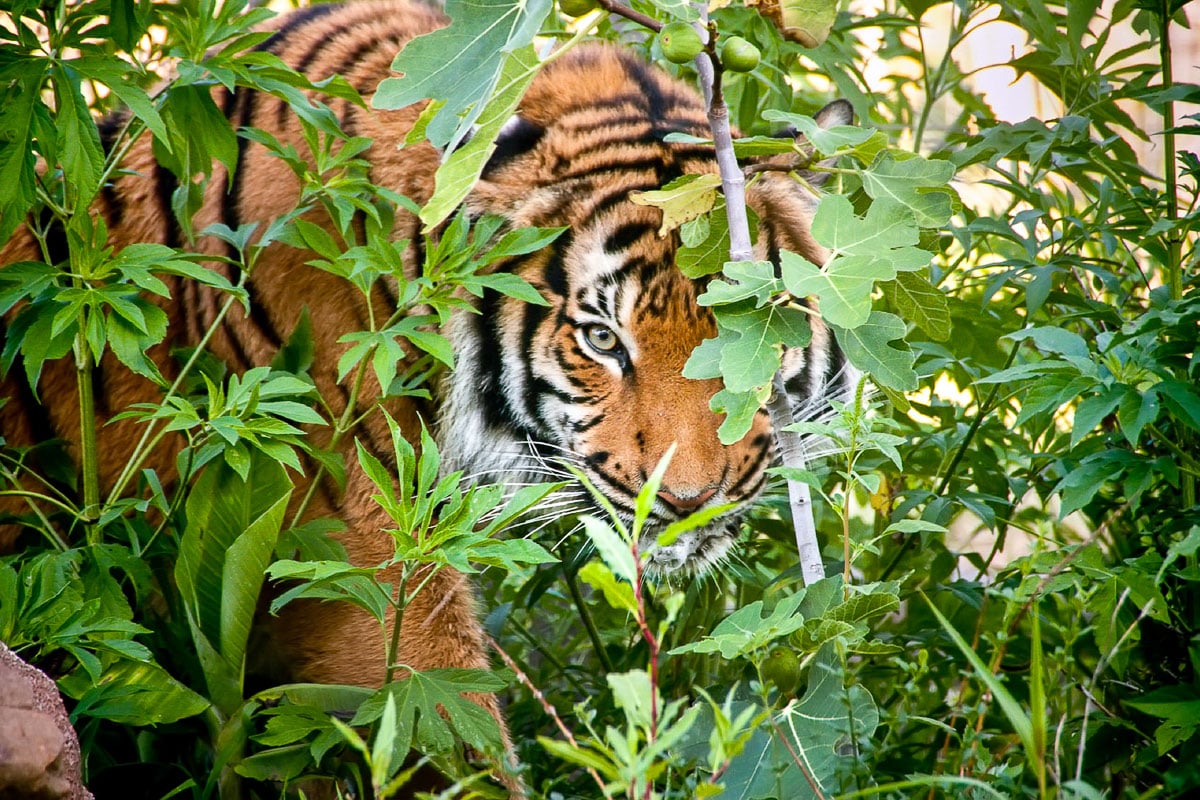
Small Group Adventure
Central India: In the Realm of the Tiger
From $7,295
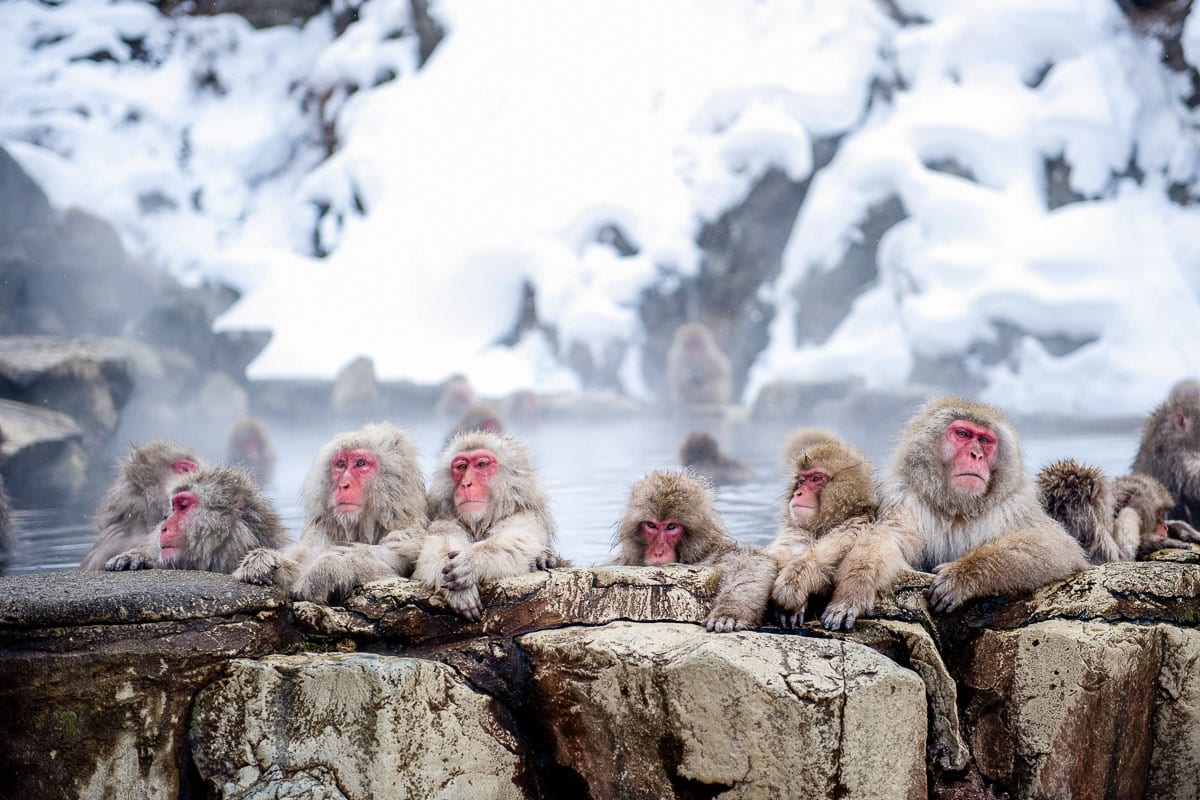
Japan: Snow Monkeys and Winter Cranes
Call for Pricing
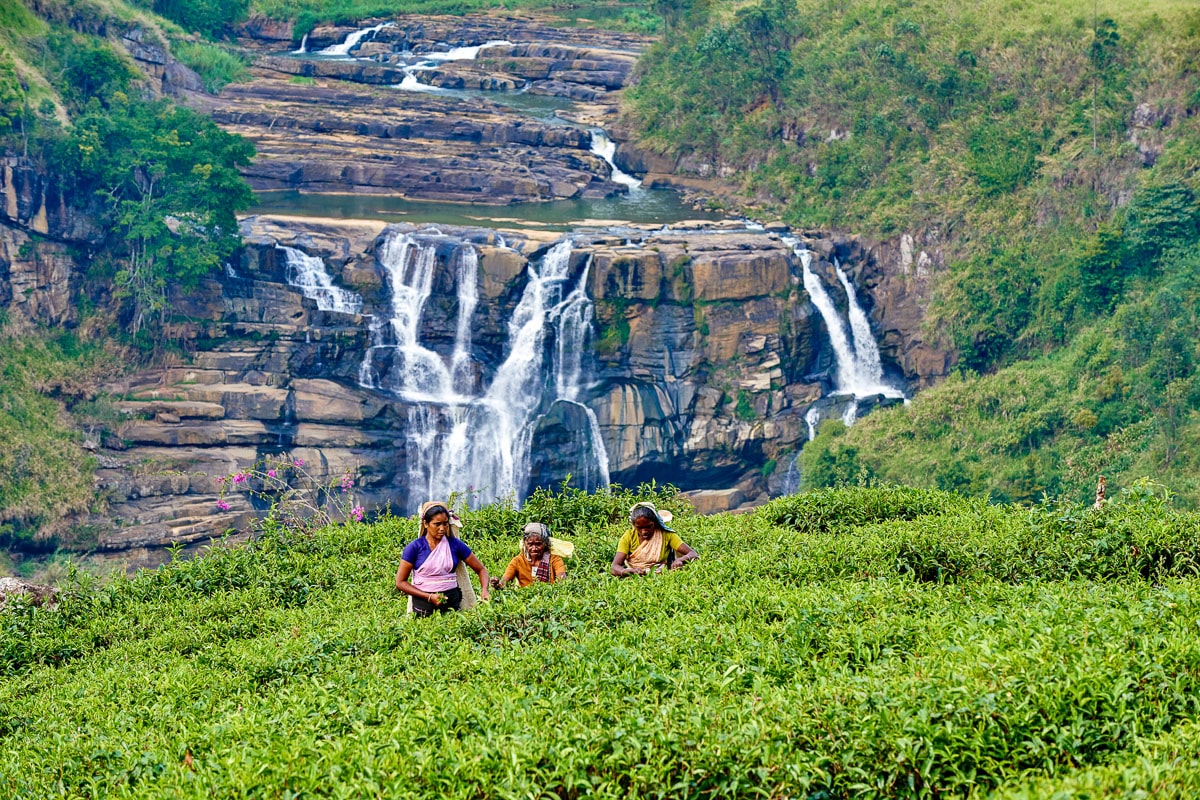
From $7,495
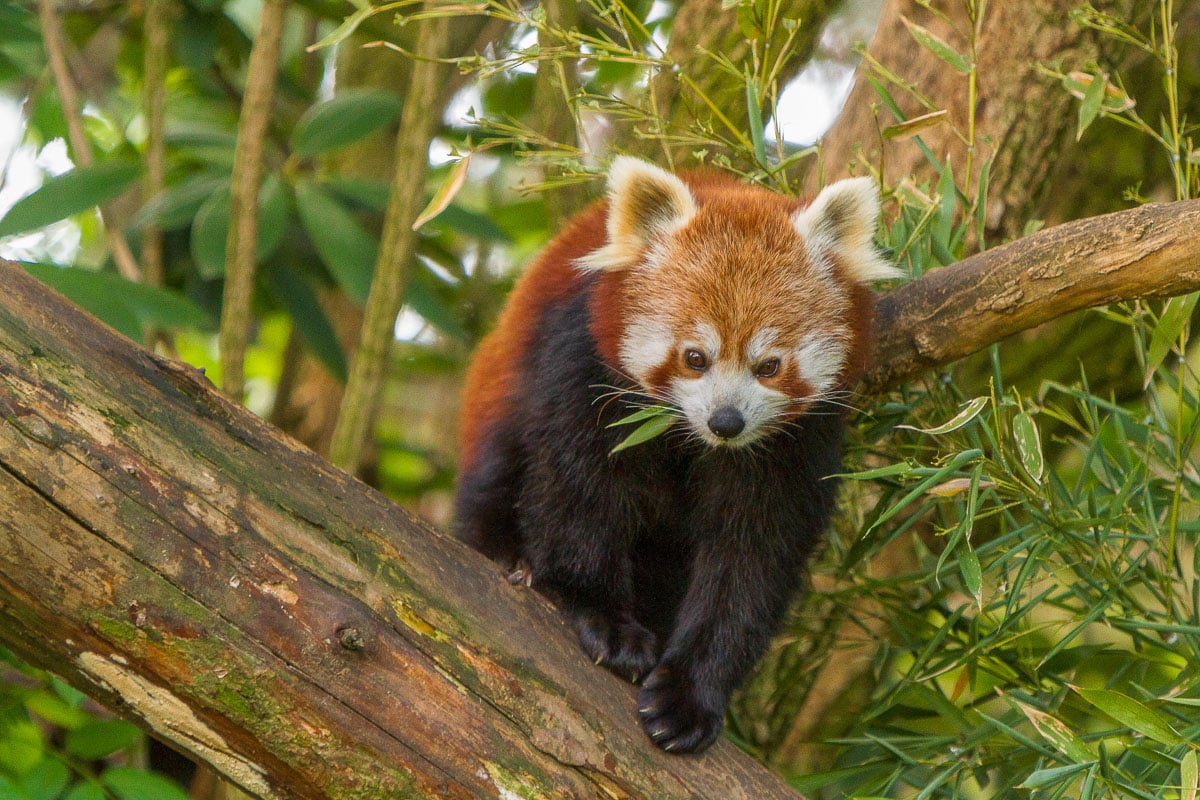
Wildlife of Eastern India: From Red Pandas to Rhinos
From $7,695
Book your trip today
Our Area Specialists know every detail about our tours. They will be happy to answer any questions and help you choose the journey that’s right for you. Contact us to learn more or book your trip today!
Submit the form below to download itinerary
Trip Download Itin
Trip Levels
With more than 200 different adventures to choose from, we want to help you find the trip that’s right for you. Our Trip Level system ranks each trip in two ways: a number rating from 1 to 6 according to the activity, and general travel rigors. 1 is the easiest and 6+ the most difficult—see descriptions below for explanations of each number. A plus (+) sign means the trip is a bit more strenuous than other trips of that level. The detailed explanation of each trip—below the bar with the number rating—is perhaps more important, specifying activities, altitudes, hiking, and travel conditions. The Detailed Itinerary, available by download or mail, gives further information. Our Area Managers can also answer questions and guide you to the trip that best suits your interests.
Level 1 – Easiest
Non-camping journeys, optional walks, little elevation gain or loss.
- Royal Rajasthan and Villages of India
- Small ship cruises
Level 2 – Easy to Moderate
Hotel nights and/or safari-style camping, hikes of two to four hours on some days. Other physical activities are sometimes included, such as optional sea kayaking.
- Our African safaris
- Costa Rica Wildlife
Level 3 – Moderate
Half- to full-day hikes (3-6 hours) over rolling countryside on most days, occasional steep trails. Many of our hotel-based walking tours are in this category, as are our snorkeling adventures.
- Tuscany & the Cinque Terre
- Argentina: Hikes and Estancias of Patagonia
- Palau Snorkeling & Sea Kayaking
- Some trips with minimal hiking but rugged travel conditions or long drives, such as Tribal Ghana, Togo & Benin, are Trip Level 3.
Level 4 – Moderate to Strenuous
Full-day hikes (4-6 hours), mountainous terrain, significant elevation gains and losses (hiking up or down as much as 3,000 feet) on many days. Altitudes no greater than about 10,000 feet.
- Ultimate Patagonia
- Hiking the Spanish Pyrenees
Level 5 – Strenuous
Full-day hikes (4-8 hours), mountainous, steep terrain (hiking up or down as much as 3,500 feet) on many days. Trips with hiking at average altitudes of 10,000 to 12,000 feet are in this category.
- Inca Trail to Machu Picchu
- Everest Lodge to Lodge
Level 6 – Very Strenuous
Full-day hikes (5-8 hours), mountainous, steep terrain (hiking up or down as much as 3,500 feet) on many days. Most hikes take place at altitudes above 10,000 feet, with some days ascending as high as 18,000 feet.
- Everest Base Camp
- Climb Kilimanjaro!

- Latin America
- Middle East
- Pacific & Oceania
- Algeria Tours
- Benin Tours
- Ethiopia Tours
- Ghana Tours
- Libya Tours
- Morocco Tours
- Namibia Tours
- Rwanda Tours
- Sudan Tours
- Tunisia Tours
- Western Sahara Tours
- Bangladesh Tours
- Bhutan Tours
- Cambodia Tours
- China Tours
- India Tours
- Indonesia Tours
- Japan Tours
- Kazakhstan Tours
- Kurdistan Tours
- Kyrgyzstan Tours
- Mongolia Tours
- Myanmar Tours
- Nepal Tours
- North Korea Tours
- Pakistan Tours
- South Korea Tours
- Sri Lanka Tours
- Taiwan Tours
- Tajikistan Tours
- Tibet Tours
- Turkmenistan Tours
- Uzbekistan Tours
- Vietnam Tours
- Armenia Tours
- Azerbaijan Tours
- Bulgaria Tours
- Georgia Tours
- Moldova Tours
- Romania Tours
- Türkiye Tours
- Ukraine Tours
- Colombia Tours
- French Guiana Tours
- Guyana Tours
- Suriname Tours
- Venezuela Tours
- Egypt Tours
- Israel Tours
- Jordan Tours
- Lebanon Tours
- Palestine Tours
- Saudi Arabia Tours
- Syria Tours
- Yemen Tours
- Nauru Tours
- Papua New Guinea Tours
- Timor-Leste Tours
- Animal Encounters
- Conservation
- Cultural Immersion
- Expedition Cruise
- Founder's Tours
- Photography
- Our Partners
Snow Leopard Tracking Tour
Single Supplement AUD$ 5,743.00
Ask us a question
Request a private departure
- Fitness Level
What’s included
Availability.
- Engage with the Snow Leopard Conservancy Fund to learn about conservation activities
- Explore the palaces and temples of Leh
- Trek through the Ulley Valley in search of elusive snow leopard with expert trackers
This epic adventure takes you to the Ulley Valley, Ladakh – one of India’s most protected Snow Leopard areas with expert trackers on hand to trace the cats’ scents, trails and markings, this journey will keep the pulse racing as you follow every sign of their movements whilst exploring some of the world’s most spectacular scenery.
This snow leopard trek offers you the chance to track these ‘ghosts of the mountains’ and their prey through the snow, with the ability to witness these sadly diminishing but stunning creatures in their natural environment.
Snow Leopards are most active at dawn and dusk and show a strong preference for cliffy habitat with moderately to very broken terrain, rocky outcrops and ravines. They are opportunistic predators and are known to take prey up to three times their own weight, though a large part of their diet comprises of small prey like marmots, pika, hare, birds and domestic livestock. Enjoy exploring winter wildlife, birdlife and being further educated on all things conservation and the natural world by your expert guides.
Journey map
Fitness level.
Namaste and welcome to India! On arrival, you will be met and transferred to your hotel in Aerocity. Today you have time to recover from your journey. Our wildlife expert will meet you in your hotel to discuss your expectations from the tour and answer any questions you may have. Should you be interested a birding excursion on the outskirts of Delhi, this can be arranged. Delhi and its surrounding region has a bird count of 227 species and surprisingly, is an interesting birding destination. In the winter months when migrating birds arrive from central India, some of these regions can be great for photography as well.
Overnight Lemon Tree Premiere Aerocity or similar
Following an early breakfast, you will transfer to the airport for your flight to Leh in Ladakh. Framed by the jagged snow-capped Himalayas, the city itself sits on the historic Silk Road. Dotted with humbling monasteries, stupas and crumbling mud houses, this enchanting city is very easy to fall in love with. Ladakh is Buddhist country with prayer flags fluttering brightly in the wind and long ‘Mani walls’ covered in exquisitely carved prayer stones, stupas and chortens are found along with Buddhist monasteries called ‘Gompas’.
Leh is located at just over 3500m, and it is not uncommon to suffer from a little altitude sickness, whether it be a headache, breathlessness or dizziness. Be sure to drink lots of ginger tea, remain well hydrated and remember, no strenuous exercise while acclimatising. (D)
2 nights at The Grand Dragon or similar
We have allowed two more days in Leh to acclimatise before starting your trek. If you are feeling up to it, over these two days, you will also be able to visit Shanti Stupa, Leh Palace as well as some of the local monasteries. Shanti Stupa is 5km from town and overlooks Leh city, offering a panoramic view of the surrounding snow-capped mountains. The location of Shanti Stupa is visible from all over Leh city.
Leh Palace, though in a dilapidated condition, is full of old worldly charm, and the adventurous journey one has to undertake to reach the palace makes it even more special. Built in the 17th century by King Singe Namgyal as the royal residence, it was deserted in the mid-19th century after the family shifted to Stok. A visit here for many people feels like a glimpse into the window of Tibet.
In the evening, we have planned an interaction at the hotel with the Snow Leopard Conservancy, where you will be able to learn about the big cats and other wildlife of the region, the landscape, people that inhabit the landscape and the various challenges faced by wildlife in the region along with the conservation work that is taking place in the region to protect the wildlife and educate locals on the longevity of conservation. (B,L,D)
Acclimatised and well rested this morning, you make your way to Ulley Valley (approx. 2.5hrs). Ulley is a very small village in the vast expanse of the upper Himalayas. It is home to only seven households that make up this village. A few years ago, one of the families realised the importance of wildlife that surrounded them and started promoting wildlife travel to the region to showcase the elusive ‘grey ghost’.
The drive to Ulley is quite scenic and you will cross some famous sites enroute such as Gurudwara Pathar Sahib (one of the highest places with a Sikh temple), you will see the confluence of two rivers – Indus and Zanskar along with the famous Alchi monastery. Based on the information your team receive on the sighting of the snow leopards around Ulley, they will make a call on whether you explore these beautiful sites and destinations now or on your way back.
Once you are close to Alchi, take a detour on to a road that is less travelled. Be on the look out for wildlife from this point onwards. There will be only one or two villages that fall on this route and from this point on, you will encounter very few people who travel or live in this remote wilderness. The region is home to the Tibetan Wolf, Himalayan Fox, Ibex, Ladakh Uriel, Golden Eagle and Lammergeiers alongside the magnificent snow leopard.
The total journey from Leh to Ulley should take about 2.5 – 4hr depending on the number of stops you make (the landscape is stunning and you will feel like stopping for a picture as you cross each bend in the road). You should arrive at the snow leopard lodge around lunch time. Even though it is called the Snow Leopard Lodge, it is still a homestay which has been slightly modified for western travellers.
Important note: The lodge is still very basic with shared washrooms. Depending on how much snow has fallen, and how cold it is, sometimes the pipes may be frozen limited the use of running water. If the water pipes freeze, there will be buckets provided where water is kept heated using an electric rod for your use. Once settled and after lunch, begin your explorations of the valley with your spotters who are people from the local community. We encourage partnering with locals to ensure the maximum financial benefit from your travels supports the community and encourages and educates the community to save the wildlife with whom they share their space. (B,L,D)
5 nights Snow Leopard Lodge or similar (a community run homestay)
Continue exploring the valleys and mountains around Ulley in search of wildlife. Please note this is not hard core trekking – this is all about searching for wildlife and will take place a comfortable pace for the group accompanied with expert trackers and naturalists.
Distances covered and the level of activity will depend on wildlife sightings and how strenuous you wish to make the journey. You are likely to see signs of the snow leopard, as winter is the time that they descend to lower elevations. If you are lucky, you may see one perched high on the rocks or balanced effortlessly on a sheer vertical ridge.
Snow leopard sightings are a game of patience. Your schedule on these days is subject to previous sightings of the snow leopards, and your guide will collect information from locals and other guides on a daily basis to determine the movement of your day. You will either follow on from the previous day’s route, or trek and explore nearby areas, waiting and watching for the gracious Snow Leopards using a scope.
The moment you witness these beautiful and elegant cats, your breath will be taken away. Everything will seem silent as you watch, captivated by their beauty. Soft padding paws, brush like powerful tails. Every move planned and executed with precision. This will truly be one of the most awe inspiring moments of your journey.
Watch as they scavenge and search for prey. Camouflaged so perfectly into the snow covered rocky terrain. The only sounds to be heard are your gasps of amazement and the click of camera shutters. You will never forget this moment.
All meals will be at the lodge unless you decide to trek the whole day – in which case a packed meal can be carried with the team.
The evenings are spent talking about stories of the various wildlife experiences not only in the region but also in other parts of the country. These stories are a fun interaction with the local boys, naturalists, and your fellow travellers. The lodge also has a few documentaries about wildlife in the Indian Subcontinent which can be projected on a wall in the common area. (B,L,D)
After spending the morning searching for the snow leopard, enjoy a restful lunch before you return to Leh. The remainder of the day is yours at leisure. (B,L,D)
Overnight at The Grand Dragon or similar
This morning, transfer to the airport for your flight back to Delhi. On arrival, you will be met and transferred to your hotel. (B)
Overnight Holiday Inn Premiere, Aerocity or similar
This morning you will be transferred to the airport for your onward flight. (B)
Don’t have time now?
Download this tour’s PDF brochure and start your planning offline!
- Return airport transfers
- 10 nights accommodation
- Breakfast, lunch and dinner on all days except arrival and departure days
- English speaking local guides
- Half day sightseeing in and around Leh with local city expert
- Naturalists, spotters and trackers whilst in the National Park
- Entrance fees, park fees and trekking permits as per itinerary
- Transportation in an air conditioned vehicle
- Wildlife permit fees
- Domestic flight Delhi – Leh – Delhi in economy class
- International flights
- Travel and medical insurance
- All services, meals other than those indicated above
- Any changes to the proposed and confirmed program.
- All items of a personal nature e.g. drinks, laundry, telephone calls, tips etc
- Personal trekking equipment and other special clothing items
**Please note that this tour can be organised on request for private departures for travel between January and March.
* Pricing is subject to change at any time until full payment has been received.
* A minimum of 4 adults is required to guarantee this departure.
**Snow Leopard sightings cannot be guaranteed.
A non-refundable deposit of 40% AUD per person is required to secure your place. Final payment is due no later than 60 days prior to departure. Travel insurance is mandatory for travelling with Crooked Compass. For full terms and conditions, please click here.

Related popular tours
Sapphire lakes, sheer peaks capped with snow, wild nomadic frontiers, cobalt architecture and a tangle of fascinating history make up the 5 Stans.
Traverse the footsteps of the most famous travellers ever, Marco Polo.
Hike on century old paths, through a land of lush forests, rolling tea plantations, towering ocean cliffs and through impressive gorges.
Venture along the Old Silk Road through the jostling merchant town of Kashgar through fabled regions of Pakistan before reaching paradise on earth in Kashmir.
Experience Laos and Cambodia through the eyes of a local whilst exploring lesser known temples and following a different path.
Subscribe to our newsletter
Stay up to date with the latest travel trends and new destinations opening up. To be the first to go, you need to be the first to know.
View the latest magazines

This category of tours involves light trekking, walking, cycling, rafting or kayaking for a few hours each day with a small amount of inclines and declines. You will require a reasonable level of fitness and good health to participate. It is important to note that due to the nature of some of our trips, they may take place in remote areas (with basic facilities) and can involve long travelling days on various modes of transport.
Suggested preparation : At least 3 months prior to departure, it is recommended that you undertake aerobic exercise (this may include jogging, cycling or fast walking) for 30 minutes, three times a week. It is also advised to walk on variable terrain and in variable weather conditions. For a cycling adventure, road cycling twice a week is recommended and for adventures which involve paddling and kayaking, it is important to gain confidence and rhythm rather than speed prior to departure.

This category of tours involve trekking, kayaking and cycling for period of 6 to 8 hours a day at a fairly consistent pace. Ideal for people looking to slightly increase the heart rate. For our moderately rated tours, you must have a good level of fitness and also be in good health. It is also important to be prepared for variable weather conditions. Altitude may also come into play. This category of tours may involve visiting remote areas where facilities can be quite basic. Accommodation may also involve camping, homestays or basic accommodation where facilities may not be considered of western standards. To enjoy this style of travel, it is suggested for travellers to have a reasonable level of fitness and health, a positive attitude, as well as a fairly active lifestyle. An open mind is also required.
Suggested preparation: At least 3 months prior to departure, it is recommended that you undertake 45mins – 1 hour of aerobic exercise, three to four times a week. Some potential exercises that could be beneficial include hill walking with a backpack on over variable terrain and weather conditions, as well as running and cycling dependent on the activity you plan on undertaking.

Challenging
This category of tours involves trekking, kayaking, cycling or other adventure activities in remote areas for up to 8 to 10 hours a day. It is important to note that with the remoteness of some regions comes a variety of other challenges such as variable weather conditions, accommodation as well as facilities. You must have an excellent level of fitness and good health to be able to partake in this category of tour. You must have confidence in your own ability and be in good physical condition. Includes extended periods of endurance.
Suggested preparation: At least 3 to 4 months of strenuous exercise, four times a week. When preparing for treks it would be beneficial to participate in hill walks with a weighted day pack (approximately 5-8 kg) once a week for aerobic fitness and strengthening of leg muscles. It is also important to do this on variable terrain to prepare for challenging adventures. When preparing for cycling adventures, regular bike riding (at least 4 to 5 times a week for 1-4 hours is essential). It is also important to cycle on uneven surfaces or even participate in other aerobic exercises such as running or swimming to build up strength and stamina. Altitude may also be a factor in these tours.

This category of tour often involves extreme trekking, cycling or other extreme adventure activities. It is important to expect remote and poorly defined tracks and to be prepared for variable weather conditions for 10 to 12 hours per day (may sometimes be more depending on weather and altitude). These adventures are suitable for travellers who have prior experience in strenuous travel and activities, are extremely fit and have excellent health. It is also important to note that some of the terrain on these adventures will involve trekking in snow, at high attitude levels and may require technical equipment.
Suggested preparation: It is important to note that physical fitness should be an ongoing activity, commencing around 5-6 months prior to departure, or even before if you have no prior fitness. Exercise should focus on building maximum endurance and stamina. Four to five hard sessions of 40-60 mins per week should be completed and can include exercises such as going to the gym, running, swimming or cycling to focus on building aerobic stamina. It could also be beneficial to prepare by hiking on rough terrain, in extreme weather conditions or partake in altitude training.
Search Crooked Compass
Submit Enquiry
—Please choose an option— Afganistan (+93) Africa Region (+0) Albania (+355) Algeria (+213) Andorra (+376) Angola (+244) Argentina (+54) Armenia (+374) Australia (+61) Azerbaijan (+994) Bahrain (+973) Bangladesh (+880) Belarus (+375) Benin (+229) Bermuda (+1441) Bhutan (+975) Bolivia (+591) Bosnia-Herzegovina (+387) Botswana (+267) Brazil (+55) Brunei (+673) Burkina Faso (+226) Burundi (+257) Cambodia (+855) Cameroon (+237) Canada (+1) Cape Verde (+238) Central African Republic (+236) Chad (+235) Chile (+56) China (+86) Colombia (+57) Comoros (+269) Congo, Republic of (+0) Croatia (+385) Djibouti (+253) Ecuador (+593) Egypt (+20) Equatorial Guinea (+240) Eritrea (+291) Falkland Islands (+500) Faroe Islands (+298) French Guiana (+0) Gabon (+241) Gambia (+220) Georgia (+995) Ghana (+233) Gibraltar (+350) Greece (+30) Greenland (+299) Guinea (+224) Guinea Bissau (+245) Guyana (+592) Hong Kong (+852) Iceland (+354) India (+91) Indonesia (+62) Iran (+98) Iraq (+964) Israel (+353) Japan (+81) Jordan (+962) Kazakhstan (+7) Kenya (+254) Kuwait (+965) Kyrgyzstan (+996) Laos (+856) Lebanon (+961) Lesotho (+266) Liberia (+231) Libya (+218) Liechtenstein (+423) Macao (+853) Macedonia (+389) Madagascar (+261) Malawi (+265) Malaysia (+60) Maldives (+960) Mali (+223) Mauritania (+222) Mauritius (+230) Mayotte (+262) Moldova (+373) Monaco (+377) Mongolia (+976) Montenegro (+382) Morocco (+212) Mozambique (+258) Myanmar (+0) Namibia (+264) Nepal (+977) New Zealand (+64) Niger (+227) Nigeria (+234) North Korea (+850) Norway (+47) Oman (+968) Pakistan (+92) Palestine (+0) Paraguay (+595) Peru (+51) Phillipines (+63) Qatar (+974) Reunion (+0) Russia (+7) Rwanda (+250) Saint Helena (+290) Saint Pierre and Miquelon (+508) San Marino (+378) Sao Tome and Principe (+239) Saudi Arabia (+966) Senegal (+221) Serbia (+381) Seychelles (+248) Sierra Leone (+232) Singapore (+65) Somalia (+252) South Africa (+27) South Korea (+82) South Sudan (+0) Sri Lanka (+94) Sudan (+249) Suriname (+597) Svalbard and Jan Mayen Islands (+0) Swaziland (+268) Switzerland (+41) Syria (+963) Taiwan (+886) Tajikistan (+992) Tanzania (+255) Thailand (+66) Timor-Leste (East Timor) (+670) Togo (+228) Tunisia (+216) Turkey (+90) Turkmenistan (+993) Uganda (+256) Ukraine (+380) United Arab Emirates (+971) Uruguay (+598) USA (+1) Uzbekistan (+998) Venezuela (+58) Vietnam (+84) Yemen (+967) Zambia (+260) Zimbabwe (+263)
Preferred Contact Method
Please email me
Please call me
Select from Scheduled Dates*
Do you require travel insurance? Yes No
Do you require flights? Yes No
By submitting your enquiry you agree to allow Crooked Compass to share its wonderful tours and travel stories in future. You can view our privacy policy here.
This site is protected by reCAPTCHA and the Google Privacy Policy and Terms of Service apply.

Asia & Pacific Adventures
- Land of the Snow Leopard
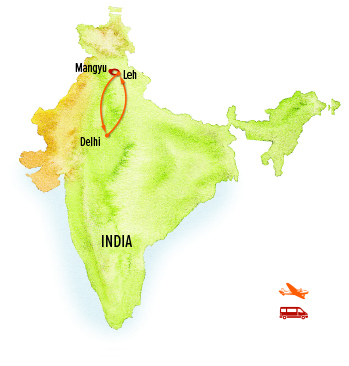

Physical Rating: Difficult
The grand india wildlife adventure, india tiger quest, wild & ancient himalaya: nepal & bhutan.
Availability & Book Now
Download Trip Details
Ask a Question

Customize Your African Safari
Let our in-house safari experts create your perfect African adventure. Whether you'd like to travel as a private group on this safari or you'd like to create an itinerary all your own, simply fill out the form to the right or give us a call at 800-543-8917 .

Customize Your Trip
Let our in-house trip experts create your perfect adventure. Whether you'd like to travel as a private group on our ${tripName} or you'd like to create an itinerary all your own, simply fill out the form to the right or give us a call at 800-543-8917.
Discover the World's Best
Nature Travel Experiences
Get our downloadable trip details in PDF format, a handy resource for your travel planning. Inside, you'll find all the info from our website—highlights of the trip, itinerary, accommodations, and full details on dates, prices and logistics—plus a few extras!
Thank you for your request! Click here to see your trip details PDF now. You’ll also receive it by email momentarily.
Fill out our form to receive additional information about our ${tripName}, or give us a call at 800-543-8917 .
We’ll be in touch soon with more details.
Send Me Travel Emails
Get the Inside Scoop on the
World of Nature Travel

Our weekly eNewsletters highlights new adventures, exclusive offers, webinars, nature news, travel ideas, photography tips and more. Sign up today!
Look for a special welcome message in your inbox, arriving shortly! Be sure to add [email protected] to your email contacts so you don’t miss out on future emails.

Request Your 2023 Catalog

Together, Natural Habitat Adventures and World Wildlife Fund have teamed up to arrange nearly a hundred nature travel experiences around the planet, while helping to protect the magnificent places we visit and their wild inhabitants.
Get Weekly Updatess
Our weekly eNewsletter highlights new adventures, exclusive offers, webinars, nature news, travel ideas, photography tips and more. Sign up today!
Send Us a Message
Have a question or comment? Use the form to the right to get in touch with us.
We’ll be in touch soon with a response.
Refer a Friend
Earn rewards for referring your friends! We'd like to thank our loyal travelers for spreading the word. Share your friend's address so we can send a catalog, and if your friend takes a trip as a first-time Nat Hab traveler, you'll receive a $250 Nat Hab credit you can use toward a future trip or the purchase of Nat Hab gear. To refer a friend, just complete the form below or call us at 800-543-8917. It's that easy! See rules and fine print here.
We've received your friend's information.
View Our 2023 Digital Catalog
View Our 2024/2025
Digital Catalog
Thanks for requesting access to our digital catalog. Click here to view it now. You’ll also receive it by email momentarily.

Polar Bear Tours

African Safaris

Galapagos Tours

Alaska Adventures

U.S. National Parks Tours

Canada & the North

Europe Adventures

Mexico & Central America Tours

South America Adventures

Antarctica & Arctic Journeys

Adventure Cruises

Photography Expeditions

Women's Adventures

Family Adventures

New Adventures
Questions? Call 800-543-8917
Have a question or comment? Click any of the buttons below to get in touch with us. Hours Mountain Time
- 8 am to 5 pm, Monday - Friday
- 8 am to 3 pm on Saturday
- Closed on Sunday

Snow Leopard Tours India – Spiti Valley

This is a custom departure tour and so please write to us for prices and more info on this trek.
- Inclusions/ Exclusions
- Things You Need To Get
Join us on one of the best Snow Leopard tours in India’s Spiti Valley as we look for the elusive Snow Leopard in the crags of Spiti, Lahaul, Ladakh and Zanskar. In these mountains the Grey Ghosts of the Himalayas are both revered and feared, always spoken of in hushed tones. There is something ethereal and mystical about the Snow Leopards of whom mankind knows so little. And to watch them in their natural habitat is indeed such a unique experience. Coming face to face with one is something you will never forget in a lifetime.
At Above14000ft we have the best guides to go with you on your expedition looking for the elusive snow leopard. Of course finding one in the first place is always a challenge but thats why we have such amazing guides with whom your chances will surely increase for finding Snow Leopards in the wild.
All our snow leopard tours are run on an expedition format. This also comes with its share of hardships and challenges to deal with. None of our Snow leopard tours are an Africa style safari tour. We will walk everyday into remote crags and endure sub zero temperatures and high altitude all for a chance to come face to face with the grey ghost of the Himalaya. At the end of each day we will come back to our expedition base camp to recharge ourselves and our gear. Usually these base camps will be a combination of comfortable home stays where ever available or even tents and camps if we are in remote areas. This will also give you a first hand taste of Himalayan winters and how the locals live here.
In Ladakh places like Hemis National Park and Ulley have become famous hotspots over the last few years for sightings Snow Leopards in winters. There seems to be a growing choice of getting luxury accommodations in camps or boutique lodgers that cater to creature comforts and also offer you good chances to see a snow leopard in its natural habitat.
Our Grassroots Approach
On most of our Snow leopards tours weather in Spiti or Ladakh we try to keep our experience very real, rustic and authentic. We will use local homes for stay. You will end up interacting with the local host family and learn a lot about their lives first hand by seeing them go about their everyday business.
Our Spiti Snow Leopard tours have always had some amazing sightings of snow leopards. We have had sighting as close as 20 feet on some of our Spiti Snow Leopard Tours. However getting into Spiti in winters is an adventure all on its own. We always encourage guests to try our Spiti experiences. Spiti still retains its old world charm and local culture combined with 1000 year old monasteries. In many ways Spiti still feels like a place lost in time from another era.
New Areas Opening up
Lahual and Zanskar are only now opening up in terms of accessibility thanks to an improving road and tunnel network. Not much research and work seems to have happened in these two areas with respect to Snow Leopards. However various experts working with Snow Leopards predict a fairly healthy population both in Zanskar an Lahaul valleys.
Currently we offer bespoke tours into these valleys so feel free to get in touch with us if you wish to do some exploration of your own into either of these areas and need any help running a tour.
The Spiti Program
We offer the best Snow Leopard Tours in India’s Spiti Valley.
Snow Leopards are one of the hardest animals to spot on our planet. The extremely shy animals are only found in the mountains of Central and South Asia. As such very few people have been lucky to see this spotted cat in the wild. They rule the cliffs of Trans-Himalayan landscape in Spiti and Ladakh, in India and are revered by the locals. Due to this, snow leopards in these mountains are highly protected from poachers. With a stable population of Snow Leopards, Spiti Valley is one of the best places to see this rare cat.
Winters in Spiti are also a great time to spot a variety of other rare Himalayan wildlife like the Siberian Ibex, Blue Sheep, Tibetan Wolf, Red fox, Lammergeier, Golden Eagle, Tibetan Snowcock, etc.
Using local home stays, wildlife spotters and guides, the tour gives you a unique opportunity to view rare wildlife, breathtaking landscapes and an unparalleled insight into the communities that choose to live in these harsh mountains.
We start early and drive 6-7 hours to reach Rampur, a small town on the banks of the Sutlej river. Overnight at a guesthouse.
We continue our drive deeper in the mountains through Kinnaur and onward to Spiti. Enroute we have to make a stop over at Rekong Peo inorder to collect our permits at the local DC office. Today is a long driving day, we reach Tabo by the evening. Tabo is noted for being the oldest continuously operating Buddhist enclave in both India and the Himalayas. Overnight at a guesthouse/ homestay.
In the morning, visit Tabo monastery, built in 996 AD and home to many priceless artefacts and spectacular murals. Another short drive gets us to Kibber village, our base for the next few days and a hotspot for spotting Snow leopards. Full day of acclimatisationOvernight at homestay.
We spend the next 5 days in the search of the Snow Leopards and other wildlife. We head out every day after breakfast to an area scouted by our spotters to increase the chances of viewing the elusive cat. Spend the evenings warm in a homestay in Kibber.
We leave Kibber for the long drive back to Rampur.
Drive Rampur to Chandigarh. Trip Ends!
- All transport Chandigarh and back.
- All accommodation during the trip on twin occupancy as detailed in the itinerary.
- All meals.The food served every day will be a mixed cuisine and will be both Veg and Non-veg. (Indian, Italian, Chinese, Tibetan and Continental food).
- High-grade English speaking wildlife team.
- All Staff Insurance.
- Hotels In Chandigarh.
- Any flights.
- Any expenses of a personal nature.
- Any guest Insurance.
- Personal clothing and equipment Any other expenses not mentioned above.
- Any costs arising out of unforeseen circumstances such as bad weather, landslides, road conditions and any other circumstances beyond our control.
- Tips and Gratuities.
– Good quality waterproof and windproof jacket. – Trousers. – Heavy duty down winter Jacket for -35 to -40 Deg C – Fleece jacket. – Beanie – warm – Sun hat – Warm gloves – (waterproof outer, fleece inner) are good. – Mid-weight fleece top. – Long sleeved shirt. – Travel and camp trousers. – 2 wicking t-shirts (synthetic or merino wool) – Normal clothing for around town. – Long sleeved thermal top. – Thermal long johns. – 2-3 pairs underwear – 2-3 pairs of standard socks – 1 -2 pairs warm sock
Warm Trekking shoes. You will also need shoes for around camp and the same you could use when in town.
– Main bag – soft shell duffle bag for all your gear. – Small Pack (whatever you are normally used to) – You will use this to carry your camera, water bottle, Trail layers, trail food etc.
Accessories:
– Binoculars – Spotting scopes if you want – Dark glasses (the sun is quite strong), – Camera – Toiletries – Sunscreen SPF 40+, Moisturizer, Lip balm, Soap, Toilet paper – Repair Kit (needle and thread). – Headlamp/ Torch. – Water Bottle- Ideally keep two bottles 1 litre each. – Plastic Packing covers.
– A couple of spare passport photos photocopies of key documents. e.g., passport (data and visa pages), – Travel insurance policy
Subscribe Our Newsletter

With 25+ years of expertise, we offer diverse expeditions like Trekking, Mountaineering, Ski Touring, Cycling, Paragliding and Snow Leopard encounters.
Our adventures prioritise safety and follow Leave No Trace principles. Certified guides trained in Wilderness First Aid provide care throughout your journey.
Above14000ft
Our activities, information.
- +91 98165 44803
- [email protected]
- Next to Vashsist Cottage, Chidhiyari, Manali: 175131

Snow Leopard Tour
DESTINATIONS: Delhi ,Leh , Ulley , Leh , Delhi
TOUR HIGHLIGHTS::

Trekking in the mountains inUlley
Guided by experienced naturalists and Snow Leopard experts who have in the past guided BBC Planet Earth II / Silent Roar PBS / Steve Winter Photography
Opportunity to stay in Homestays and get a local lifestyle experience of Ladakh
Modern luxury accommodation in Lehand Heated rooms in Ulley
Insight into local Snow Leopard conservation and village homestay initiatives
A Travel Experience Like No Other
This sample itinerary is created by wildlife experts and is meant to inspire you. The trip is ready to be customized to fit your interests, budget and travel style, enabling you to connect with local cultures and experience authentic travel on your own terms and travel schedule.
- Day 1 ARRIVE DELHI – Get amazed by diversity, culture, incredibility
- Day 2 DELHI / LEH – Fly to Leh – welcome to roof of the world
- Day 3 IN LEH – Explore cultural highlights & acclimatize
- Day 4 LEH / ULLEY – Adventure begins
- Day 5 - 6 - 7 ULLEY - Scouting for snow leopard signs
- Day 8 ULLEY – Explore the ridgelines
- Day 9 ULLEY / LEH - Exploration comes to end
- Day 10 LEH / DELHI / DEPARTURE – Until next time …
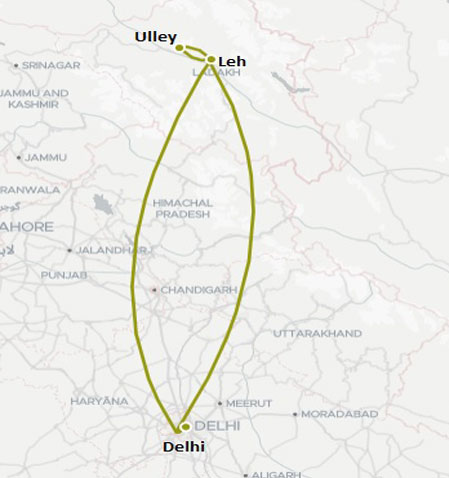
Get amazed by diversity, culture, incredibility
Meet and greet on your arrival in Delhi. You will be received by an airport staff at the aerobridge. He will then assist you through the immigration and baggage. You will then be greeted by our company representative, as you walk out of the airport. He will accompany you to the car and transfer to your hotel close to the airport. Rest of the day at leisure at the hotel Overnight at Roseate House – Deluxe Room
Delhi / Leh
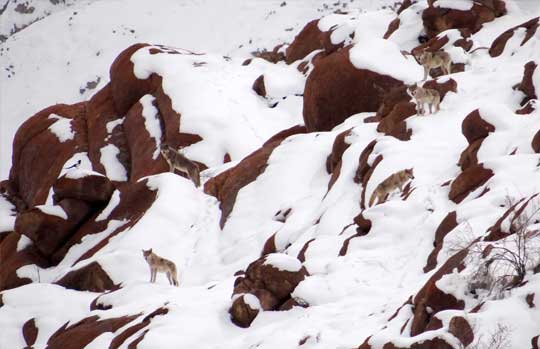
Welcome to roof of the world - Ladakh
Transfer to airport in time to board flight to Leh Leh is situated at an altitude of 3500 mts and is the capital of the once ancient Himalayan kingdom of Ladakh. Spend the day acclimatizing in the hotel as your body needs to adjust to the low oxygen levels. Overnight at The Grand Dragon – Standard room
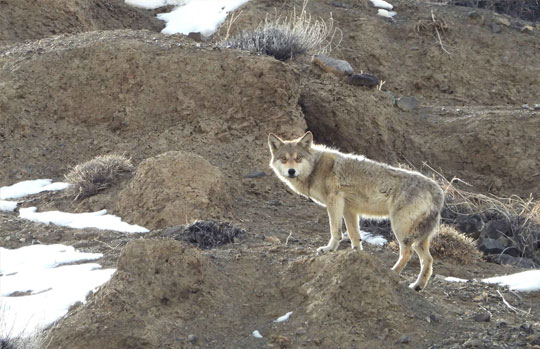
Explore cultural highlights & acclimatize
Guided tour to the monasteries of Shey, Thiksey & Hemis monasteries to give you an experience of Tibetan Buddhism which has been prevalent since centuries. Reach the hotel for Lunch and if necessary head to the market to buy any last minute essentials for the trek. Overnight at Grand Dragon - Standard room
Leh / Ulley
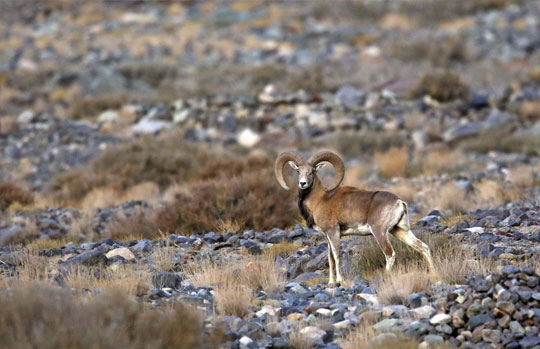
Adventure begins
(From this day onwards the itinerary depends on the movement of the Snow Leopard and thus the itinerary has to be very flexible as we trek and camp depending on the movement of the cat) We may move into other valleys of Saspoche/ Hemisshukpachen After an early breakfast head to Ulley in Western Ladakh. Enroute you will come across the confluence of Zanskar & Indus river. At Nimoo you can stop for a Tea break and the head west wards to visit the Likir Monastery. The total drive time will be 3-4 hrs. Ulley is situated and an altitude of 4100 mts. It is essential to again rest at Ulley for atleast an hour before attempting any physical activity. Overnight at Ulley Homestay or Snow Leopard Lodge.
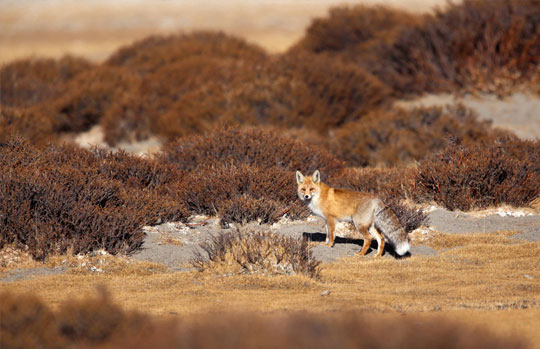
Scouting for Snow Leopards
Early morning scouting for Snow Leopard signs and possible sightings just above the homestay. The homestay has magnificent views of the valley and one can easily look at the ridge lines for almost 360 degrees. In the past we have had many Snow Leopard, Wolves and Ibex sightings from the homestay grounds. After breakfast hike up to the north towards Ulley Phu. The trek will be about 2-3 hours walk. From higher ground we have better chances of spotting the cat and also tracking any possible movements of the cat. Spend the day scanning the ridge lines of Ulleyphu. Overnight in Husing
Day 8 Ulley
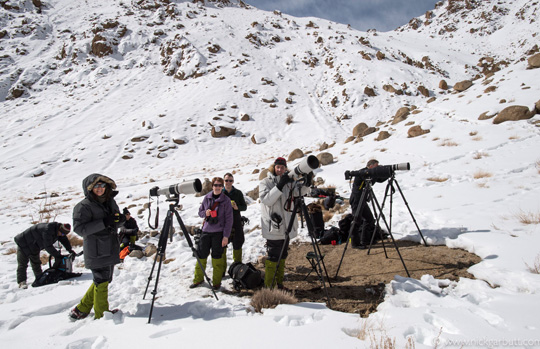
Explore the ridgelines
Early morning scan around the ridgelines of the homestay. Post breakfast we head towards areas that have shown promising indication of snow leopard movement as per our past few days experience.
ULLEY / LEH
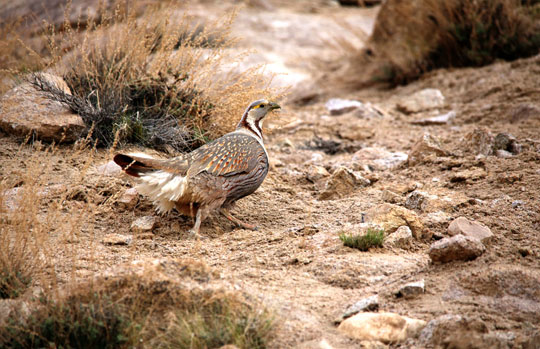
Exploration comes to end
After breakfast drive back to Leh. Overnight at Grand Dragon
LEH / DELHI
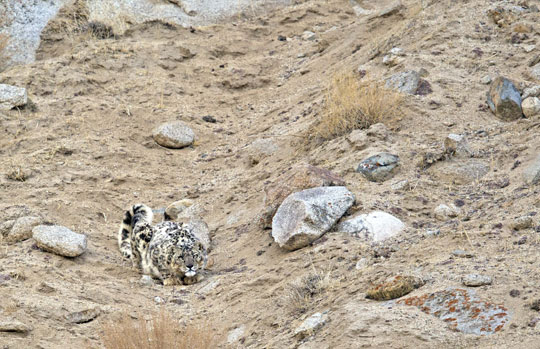
Until next time
After Breakfast you will be assisted to the airport to fly out Delhi. Arrive at Delhi airport and transfer to a hotel close to the international terminal. Day use room will be booked and available to you until your departure later in the evening / night Later transfer to the international airport to board flight for onward destination.

Roseate House
Roseate House New Delhi is a contemporary upscale hotel stationed in the capital’s only hospitality district, Aerocity. Spread across 1.6 acres, Roseate House New Delhi combines lineage and novelty in its design and services to cater to the new generation of cosmopolitan guests. 30 minutes from the business hubs of Gurgaon and Delhi, 20 minutes from the Indira Gandhi International Airport, the hotel renders a contrasting respite from the city’s hustle-bustle. Hotel offers a rooftop infinity pool, a spa and wellness centre and 3 dining options. Each room is equipped with state-of-art amenities, a 4-fixture bathroom, flexible workstation and flat-screen TV.
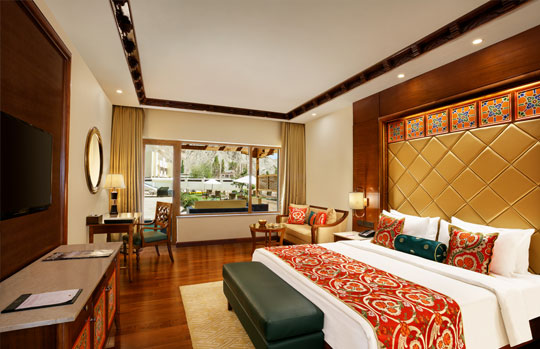
The Grand Dragon
The Grand Dragon Ladakh, one of the first luxury hotels in Ladakh, is owned and operated by the Abdu family from Leh, who have more than 40 years of experience welcoming visitors. It is decorated magnificently with handmade paintings by Gulam Mustafa (First modern Artist of Ladakh) and fixtures that are reminiscent of royalty. It is the first hotel with a host of state of the art amenities, such as electronic key cards for the rooms and a baggage scanner, as well as their own sewage treatment facility. The entire facility is wheelchair accessible, for providing differently abled guests with a comfortable sojourn. The hotel is also centrally heated and solar powered, not only ensuring warmth but also ensuring that all our services are eco-friendly.
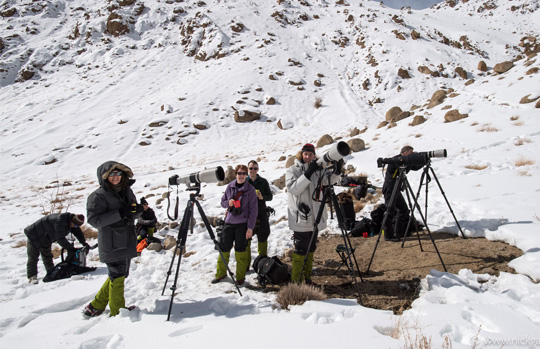
Snow Leopard Lodge
Snow Leopard Lodge is located at just under 4,000 metres above sea level in the remote Ulley Valley. The lodge is simple but provides everything you need to explore this spectacular area in comfort. This rustic and comfortable lodge has 4 king size suites, 3 with their own separate lounge areas. These are built separately from the main house where your local Ladakhi family hosts live. The area surrounding the Snow Leopard Lodge has only recently been developed and explored for snow leopard watching and has the benefit of being at the centre of three valleys, under the radar for mass tourism, and known for supporting several snow leopards.
INCLUSIVE OF
Total 3 Nights Hotel in Leh at Grand Dragon in Leh on full board and twin sharing basis
Breakfast in Delhi
Wildlife entry fee for Ulley/ Saspoche
Home stays at Ulley/Saspoche on full board and twin sharing basis
An English speaking guide / spotters throughout the trek
Trek on full board with all arrangements like a guide, a cook, helpers/ scouts
Monastery entrance fee
Airport transfers with assistance
EXCLUSIVE OF:
Visa Fees, Airport Tax or travel insurance
Any flight tickets
Sleeping bags.
Accompanying English speaking full time guide from Delhi to Delhi (Mentioned separately)
Any type of personal expenses like personal medicines, tips and portage at airports, restaurants, hotels, drivers, guides, naturalists, escort etc
Any other meals than those mentioned in the itinerary
Any type of drinks like mineral water alcoholic beverages & cold drinks during sightseeing or during trekking.
Additional cost resulting from delays due to landslides, sickness, flight cancellation etc.
Cost of evacuation by any means.
Additional hotel costs if clients wish to come back to hotel early from the camp
Extra Taxi costs if Clients wish to take alternate additional trips from the group program
Additional cost if clients fall sick and have to be bought to leh for medication and hotel accommodation
Anything not mentioned above
* USD per person, based on double occupancy. Prices are subject to change.
As itineraries are custom-designed for you, the final price will vary. Tour price is also based on the month of travel.
ESSENTIAL REQUIREMENTS TO PRE BOOK NATIONAL PARK PERMITS
Limited numbers of visitors are allowed inside the National Parks. Booking is made on first cum, first-serve basis. Therefore, we would request you to please send us the following information at the earliest to enable us to book game drives or a scanned copy / photo of the relevant pages of the passports.
Protect your travel booking - We recommend travel protection insurance. Between missed connections, lost or delayed luggage, or medical emergencies, you want some peace of mind that your travel investment is well protected. No matter who you buy from, please consider purchasing a travel protection plan before you travel.
WEATHER : Usually sunny days but with dry chilly winds, the temperature can drop to minus Centigrade at nights but will warm up as the sun comes out during the day. December maximum temperature averages 7°C which can fall to -15°C. January and February it can fall to -30°C to -35°C at night.
EQUIPMENT (to be brought by the individual) : High quality trekking gear is difficult, if not impossible; to buy in India, so check the equipment list before leaving home. Please sort out and divide your trekking equipment into three categories:
To wear on the trail
To carry in the day pack
To pack in the duffel bag to stay at Lodge
First Few Days
In case of medical emergencies or high altitude sickness Ulley is within a 3 hrs reach to the government hospitals.
First 3 days is recommended for complete rest and acclimatization to ensure rest of the trip carries off smoothly
The homestays are basic & simple rooms with dry compost toilets
Hot water will be provided in buckets if needed
Personal Spotting Scopes &high quality binoculars are highly recommended to increase the chance of sighting the cat and high altitude birds
Unlike other wildlife sanctuaries, in Ladakh we may go for days without any mammal sightings and patience is the key here
Typical Day:
Bed tea around 6.30 am
Scan the ridge lines from above the homestay till about 7.30 am
Breakfast around 7.30 am
Around 8 am- Head out into either UlleyPhu, orSpangoNala depending upon the movement of the cat and scouting information
Around 12.30 pm – Packed lunch will be bought to wherever we are scanning with Hot Soup, Lunch & Black Tea with Dessert
Post lunch we still carry on scanning and scoping with little movement depending on the cats information.
Around 5pm – we start to head back to the homestay and have a hot cup of tea/coffee
Continue Scanning till it gets dark as there is a good chance the cat may finally move from a day s rest on some vantage point on the ridge line.
Around 6.30 pm – Soup will be served followed by dinner and desserts
At Dinner time the guide will usually sit with the group for some time and discuss the next day’s plan of action along with clarifying any doubts from the clients.
Activities and extensions to consider
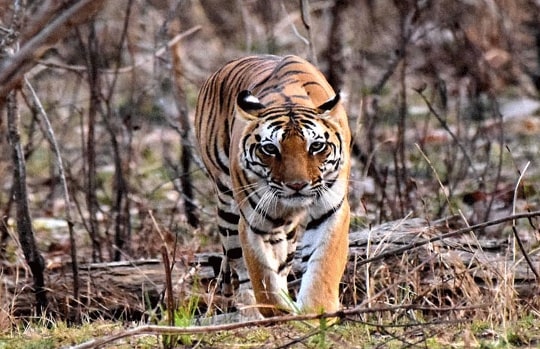
Wildlife Tour
Bandhavgarh
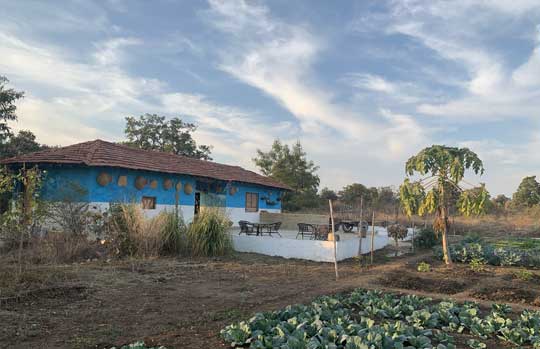
Jungle book cycling
Kanha / Pench
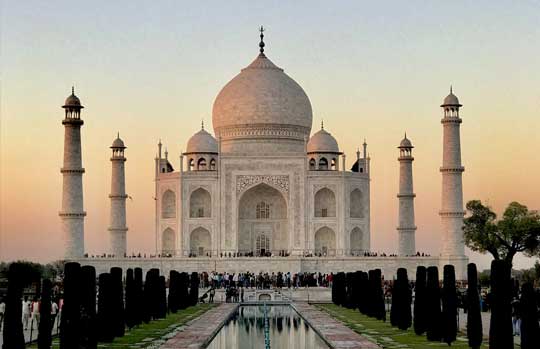
Taj Mahal Tour
Delhi / Agra
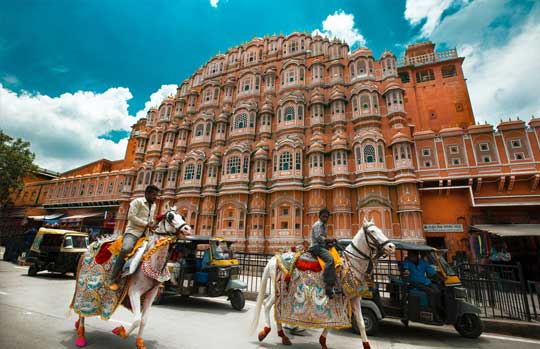
Golden Triangle Tour
Delhi / Agra / Jaipur
Other itinerary ideas you might be interested in
Tiger Tiger Tour
Focussing on Tigers this tours takes you to best places to see Tigers in India - Bandhavgarh, Kanha, Pench and Tadoba
Starting USD 4,000 per person
Tiger and Taj Mahal Tour
This tour takes you to Indias best tiger viewing parks - Bandhavgarh & Kanha plus two world heritage sites for culture - Agra & Khajuraho.
Starting USD 3,000 per person
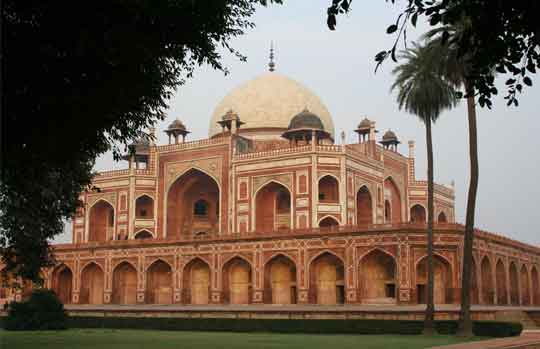
Big Cats of India Tour
Focussing on Big Cats - Lions, Tigers & Leopards this tour takes you to Pench, Bandhavgarh & Satpura in Central India plus Gir in Western India.
Starting USD 4,300 per person
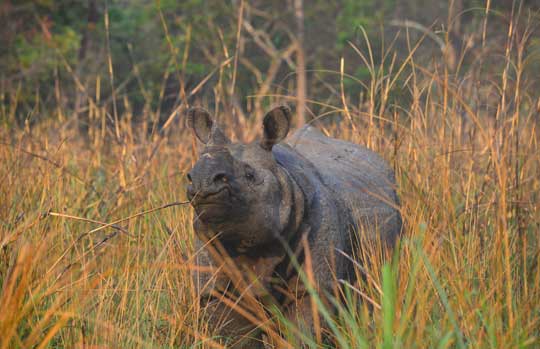
Indias Big Five Safari
Indias very own Big 5 Safari - Tiger, Leopard, Rhinos, Elephants & Wild Buffaloes takes you to Bandhavgarh, Kanha & Kaziranga.
Starting USD 3,500 per person
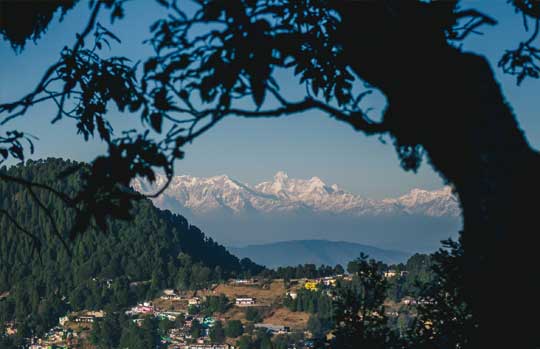
Himalayan Wildlife Tour
Explore Indias oldest National Park - Jim Corbett in the foothills of Himalayas and also head into lower Himalays for bird watching.
Starting USD 2,100 per person
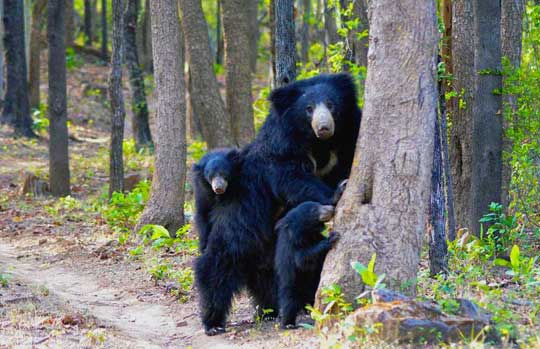
Bears, Leopards & Tiger Tour
Focussing on 3 star species of Central India - Sloth Bear, Leopard and Tiger this tour takes you to Satpura, Pench and Kanha.
Starting USD 3,200 per person
Tiger & Golden Triangle Tour
Indias Golden Triangle - Delhi, Agra and Jaipur clubbed with Ranthambhore, amongst the best places to see Tigers in wild.
Starting USD 1,800 per person
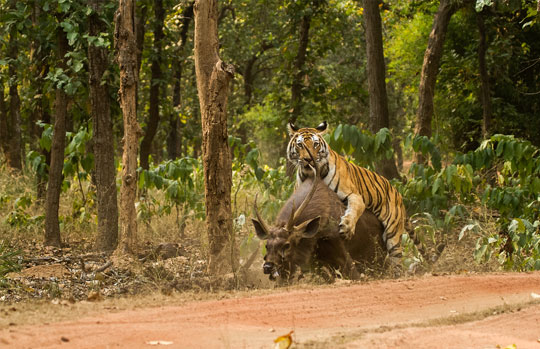
Tigers and Elephants Tours
Corbett, Pench, Tadoba & Nagarhole, this tour takes you to best places to see Tigers and best places to see Elephants in India.
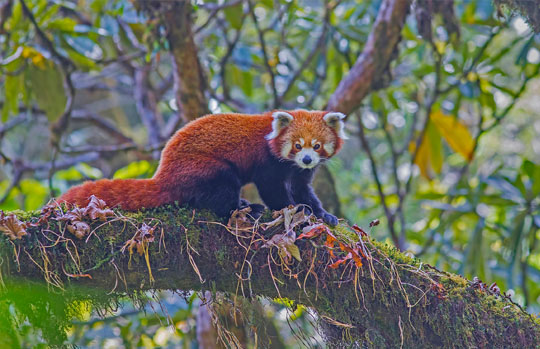
Red Panda Tour
Go in seach of the elusive Red Panda in Singilala National Park in Eastern Himalayas led by expert trackers.
Starting USD 2,200 per person
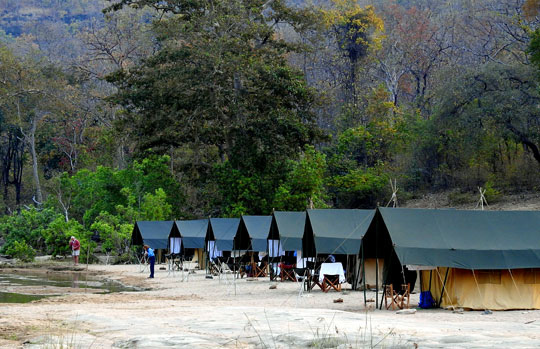
Walking Safaris & Mobile Tour
Trek through Satpura Tiger Reserve and camp in style in Tiger country, ending the trip at Kanha National Park.
Starting USD 4,200 per person
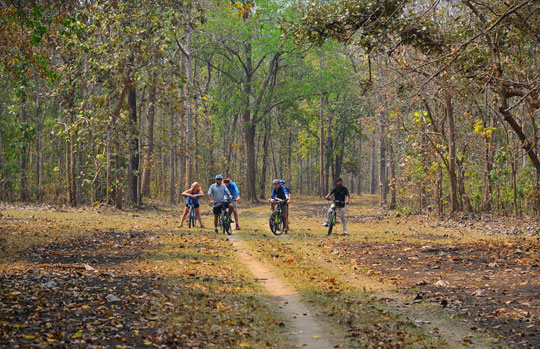
Cycling Safari Tigers & Tribals
Cycle through corridor forests of Pench and Kanha Tiger reserves, camp in style and enjoy safaris on jeep looking for Tigers.
Starting USD 2,500 per person
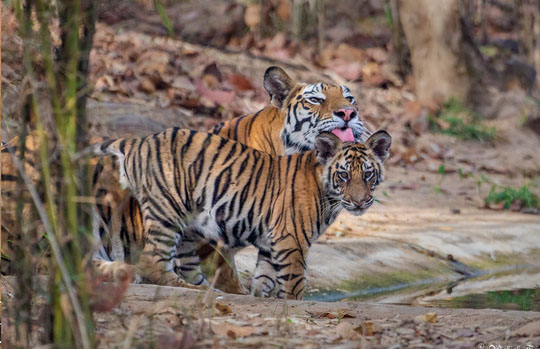
Tiger Photography Tour
Focussing on Tiger photography this tour limits guests to 2 per jeep and takes you to Bandhavgarh, Kanha, Pench and Tadoba
Starting USD 3,800 per person
What you'll receive
Personalized journeys
100% customized journey just for you. Your entire holiday is designed around your requirements. Explore your interests at your own speed & select your preferred style of accommodation.
Expert Planning
Create your seamless trip with the help of our safari specialists. All our advisors have travelled extensively or are local from the region. The same advisors will handle your trip from start to finish.
Local guides
Makes the difference between a good trip and an outstanding one. Handpicked by us as the best available, offering insider information that only local private guide are privy to.
Unbeatable support
Each booking includes 24/7 support. The very same advisors who you have booked your trip is accessible 24/7 during your trip. In case anything comes up and if changes to your itinerary occur, you will receive live updates on your phone.
This sample itinerary is 10 days from $2,700 USD per person* Speak to one of our Safari Specialists to begin planning a customized wildlife trip to India. All aspects of your trip can be adjusted to your liking, whether its activities, hotels, duration of the trip and even places you’ll visit.
Call us at +91-981-002-8849
Or send us a message with our online form:
Extend your holiday by a week to visit premier tiger parks in central India. Search for elusive tigers with expert and knowledgeable naturalists. Learn and explore forest corridors and its importance for dispersal of tigers and maintaining a healthy genetic mix. Stay in eco-friendly award winning lodges
Wildlife tour is recommended in the sample itinerary Snow Leopard Trek Ulley . With every activity that point your interest, we can create a new customized itinerary to your liking just by answering a few questions.
Request a quote
Speak to a Tiger Safari Expert at +91-981-051-4045

Extend you holiday by 06 nights / 07 days to explore by Cycle countryside of Seoni hills that inspired Kipling to write Jungle Book. Visit tribal hamlets where story of Mowgli, feral child is still told. Fully time accompanied by expert cycling naturalists. Ride high quality Mountain Bikers – Trek X caliber 9 – with Race-ready spec. Set off to explore the tiger corridor between Pench and Kanha, which is a part of the Satpura–Maikal landscape. Learn about work been done by conservation organizations to save this critical landscape
Jungle book cycling (Pench / Kanha national parks) is recommended in the sample itinerary Snow Leopard Trek Ulley . With every activity that point your interest, we can create a new customized itinerary to your liking just by answering a few questions.

Extend your holiday by 3 nights/4 days and travel to Agra to visit India’s most famous and romantic monument, the Taj Mahal in Agra and Jaipur, Pink city of India, and its various old havelis, pink buildings in the old city, and palaces & forts that draw attention from tourist all over the world.
Golden Triangle trip can be included before or after the trip to explore Pink city Jaipur and visit Taj Mahal Agra is recommended in the sample itinerary Cycling Safari in Tiger Reserves . With every activity that point your interest, we can create a new customized itinerary to your liking just by answering a few questions.
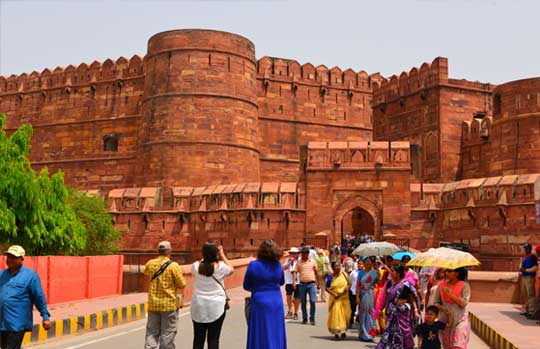
Extend your holiday by 2 nights and travel to Agra. Visit India’s most famous and romantic monument, the Taj Mahal. Agra is around 3 – 4 hours drive from Delhi on a good expressway that makes travel quick and comfortable.
Taj Mahal visit can be included before or after the trip in the sample itinerary Cycling Safari in Tiger Reserves . With every activity that point your interest, we can create a new customized itinerary to your liking just by answering a few questions.


Snow Leopard Trek
- Book the tour
- Trekking in Ladakh
Snow leopard trek is the voyage inside the snow leopard capital of India called Rumbak. This trek is less of a traditional trek but a journey into wildlife spotting which requires less trekking stamina and more passion, patience, and luck to spot the wildlife in their natural habitat and natural form. The snow leopard trek is a passion for innumerable wildlife experts, nature enthusiasts, and animal nerds across the globe.
Snow leopard trek Ladakh is not led by a trek leader as in traditional trekking, but by an expert who takes you inside the snow-filled mountainous regions of Ladakh to spot the rare and fascinating species of animals like the snow leopard. The trek requires patience, passion, a sharp eye, and most importantly luck to spot the rare Himalayan cat called the snow leopard. It requires less of your stamina and endurance as required in traditional trekking.
In the Rumbak valley where this trek voyage of the snow leopard is done, the valley has a blend of rocky mountains, ice-layered river streams, and towering peaks. Along with Rumbak valley, there are two spots where you will be able to spot rare species of animals like pica, blue sheep, Tibetan wolf, golden eagle, etc. Those places are Hussing point and Tarbung valley. Snow leopards are a national sensation among animal lovers.
This Himalayan cat is found only in 5 regions in India. On the snow leopard trek, you will have resting points at each location where you can immerse yourself in the quietness of nature while eyeing the rare animal species here. The snow leopards come down to these valleys for mating and hunting mostly The temperature here is extremely low and goes below zero.
This is a winter trek that is done in the middle of the winter from December to March. The snow leopard trek does not require us to trek for hours together or to cross the high altitude passe or gruesome descents of Ladakh treks. However, you will have to wait at particular spots for hours and days together to wait and spot the snow leopards.
It all comes down to luck. If you are lucky enough you might spot all the animals, if luck is not on your side, you will find yourself only waiting and straining your eyes.
Having said all, it is pertinent to mention that this trek does require some fitness level. You will have to trek some steep and short distances and in the snow, you need to have the basic skills which can be taught while on the trek. The sub-zero temperatue is the main challenge you will have to face here.
Proper layering of clothes and the right gear is the most essential thing here in the Snow leopard Ladakh trek.
Itinerary of Snow Leopard Trek
The itinerary of the snow leopard trek expedition is not a usual trek itinerary. Most of the days you will spend in one area and leaving each day to explore and see the snow leopard and other animals in the snow-covered landscape of Ladakh.
Day 1: Spituk – Zingchen
- Time:5hrs Distance:15.7km Elevation gain / loss: +375m / -161m
Note: Take a tour of Spituk monastery before you leave for the snow leopard trek. You must the Indus river’s south bank until you reach our destination of Zingchen.
Day 2: Zingchen – Rumbak
- Time:2-3hrs Distance:6.5km Elevation gain / loss: +555m / 0m –
On this day you will go into the Hemis National Park. You will be traversing the slim gorge that leads to Rumbak village – You will have s homestay for the night stay.
Days 3 to 7: Rumbak valley Exploration
These are the days you will be looking for snow leopards. These are the days of patience and a long wait for the view of this Himalayan cat and other varied birds and animals. On these days our expert guides will lead you to different spots where the chances of viewing the animals are more and quite bright.
Day 8: Rumbak – Zingchen – Leh
- Time: 3hrs Distance: 7km Elevation gain / loss: 0m / -555m
This is the last day of your snow leopard trek. You will have a short walk until you reach Zingchen and then you will drive to Leh. Cherish the unforgettable memories of the Snow leopard trek for your life.

You May Also Like

Rumtse to Tso Moriri Trek

Sham Valley Trek

Markha Valley Trek
- &BEYOND LODGES
- South Africa
- Flying solo
- With my partner
- With my family
- Adventurous
- Responsible Travel
- Private Travel
- Slow Travel
- TRAVEL TRADE PORTAL
- MANAGE YOUR TRAVEL BOARD
- From USD 7,202
Snow Leopard Expedition
Traverse the awe-inspiring himalaya region of ladakh in search of the elusive snow leopard and other iconic wildlife. .
Delhi, Leh, Rumbak Valley
- Indian Ocean Islands
- South America
- Central India
- North India
- Haridwar and Rishikesh
Join a group of max 8 like-minded travellers on this set-departure journey
Privately guided and hosted by local specialists and skilled guides, track the elusive snow leopard and learn more about its important conservation, trek the himalaya in search of other wildlife like the ibex and bharal, meander through bustling cities, exploring ancient sites and temples, surya ramachandran – specialist guide.
Surya is an engineer from the south-Indian city of Chennai who later pursued his passion for the wild . His jungle journey commenced in the forests of Satpura at Forsyth Lodge, where he started as an intern and then later turned into a fulltime naturalist. His interests vary to all types of life forms, especially the lesser fauna of the region and their microhabitats. His vehement enthusiasm led to pioneering c entral India’s first walking safari, various canoeing excursions , wilderness camping opportunities and night drives at Satpura . His love for wildlife and eagerness to learn has led him to explore India’s special and rare mammals, birds, reptiles and butterflies. Surya enjoys the idea of guiding and explaining the little secrets of the jungle to others rather than just seeing it for himself.
Your journey at a glance
This incredible 11-day winter expedition* through some of india’s most remote destinations sets out in search of the elusive snow leopard and other incredible himalaya wildlife..
The Trans-Himalayan region of Ladakh is one of the last frontiers for wildlife tourism. The isolated barren wilderness of Ladakh with its snow-capped Himalaya mountains, bright blue water lakes and ever-changing sand dunes remind you that you are at the ‘Roof of the World’. A winter trip meets the elements head-on in a breathtaking yet, at times, bleak landscape in the high-altitude cold desert Ladakh region. But within these high valleys created by folds of the great Himalaya is perhaps the highest density of the most elusive of the great cats – the snow leopard. Its very name evokes all that is most wild and mysterious in nature – for this is an animal that comes cloaked not only in the subtle beauty of its coat but also in all the high drama of the harsh and magnificent environment that it dominates.
Guided by one of the most seasoned snow leopard guides in the industry, you will not only gain invaluable insights into the region’s breathtaking wildlife but also receive profound understanding of the area’s cultural heritage and its people during this 10-night adventure.
Visit the Snow Leopard Conservancy and learn about the efforts made by the local authorities, and community, to conserve this endangered species. Set out as a group of maximum 8 explorers in search of the elusive snow leopard, and explore the surroundings valleys, which are also home to other unique wildlife including wolf, lynx, ibex, bharal (blue sheep), shapo, argali and Tibetan hare. An attractive contrast also lies between the rugged, stone-hard mountain people of the area and the gentle and compassionate Buddhism that they practice. During your journey, you will have ample time to explore some of the region’s magnificent monasteries and picturesque villages. You’ll also have the opportunity to engage with the small Tibetan farming communities and witness their daily lives, as they inhabit isolated villages nestled along the valley floors.
*A USD 1,500 group donation will be going to the Snow Leopard Conservancy in Leh, an initiative that fights for the survival of the species.
1 night New Delhi | 3 nights Leh | 6 nights Rumbak Wildlife Lodge
TAILORMAKE YOUR STAY
Talk to one of our travel specialists to tailormake you stay to any of our destinations
A taste of what to expect
Day 1 | arrival.
Trident Hotel Gurgaon
- Upon your arrival in bustling Delhi at Indira Gandhi International Airport , you will be warmly welcomed by a representative from &Beyond who will personally assist you through customs and immigration and the baggage collection process.
- Afterwards, you will be chauffeured to the Trident Hotel Gurgaon.
- Located approximately 20 minutes from the airport, Trident Hotel Gurgaon is conveniently close to a range of magnificent city attractions. A mixture of lively international metropolis, medieval chaos and regal splendour, New Delhi is crammed to bursting point with tombs, temples, monuments and ruins, all of which exist side by side with modern suburbs and glass and chrome skyscrapers. If time allows, enjoy some of the sights and sounds of India’s capital city.
Grand Dragon Ladakh
- After breakfast, you will be met by a representative from &Beyond and transferred to the airport for your flight to Leh in Ladakh.
- Upon arrival at Kushok Bakula Rimpochee Airport in Leh, you will be met by your expedition leader and transferred to your hotel, The Grand Dragon Hotel (an approximate 10-minute drive) where you will be staying for the next two nights.
- Recognised as one of the most remote places in the world, Ladakh’s extraordinary landscapes and Buddhist culture and history makes it unlike any other place in India. Sparsely populated with huge and expansive mountains, Ladakh is a cold desert that has one of the world’s greatest rivers flowing through it – the Indus.
- Leh is the capital of Ladakh, it is the largest town in the region and houses the only airport in the area. Dotted with stupas and crumbling mud-brick structures, the old town is extremely enchanting with an abandoned Tibetan-style palace and fort previously occupied by the king who was overthrown. Below this is the bustling main bazaar with shops selling trekking gear, Tibetan jewellery, and dry fruits among many other things along with a few restaurants and tour operators. There are also several fabulous monasteries perched on mountain tops that are a few kilometres away from the city.
- As Leh sits at 3,474 m (11,400 ft), it is a great place to gently acclimatise to the high altitude without over-exerting yourself. Spending two and a half days here is the minimum medical requirement as you will soon be travelling to a higher altitude where you will be doing a fair amount of walking.
- Today you will explore the ancient town of Leh, a fascinating labyrinth of winding streets and quaint bazaars. Enjoy the unique culture – Leh is very Tibetan; the national dress, ‘stovepipe’ hats and felt boots with turned-up toes are evident wherever you look. Visit the Royal Palace, which dominates the town, and is very reminiscent of Tibetan Buddhist monasteries.
- You will also meet the staff from the Snow Leopard Conservancy for a short briefing on the history o f snow leopard conservation in Ladakh. Here you will gain an insight into the current threats that snow leopards face and the strategies adopted to combat these threats.
- Weather depending, set out for an extraordinary drive east heading towards Taglang La Pass to the gorges of Gya, Lhato and Meru. It’s a fantastic drive taking you away from the valley of the Indus and up a subsidiary valley to an extraordinary area, even by Ladakhi’s standards, that marks where the Indian mainland collided with and drove under the Asian land mass. The scenery is dramatic, and you have a chance of sighting wildlife including blue sheep, golden eagle and bearded vulture. Rafts of red-billed chough perform synchronised aerobatics and in the fallow fields you have the chance of seeing the very beautiful Tibetan partridge and the more common chukar partridge.
- Time permitting, discover the Thiksey Monastery on the way back, the most beautifully situated monastery in Ladakh perched high on a hill above the Indus. Located on a hill-lock with formidable views of the Indus Valley, Thiksey is especially noteworthy for its gigantic, seated statue of the Maitreya and is also known for its assembly hall (Dukhang) which houses hundreds of rectangular prayer books, stacked between wooden covers, and bound in silk.
Rumbak Village (Rumbak Valley)
House of Rumbak Wildlife Lodge
- Following breakfast at the hotel, set off on a scenic one-hour drive to Rumbak Village, which is well-known for numerous sightings of the snow leopard.
- Drive past Zingchen Village, home to only two or three households, driving further off road before crossing a wild stream as the terrain starts getting more rugged. Soon after passing an empty office and crossing over a small bridge adorned with Buddhist prayer flags, you’ll reach base camp just below Rumbak Village – your final destination.
- Enjoy a traditional Ladakhi welcome before checking in at the House of Rumbak Wildlife Lodge. This is where you will be staying for the next six nights.
- Nestled in the remote wilderness of Ladakh, the House of Rumbak Wildlife Lodge is an undiscovered gem located on the periphery of Hemis National Park, deep within the heart of snow leopard territory. Standing as an oasis of tranquillity this yet unexplored area of Ladakh offers wildlife enthusiasts and adventurers the opportunity to spot the elusive snow leopard in its natural habitat. The region is a treasure trove of surprises, with a rich tapestry of wildlife that includes rare bird species and diverse animal life.
Day 5 – 9
Rumbak village (rumbak valley) .
- Over the next five days your experts guides will take you to quaint and remote places such as Kharlung Valley, Hosing Valley and Tarbung Valley and towards Rumbak and Yurutse Village, all in search of the snow leopard. This is officially their land.
- Smaller valleys and villages intersect this area, and your guides will have their heads craned at all times, scanning the hillsides and skyline for any predatory silhouettes.
- Apart from snow leopard, these areas are great for finding bharal, urial, wolf and Himalayan fox. It’s also excellent ibex country and there are few more evocative sights than a magnificently horned male ibex standing vigil on an impossibly narrow outcropping, a few thousand feet over a plunging cliff.
- With the guidance of experienced spotters and high-quality optics, every day is filled with anticipation as you seek these magnificent creatures through the rugged terrain.
- Your guide and spotters will interact closely with local communities , using their network of intelligence to narrow down the likely sites of where these elusive big cats may be hiding .
- During this time, there will also be plenty of opportunities to engage and interact with the people from neighbouring communities learning more about the region’s folklore as well as local customs and traditions.
Grand Dragon Hotel
- This morning, after breakfast, you will be driven to Leh (an approximate 1-hour drive).
- Upon arrival, you will be driven to your hotel, The Grand Dragon Hotel where you will be staying the n ight.
- Enjoy the remainder of your day at leisure.
Day 11 | Departure
- After breakfast, you will be met by a representative from &Beyond and transferred to Kushok Bakula Rimpochee Airport for your flight to Delhi.
- Upon arrival at Indira Gandhi International Airport, you will be met by a representative from &Beyond and transferred to Trident Hotel Gurgaon, where you can freshen up before your on ward flight later this evening or tomorrow morning, depending on your flight timings .
Departure dates
2024 and 2025.
10 to 20 December 2024
10 to 20 February 2025
26 February to 08 March 2025
05 to 15 April 2025
18 to 28 April 2025
- All meals and accommodation as mentioned in the itinerary
- Internal flights in economy (baggage allowance 20 kg (44 lbs) per passenger) - guests can pre-purchase excess baggage on request at an additional cost
- Day 1 night at Trident Hotel Gurgaon in Delhi on Bed and Breakfast Basis
- All sightseeing activities in Ladakh as mentioned in the itinerary
- Entrance fee for monasteries as mentioned in the itinerary
- Transportation for snow leopard sightings
- Donation fee for snow leopard conservation
- Services of a tour leader from Day 2 to 10 in Ladakh only
- Day 2 picnic lunch
- In-house naturalist while staying at Rumbak
- Wildlife spotters while staying in Rumbak
- Spotting scopes
- Bottled mineral water in hotel and lodge rooms as well as during sightseeing excursions
- Boiled filtered water while trekking
- Basic first aid kit with oxygen cylinders
- Any International airfare / airport taxes
- Any change in tax structure resulting from the hike in published tariff
- Any expenses of personal nature including alcohol, laundry, gratuities etc.
- Medical / Travel Insurances
- Any expenses arising due to unavoidable circumstances beyond our control
- Cost incidental to any change in the itinerary / stay on account of flight cancellation due to bad weather, ill health, roadblocks and / or any factors beyond our control
- The rate is based on a minimum of 4 guests travelling and a maximum of 8 guests - should the number of guests be less than 4, we would need to re-quote
- Check in time at the hotels is 13h00 and check out time is 12h00 (noon)
- The quote is per person and based on sharing the same room
- Single room will attract a single room supplement
- Transport in Delhi and Leh will be in Toyota Innova car
- Air fare for internal flights is based on present schedule fare in economy class and is subject to increase .
- This offer only applies to the hotels specifically mentioned in the itinerary
- Rates are subject to change
- &BEYOND trading terms apply
Stay here on this journey
Why visit india, india is a fascinating and varied destination with a staggering selection of experiences and highlights for every traveller., discover india, frequently asked questions, i dream of travel that leaves our world a better place.
You’re just 5 easy (and fun) steps away from creating your ideal Travel Dream Board.
Step 1: Start with where
Step 2: Clarify what kind of traveller you are
Step 3: Tick off those grand bucket list experiences that will fire your imagination
Step 4: Log in to create and add to your Dream Board
Step 5: Share & start dreaming
Leaving our world a better place for years
Discover the impact legacy that your travel with &beyond is driving. just as the un’s sustainable development goals have been a touchstone for our vision 2020 group-operation sustainability audits, so they continue to guide and underpin our ambitiously scaled vision 2030 goals., we're sorry but this site doesn't work properly without javascript enabled., please enable it to continue., privacy overview.

1-800-741-7956 North America . 0808-234-1714 United Kingdom . 1-416-588-5000 Worldwide . 1-647-945-8807 Fax

Overview Detailed Itinerary FAQ's Dates & Prices All India Trips
Snow leopards of india.
• Rare and unique opportunity to see the elusive snow leopards in their natural habitat • Visit the Snow Leopard Conservancy • Living with a Ladakhi family in the depths of winter • Excellent trackers and spotters for superb high-altitude wildlife experience
• 12 land days • Starts and finishes in Delhi • All meals included (starting on Day 2) • 2 internal flights included • Combines with Lions and Tigers tour • Activity Level: 3
FROM: $7,4 95 USD
D ates, prices & availability.
ACCOM MODATIONS
Comfortable lodge with
en-suite bathrooms in twin-bedded rooms. En-suite bathrooms
have no running water due to constant freezing temperatures. Toilets are western style with ‘bucket flush’.
Rooms have electric heaters and at night hot water bottles are used to warm up the beds.
COMFORT NOTES
1 - 2 hours of walking distributed
throughout the day (some hilly terrain) at your own pace • 3 days at 11,000 ft/3400 meters & 6 days at 13,000
ft/4000 meters • Day time temperatures 5C/35 F • Nighttime temperatures 0 to -15C/32F-5F

India - the land that evokes flights of imagination and curiosity, a canvas of spectacle and color ruled by a succession of native kingdoms, and often overrun and inhabited by invading armies of Central Asian origin, followed by the Mughals and finally the British. Transformation has been never ending and the results are deeply and visibly etched in today’s milieu. As winter sets into the Trans-Himalayan region, we cast our sights on Ladakh in search of the elusive ghost of the Himalayas – Shaan in Ladakhi a.k.a. the snow leopard. Like the tiger, it’s a territorial feline. Watching two snow leopards fighting ferociously with one another is a once-in-a-lifetime moment — a true collectible for a wildlife lover or photographer’s treasure trove. But regardless of whether you capture it with the naked eye or with your lens, this feline is captivating. As it raises its head to look at you, you’re transformed. Ladakh, in the Indian Himalaya, is one of the best areas to see the elusive snow leopard and it is from here that we set out. It is not only about the snow leopards as there are a host of other animals and birds to see, apart from the scenery and getting to know more about the people that live here.
Detailed Itinerary
Dates & Prices
All India Trips
Click the PDF icon to download the Snow Leopards of India detailed itinerary
DAY 1: ARRIVE IN DELHI
You will be met upon arrival in Delhi and transferred to your hotel. Delhi, the capital of India, is a city that offers a glimpse of both ancient and modern day India. It is the third largest city in India and one of the fastest growing in Asia. This city is rich in culture, always changing with time but never hiding its splendid past. Overnight in Delhi.
DAY 2: FLY TO LEH
After breakfast, transfer to Delhi airport for our flight to Leh. Remainder of the day is at leisure for acclimatization to the high altitude. We have just landed at 11,000 ft/3400 meters, hence no matter how fit you are, young or old, Day 1 and 2, have to be taken at a very slow pace. If your body allows, a stroll in the markets of Leh post lunch, as it is important that we keep the body moving to a certain extent for blood to circulate. Overnight in Leh.
A day at leisure for proper acclimatization. It is very important, to move slower, drink lots of water / tea, and not to put too much stress on the body. We want to be in proper shape when exploring the Himalayas. If at all interested in walking, it should be bare minimum and one can visit one of the several possibilities like Sankar Gompa, Shanti Stupa & Leh Palace. There will be an opportunity to visit Thiksey Monestary in the morning and possibly participate in the morning prayers. We say possibly, because it all depends on how your body acclimatizes. Near the monestary there is opportunity to do some birding and possibly look for the ibis bill. We will also visit the Snow Leopard Conservancy, who we proudly support in the Ladakh region. Their exceptional work to reduce human animal conflict in snow leopard country has been remarkable. We will get a brief presentation on their work. For those interested in photography, we will head over to Leh Palace right before sunset in order to photograph Shanti Stupa from a distance, especially when it lights up in the evening. Overnight in Leh.
DAY 4: LEH - ULLEY
Today we drive west (2-3 hrs) on the road to Kargil and Srinagar, generally following the Indus River. We pass through the small town of Nimmu – one of the most important in Ladakh, where the Zanskar River meets the Indus. After a little over an hour we head north on a road marked to Likir – one of Ladakh’s famous Buddhist monasteries. This is all snow leopard country. The landscape here is even bigger, more expansive and open, until you turn off onto a dirt road, winding up a narrow valley, following a stream called the Ulley Chhu. Smaller valleys intersect and the guides have their heads craned all the time, scanning the hill sides and the skyline for any silhouette. This is excellent ibex country and there are few more evocative sights than a magnificently horned male ibex standing vigil on an impossibly narrow outcropping, a few thousand feet over a plunging cliff. Ulley village, west of Leh, is an area that is only recently being developed for snow leopard watching. You will be staying at Snow Leopard Annex, which apart from being more comfortable than camping out in sub-zero temperatures, puts money directly into local hands and strengthens the constituency of the snow leopard. This will be your base for your stay searching for snow leopards and other high altitude wildlife. The Annex is built with a dining room, lounge and kitchen – all in the same low stone built building. We will have our own cook and camp staff with an assortment of important luxuries like extra gas heaters, warm shower and bathroom, comfortable mattresses, linen, an assortment of coffees, teas, snacks etc. that go a long way to alleviate the cold and the altitude. Add to this the interest of living with a Ladakhi family in the depths of winter and understanding their lifestyle and you have a very special experience in store - especially sharing the large and warm kitchens that are the heart of a Ladkahi home in winter and resplendent with brass, copper and silver ornaments. Overnight at Snow Leopard Annex.
DAY 5 - 9 : ULLEY
Snow leopards are some of the most elusive big cats remaining in the world because they live in such remote areas of Central Asia. There are thought to be between 3,500 and 7,000 snow leopards left in the wild. Due to the rugged terrain of the Himalayas, most of the herbivores are related to the agile footed sheep and goats. They can move easily through the mountainous regions of the Himalayas from one pasture to the next. During the winter months the ibex move down to lower altitudes where there is food, and they are followed by the snow leopards and other predators like the Tibetan wolf. These ungulates form the primary snow leopard diet and it is through the movements of these ungulates and trails left by snow leopards moving across habitats that one can improve the chances of seeing the snow leopard in its natural environment. Every day we head out in different directions to track this grey ghost. Other than snow leopards, the area has good number of species like the yak (wild ox), ibex, Tibetan wolf & red fox. From the house and its terraced fields you command a superb view across the valley and are almost certain to see ibex from here, and if you are lucky, many other wildlife species including wolves, red foxes and perhaps even snow leopards. Settle in on arrival and acclimatize to the higher altitude of Ulley. You will be based here and the advantage of Ulley is that it is relatively free of tourism. Staying in at the Snow Leopard Annex is the simplest way of looking for snow leopards, allowing you complete flexibility as to the number of days you want to spend and requiring none of the elaborate preparations that you need to camp out. Add to this the exceptional tracking skill of the guides, and this makes for a truly superb high-altitude wilderness experience. Over the next few days you explore the area on foot and vehicle with tracking guides. Overnight at Snow Leopard Annex.
DAY 10: ULLEY - LEH
After a leisurely breakfast, we drive down to Leh (2-3 hrs). Overnight in Leh.
DAY 11: LEH - DELHI
After breakfast, we transfer to Leh airport for our flight to Delhi / Jabalpur. Upon arrival, transfer to the hotel in Delhi. Overnight in Delhi.
DAY 12: DEPART DELHI (or continue on to Lions & Tigers of India tour)
Depart Delhi for international flights home or continue on to ElderTreks Lions' and Tigers of India tour.
F.A.Q's
HOW BIG ARE THE GROUPS?
Each group is limited to 16 participants. Small groups are an important ingredient in adventure travel. They allow for more interaction and more personalized service throughout the itinerary.
WHAT IS INCLUDED IN THE TOUR PRICE?
All accommodations throughout on a double/twin sharing basis; all meals, starting with on day 2 and finishing with breakfast on departure day (i.e. the last day of the tour); bottled drinking water throughout the trip; internal flights, transfers and transportation, Indian Tour Leader, trackers, wildlife experts, local guides, tips (except for Indian Tour Leader), national parks, monastery and entrance fees.
Please note that seeing a snow leopard is not in any way guaranteed. In fact it must be regarded as a great privilege to even catch a glimpse of one; such is the elusiveness of these creatures. They are wild and by necessity elusive creatures with no fixed routine and finding them requires not only the skill and patience of the trackers/guides but also considerable luck!
WHAT IS NOT INCLUDED IN THE TOUR PRICE?
International flights, tip to Indian Tour Leader, alcoholic drinks, visas and travel insurance. It is encouraged to make a contribution to the Snow Leopard Conservatory who help work with communities in the Himalayas to secure snow leopard habitat. We will have the opportunity to witness their work first hand in Ladakh. (Suggested amount $200 pp – or whatever amount you are comfortable giving.)
ARE THESE “EDUCATIONAL” TOURS?
Yes, in the broadest sense of the word, “educational”. We visit a remote region in northern India and stay with a family in Ladakh during their winter season. Our guides and spotters provide ample information about the Snow Leopard and surrounding wildlife. But this is only a portion of the educational experience. We believe that it is equally educational to meet local people on a non-commercial basis, stay with an Indian family and even try
to learn a few words in Hindi. Sometimes the most “educational” moments are spent sipping a drink in a street market.
HOW DO WE TRAVEL DURING THE TOUR?
All local transportation, including 2 domestic flights, is included in the land price of the trip. Most of the transportation is by bus.
WH AT ARE OUR ACCOMMODATIONS LIKE?
We stay in good accommodations in Delhi and Leh. We have the unique opportunity of staying at the Snow Leopard Annex. The Annex is built with a dining room, lounge and kitchen – all in the same low stone built building. We will have our own cook and camp staff with an assortm ent of important luxuries like extra gas heaters, and bathroom, comfortable mattresses, linen, an assortment of coffees, teas, snacks etc. that go a long way to alleviate the cold and the altitude. Add to this the interest of living with a Ladakhi family in the depths of winter and understanding their lifestyle and you have a very special experience in store - especially sharing the large and warm kitchens that are the heart of a Ladkahi home in winter and resplendent with brass, copper and silver ornaments. Note: there is no running water in the taps, only bucket water.
WHAT ABOUT THE WEATHER?
We will be visiting this remote region in the winter time. Expect daytime temperatures around 5C/40F and nighttime temperatures of 0 to -15C/32F-5F
WHEN IS PAYMENT DUE?
A non-refundable deposit of $500 USD (plus insurance if you require it) is due at time of booking and will reserve your place on the tour. Payment of the full land cost is due 120 days before departure. Cancellation charges are applicable and are outlined in the “Terms and Conditions” section of our brochure.
IS MEDICAL INSURANCE REQUIRED?
Insurance coverage is not included in the cost of your trip. Please note that medical insurance is not required for this adventure but is recommended. ElderTreks offers comprehensive travel insurance with Manulife for Canadian guests, and John Hancock for American guests. Please CLICK HERE to view and purchase your insurance policy today. If you are purchasing insurance elsewhere, please ensure you provide the details to ElderTreks as soon as possible.
WHAT SHOULD I TAKE ON THE TOUR?
There is a detailed “What to Take” list in our Trip Kit, which we will send to you after you have booked the trip.
WHAT MEALS ARE INCLUDED?
All meals during the itinerary are included, starting on day 2 and finishing with breakfast on departure day. We eat a variety of local foods in Leh and our cook prepares local dishes while at the Snow Leopard Annex.
CAN YOU ARRANGE MY FLIGHTS?
We would be happy to take care of your air arrangements. ElderTreks offers personalized flight itineraries — not group flights. Stop over en route, come in a few days early, or extend your stay. Call us for a customized itinerary.
WHAT IF I WOULD LIKE MORE INFORMATION?
If you have any further questions about the adventure, please call our office for more details. A Trip Specialist will be happy to answer your questions. A Trip Kit containing further details on the destination will be sent to you once you have booked the trip.
All prices are currently listed in USD
*Single Supplement is the additional amount applied to the cost of the trip to those who are travelling solo and do no t wish to share.
Guaranteed Departures

Click here to view our online Cat alogue
Please note:, eldertreks will not be printing a 2023/2024 catalogue. we will only have an online version..

- Expeditions
- Conservation
India: Tigers & Snow Leopards
- February 9–25, 2025
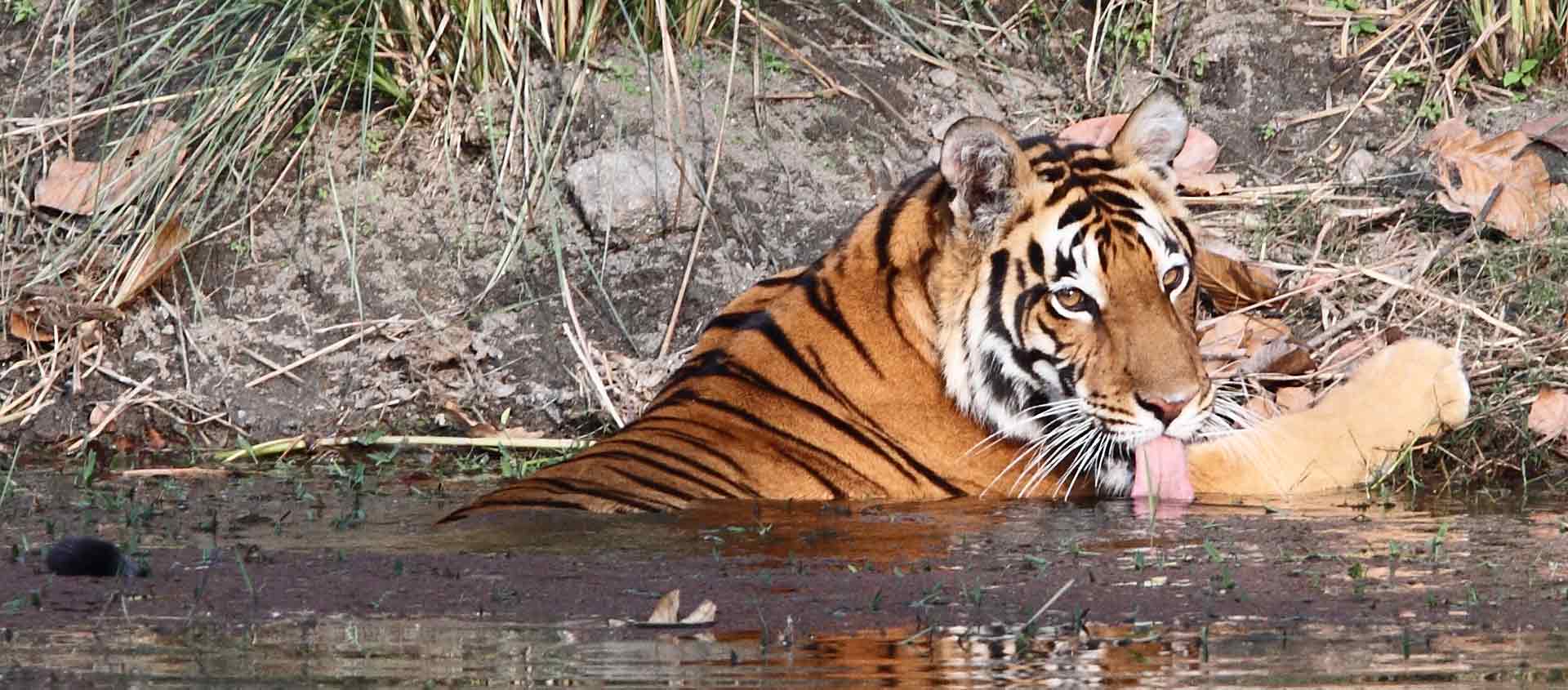
Unlike most members of the cat family, tigers seem to enjoy water and are strong swimmers. © Jonathan Rossouw
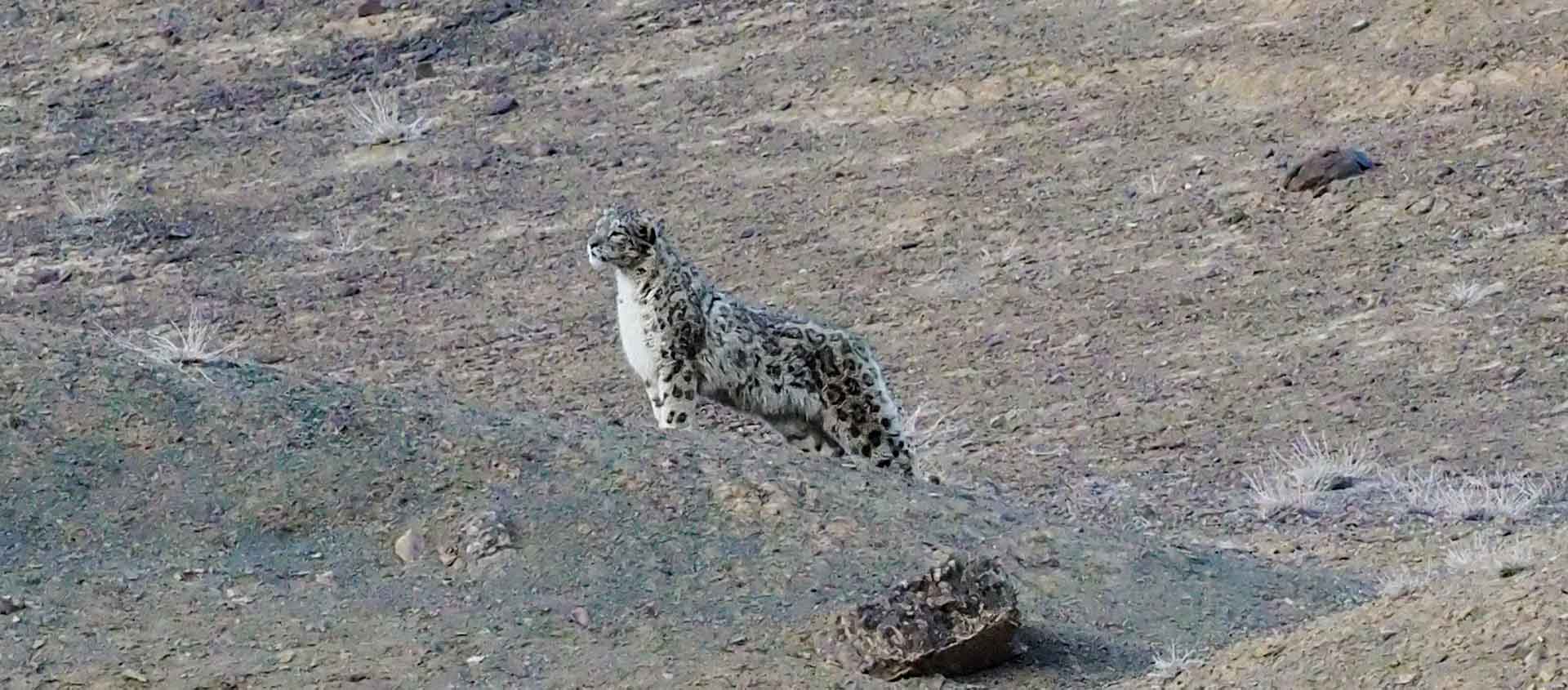
With the densest fur of all big cats, Snow Leopards are specially adapted to frigid, high-altitude conditions. © Liam Rainier
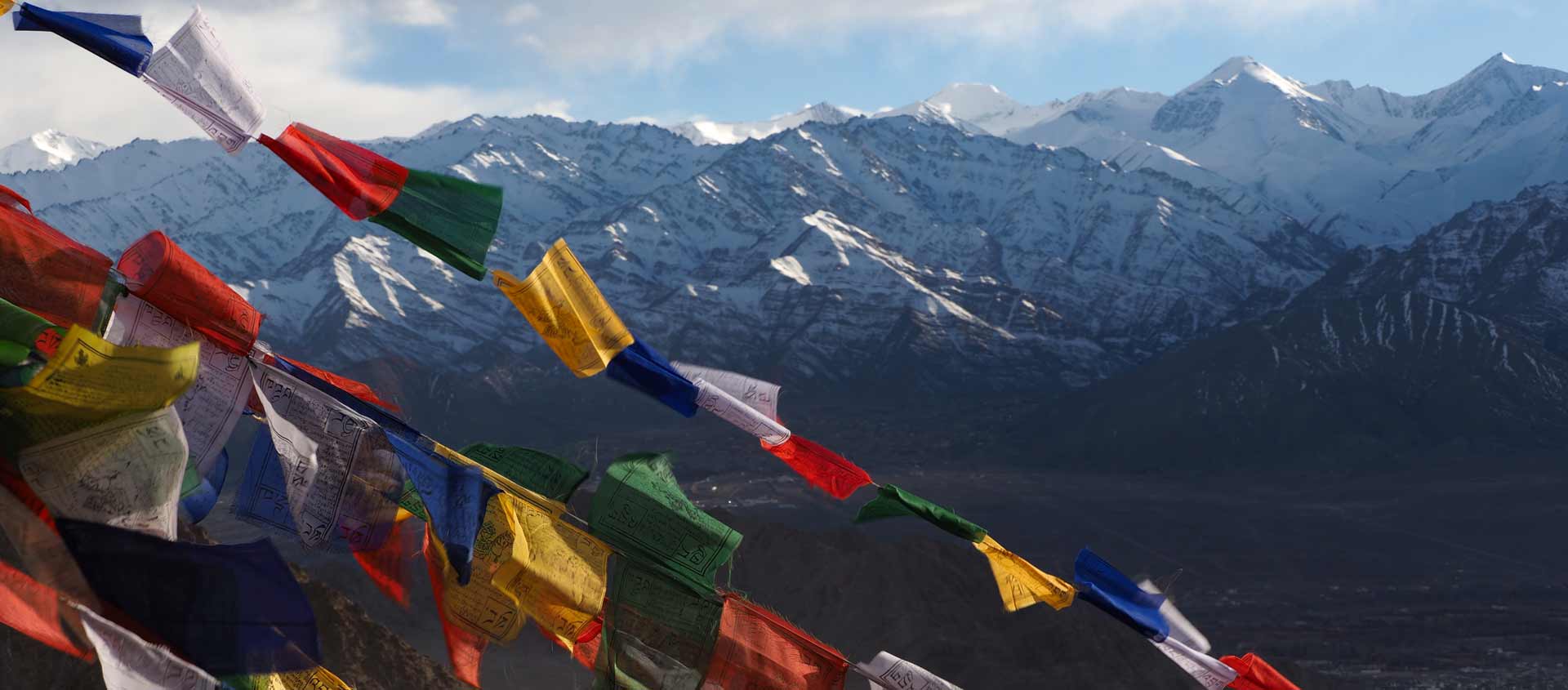
Take in the jaw-dropping views of some of the most remote, rugged and scenically magnificent terrain on Earth. © Liam Rainier
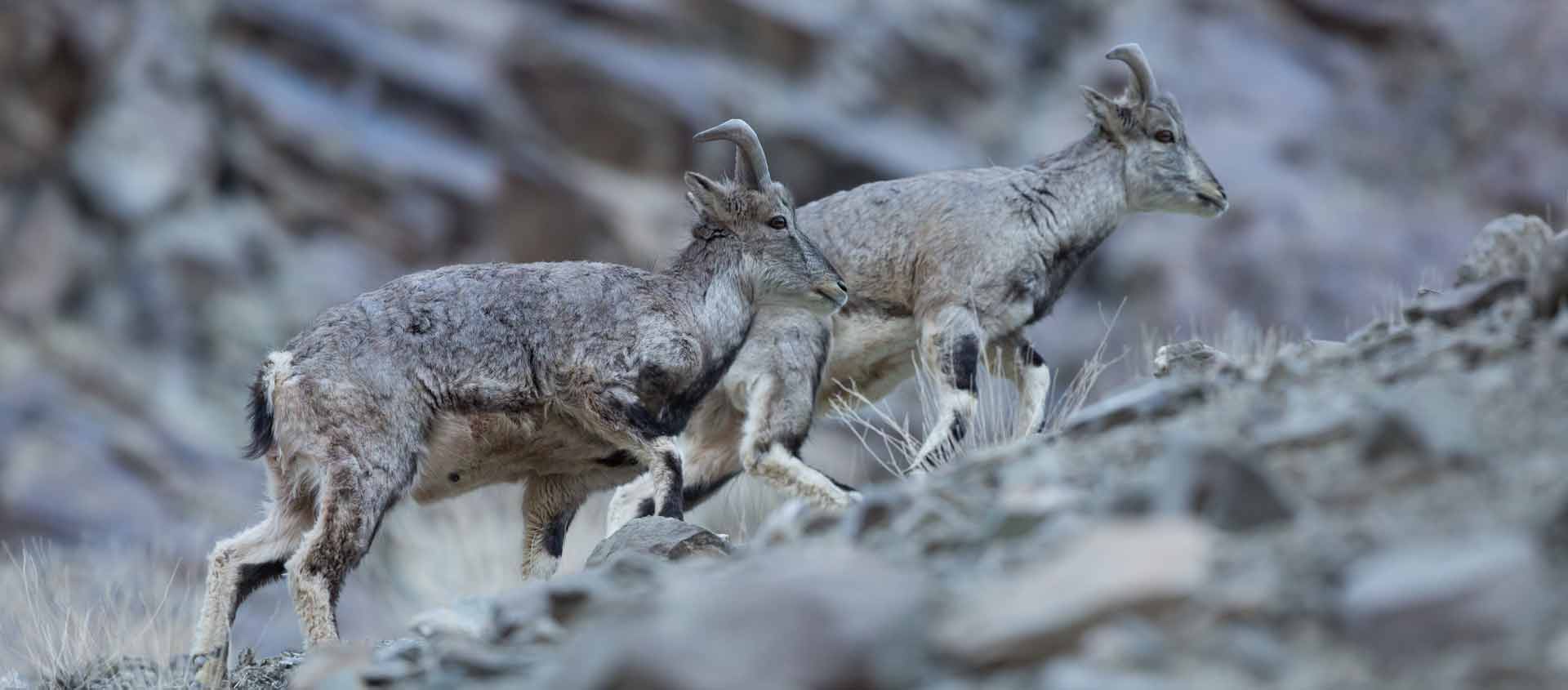
Bharal, or Blue Sheep, are the favorite winter prey of Snow Leopards. © Jonathan Rossouw
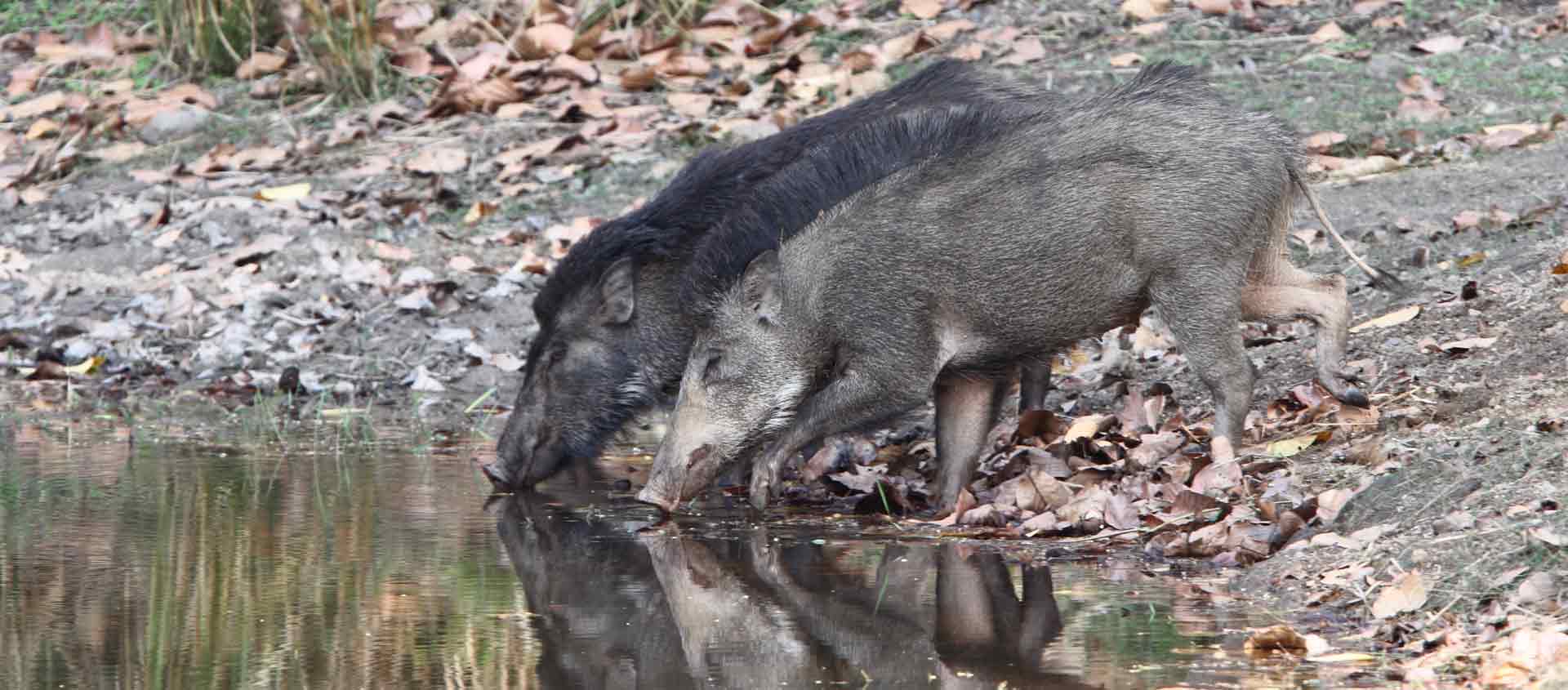
Wild Boars have poor eyesight, but with their long, straight snout, these animals have a powerful sense of smell. © Jonathan Rossouw
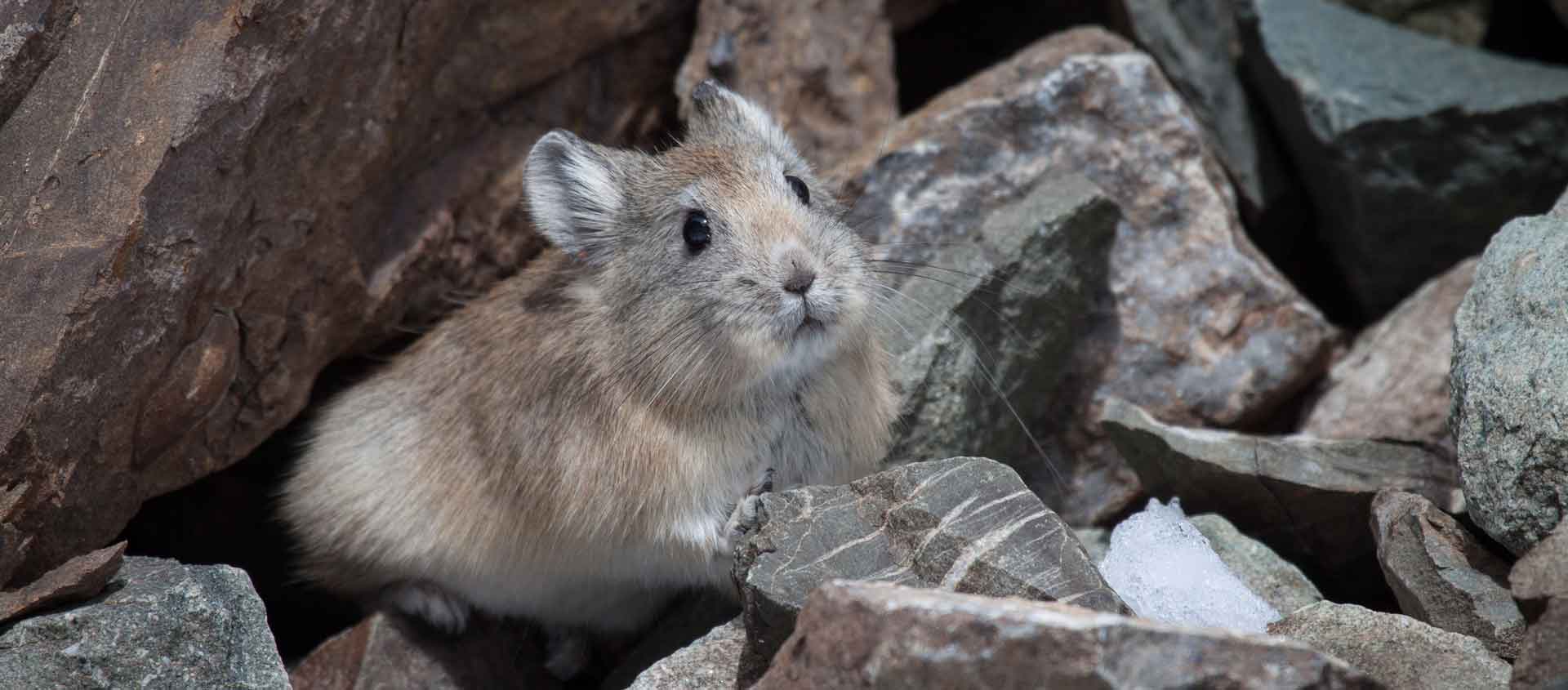
The Royle’s Pika, also called the Himalayan Mouse Hare, uses rocky cliffs to take refuge and escape from predators. © Giovanna Fasanelli
Tigers & Snow Leopards India Safari
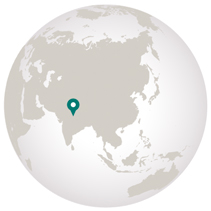
Destinations
- Travel by Air
- Travel by Road
- Travel by Boat
- Travel by Bullet Train
- Travel by Rail
- Travel by Dog Sled
Sunday, February 9: Arrive Delhi, India
Arrive in this cacophonous capital city and transfer to your hotel. The day is yours to explore this vibrant cultural melting pot. Delhi consists of two starkly different worlds: upscale New Delhi was built as the seat of government for the British Raj; Old Delhi served as the capital of the Mughal Empire. You can choose to explore both, taking a rickshaw ride through the dizzying streets of Chandni Chowk, passing the historic Red Fort and winding through medieval bazaars to visit the beautiful Jama Masjid. Gather this evening for a welcome dinner and briefing at your hotel. Overnight at the Andaz Delhi Hotel .
Monday, February 10: Delhi / Raipur / Kanha
After breakfast, head to the airport for your flight south to Raipur, situated on the Deccan Plateau in central India. The majority of the day will be spent driving past rich farmland and colorful villages to Kanha National Park. This 366-square-mile preserve was established to save the endangered Barasingha, or Swamp Deer, before being declared part of the Project Tiger network. One of the largest and most diverse national parks in India, Kanha is an ideal habitat for both tigers and their prey. Arrive at Kanha Jungle Lodge at the edge of the park for dinner and overnight.
Tuesday–Thursday, February 11–13: Kanha
Kanha’s magnificent Sal forests are home to prolific wildlife, notably one of India’s largest populations of Bengal Tigers, and the next three days will focus on experiencing firsthand this most regal of big cats. Beginning every day before dawn, enter the park with morning mists still hanging in the air. At sunrise, the forests resound with bird song. Be especially alert to the warning barks of Sambar, Chital, or Barking Deer, that may lead you to a tiger padding through the forest. While seeing tigers will undoubtedly be foremost in your mind, you may also cross paths with packs of elusive Dhole, or Asiatic Wild Dog, Golden Jackal, Jungle Cat, Wild Boar or the impressive Gaur. At this season, ponds in the meadows are thronged with migratory waterfowl and shorebirds, while Crested Serpent Eagles and Oriental Honey Buzzards circle overhead, and flocks of brilliant Scarlet Minivets enliven the treetops. This remote part of Madhya Pradesh still preserves its native traditions, and between your morning and afternoon safaris you may choose to visit a nearby Baiga tribal village for a taste of local life. The lodge is also renowned for its fine Indian cuisine and holds regular cooking demonstrations. Be sure to take time to look up at the magnificent night skies as well. Dinners and overnights at Kanha Jungle Lodge.
Friday, February 14: Kanha / Raipur / Delhi
Enjoy one last dawn safari. After breakfast, depart for a drive back to Raipur for a flight to Delhi. Dinner and overnight at the Andaz Delhi Hotel.
Saturday, Feburary 15: Delhi / Leh
Rise early and transfer to the airport for a dramatic flight north over the snowy Himalayas to the former kingdom of Ladakh. The capital city of Leh, once a stop on the Silk Road, is often called Little Tibet or the Land of Lamas, due to the influence of Tibetan Buddhism here. The barren, rugged terrain is enlivened by brightly painted gompas, fluttering prayer flags and the ancient and mighty Indus River, from which the very country got its name. There is much to explore here, but take it easy for now—at 11,500 feet high, Leh requires a couple days’ acclimatization before it can be fully enjoyed. Dinner and overnight at The Grand Dragon Ladakh Hotel.
Sunday, February 16: Leh
Continue to acclimate to the altitude today. If you’re up for small walks, you may choose to visit Leh’s main monastery, Sankar Gompa, or the white spired Shanti Stupa, built by Japanese monks in the 1980s to promote world peace. If you feel ready, join the group for a sunset visit of Leh Palace. Built in the same style as the Potala Palace in Lhasa, Tibet, this nine-story edifice has been Leh’s dominant structure since it was built in the 17 th century by the Ladakhi royal family. It has been essentially unoccupied since the royals were stripped of power in 1846 but commands a stunning view over the Indus Valley to the Ladakh Range beyond. Dinner and overnight at The Grand Dragon Ladakh Hotel.
Monday, February 17: Leh / Ulley
Today, drive west, discovering some of Ladakh’s oldest villages tucked into the foothills and floodplain of one of the world’s longest rivers. Pass through the small town of Nimmu, where the Indus and Zanskar Rivers meet. Head north past Likir, one of Ladakh’s famous monasteries, the Zanskar Range providing a backdrop of indescribable Himalayan splendor. Wind up a narrow valley, following the Ulley Chhu stream. This is prime Snow Leopard country, and the expedition crew will be scanning the hillsides for silhouettes. It is also excellent for Ibex, and with luck, you may spot one of these handsome Himalayan mountain goats standing vigil on one of the impossibly narrow outcroppings overhead. Ulley village, a hamlet comprised of just a handful of houses, has only recently been developed for Snow Leopard tracking, and has quickly gained a reputation not just for the high numbers of this most prized of Big Cat, but also as one of the best areas to see the main prey of the Snow Leopards, Himalayan Ibex and Urial, or Red Sheep, as well as Tibetan Wolves, Red Fox, Bearded and Himalayan Griffon Vultures and Golden Eagles. Dinner and overnight at Snow Leopard Lodge Ulley.
Tuesday–Saturday, February 18–22: Ulley
Snow Leopards have a reputation as the most elusive big cat on Earth due to a combination of their exquisite camouflage and their remote and often rugged habitat. Until now, seeing a Snow Leopard meant a full-scale camping expedition, often involving arduous trekking and long hours in subzero temperatures. The beauty of the Snow Leopard Lodge is its unique combination of a base camp with creature comforts deep in prime Snow Leopard habitat, and a team of spotters and trackers with deep experience of the movements and habits of these stealthy predators. Our visit is timed for the prime season of the year when the Ibex have been pushed from the peaks by the deep snow, followed closely by the Snow Leopards. Five full days will be dedicated to tracking these Grey Ghosts, as well as the other wildlife that frequents the area. Meet for breakfast each morning to discuss the day’s plan with your naturalist team. Search for wildlife in vehicles and on foot, during short walks to vantage points or possible sighting areas. Return to the lodge for a warm lunch, then head back out until dusk. Enjoy evening talks on the work being done by the community to conserve their natural heritage. Dinners and overnights at Snow Leopard Lodge Ulley.
Sunday, February 23: Ulley / Leh
This morning, bid farewell to Ulley and depart for the scenic drive back to Leh. Enjoy the afternoon browsing the Leh markets for traditional artifacts, or explore the bird-rich scrub along the Indus River, watching for the striking Ibisbill and dapper White-winged Redstart. Dinner and overnight at The Grand Dragon Ladakh Hotel.
Monday, February 24: Leh / Delhi
After breakfast, transfer to the airport for a flight to Delhi. This afternoon, you may choose to head out onto the hectic streets, watching out for the carts and cycle-rickshaws, cows and macaques, with which you’ll be sharing the road. Visit Humayun’s Tomb, the multi-hued forerunner to the Taj Mahal, or trace your way through the city’s layered history at the ruined forts of Tughlaqabad, Siri, Purana Qila and Shajahanabad. In New Delhi, amble past the stunning Indian Parliament building, or relax with a refreshment at a swanky café, being sure to save room for some Dilli-ka-Chaat, the city’s famously delicious street-food snacks. Farewell dinner and overnight at the Andaz Delhi Hotel.
Tuesday, Feburary 25: Delhi / Depart
Transfer to Delhi airport very early this morning for your international flights home.
- Leaders Marco Tonoli & Liam Rainier
- $16,830 Per Person Rate
- $20,890 Solo Rate
- 17 days Trip Length
- Delhi Start/End
- Download Full Brochure

Call us to reserve your spot on this exciting expedition!
Map of India
Have a question call us at 206.669.9272 / 800.861.6425 . prefer online.

Marco Tonoli
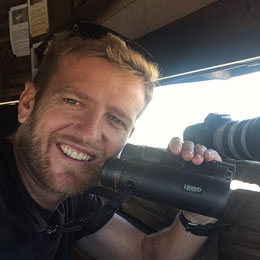
Liam Rainier
Royle’s Pika: Whistling-Hare of the high Himalayas
Never miss an update! Subscribe today and be the first to know about new adventures.
- Apex Founders
- Expedition Gear
- Meet our Leaders
- Privacy Policy
- Terms & Conditions
Check out this great article on the joy of traveling from Expedition Leader, Peter Harrison
- phone_in_talk +91 85959 69416
- email [email protected]
- account_circle Register
- shopping_cart Cart
Cart is Empty
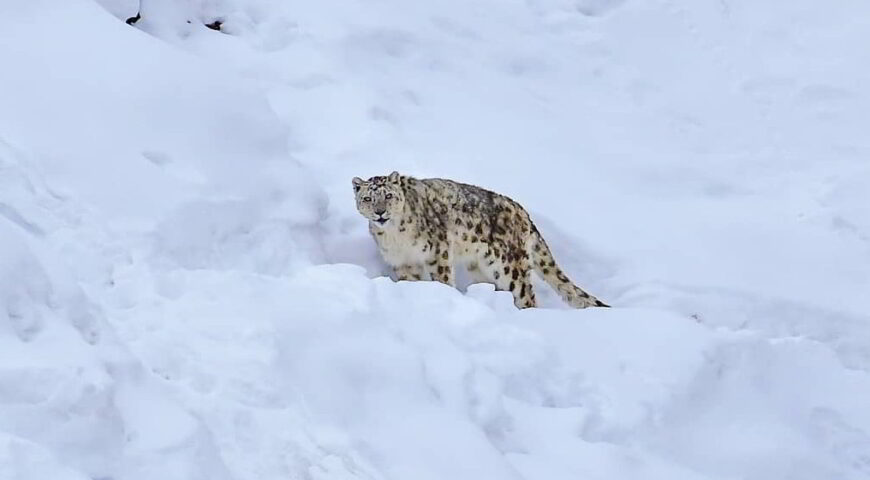
Snow Leopard Tour in Spiti Valley
Snow Leopards are known to be the kind of most leading and influential animal of the Himalayan region. These are the most rare animals to be found in this entire world. They are noted as endangered species by the IUCN (International Union for Conservation of Nature). Nobody gets the golden opportunity to witness this animal as they are very few left. They have long, bushy fur, and the base colour differs from smoky grey to yellowish tan, and whitish in underparts.
Snow Leopards are majorly spotted in high altitude mountains of South Asia and Central Asia, they basically survive in the Trans-Himalayan region of Spiti Valley and Leh Ladakh. These destinations are the best to go for Snow Leopard Tour Expedition.
During the months of January to February there is heavy snowfall which makes Snow Leopards move towards downward direction to hunt for other animals and thus there are more chances of spotting these species. In the summer season, it is quite difficult to trace them because they move to the higher mountain ranges. Not only this but in Spiti Valley one can have a chance to explore variety of Himalayan wildlife that includes Blue Sheep, Tibetan Wolf Red Fox, Golden Eagle, Siberian Ibex and many more. One will experience during the Snow Leopard Tour that the region has the foremost enticing scenery, the rocky and lush greenery, lofty mountains, diversity of landscapes all around makes it even a lot of amazing. This trail of spotting Snow Leopards will give you such happiness and excitement with the stunning picturesque views that should be captured.
As the guide, Spiti Adventure will make sure to provide local experts on this trail who can help in exploring Snow Leopard Territory.
Snow Leopard Tour in Spiti Valley Itinerary
Day 1: Arrive at Delhi
Here starts the thrilling Snow Leopard Tour with Spiti Adventure, first reach at the New Delhi International Airport. Team members of Spiti Adventure will guide you from there, check in to the hotel. Guide will help you with all your travel related documents. Staying overnight in hotel in New Delhi.
Day 2: Delhi – Shimla (345 kms, 7 hrs drive)
The next morning after having breakfast we will proceed to Shimla, the capital of Himachal Pradesh and it is the most popular travel destination not in India but all over the world. In the evening we will arrive at Shimla and check in to the hotel. Staying overnight there only.
Day 3: Shimla to Kalpa (222 kms / 8 hrs)
Today we will travel from Shimla to Kalpa. It is a quaint village situated on the foot of Kinnaur Kailash Mountain. Kalpa is well known for the pine nut forests, red apple orchards and a variety of Deodars which is also known as Chilgoza. The people of the village follows both Hinduism and Buddhism as they have several temples dedicated to them. Once you reach there you will witness the most stunning views of Kalpa Kailash Mountain ranges.
Then we move forward to the Kothi Temple which is devoted to Chandika Devi. The temple is located in a beautiful location which has distinct architectural features and fascinating carvings. We will stay overnight at Kalpa.
Day 4: Kalpa – Nako Lake – Geyu Mummy – Tabo (150 km/8 Hrs)
On this day we will move to see the mesmerizing views of Hindustan Tibet Highway. Enroute, you will get a chance to witness the Convergence of Spiti and Khab. We will reach Spiti Valley after Sumdo. The first destination that we explore is the village Geyu which is famous for the 500 years old Mummy. It is one of the popular tourist attractions in Spiti Valley. Then, we will travel to Tabo Village where we will pay a visit to Tabo Monastery.. Tonight we will be staying at homestay experiencing the culture and lifestyle of the region with delicious local cuisine. Overnight Stay at Tabo Village.
Day 5: Drive from Tabo to Kibber (68 km / 3 hours)
Day 5 to Day 10 (Snow Leopard Spotting)
On this day we will go to spend some time in Tabo Monastery before we arrive for Kibber. It is located at a height of 14,500 ft above the sea level. This will be like 3 hour drive, Enroute Kibber if there will be any Snow Leopard sighting place then we will take you there to capture them.
Guide and experts will suggest you to adopt and acclimatize yourself before indulging in any physical activities and it can also cause you high altitude sickness. We will take decision on the basis of how difficult is the sighting site. Once you reach at homestay in Kibber, take rest there and take a walk to see the beauty of the villages and explore their culture. When we receive the news from our team member about sighting, we will take you to that place. There are points like 100 to 400 yards one can walk to plot a route to the Snow Leopard site. If anyone might face any issue then there is yak available to take them to the site.
Basically, the regular routine is as follows :
Morning tea or coffee by 7 AM and breakfast by 8 AM. Then, proceed for the snow Leopard sighting by 8:30 to 9 AM. One can also go to see the Blue Sheep, Red Fox and Ibex after having breakfast.
It is advised to all the travellers to stay nearby to the homestay until and unless we received any message about the good Snow Leopard sighting. Lunch will be served at the Snow Leopard site but if there are no sightings then lunch will be served at the homestay only. For evening snacks, coffee and tea will be served at the site and at the homestay.
Mineral water will be served to you throughout the Snow Leopard Tour. There will be wood fired hot stove and electric heater in every room and towels will be provided too.
In winter season there will be no running water so the warm water will be provided to you for fresh and up everyday. There are dry toilets where wet wipes and toilet paper will be available. Bathroom facility is separate, if someone wants to take a bath then hot water will be provided. Everything will be served at the door, you don’t have to lift anything during the trip. Camera will be carried by the porter and daytime backpack. Experts and guides will be there in case there might be instant possibility of sightings. For photography, there will be walking pole, chair and stool to make yourself comfortable.
There will be tents in case someone has to take rest. Mats will be available inside the tents. While travelling for sighting oxygen tank will be brought together with the group. In case of any symptoms like shortness of breath then there is Oxygen Saturation measurement device. Our team members will be there with you in case of any problem. Travellers face high altitude sickness and some shortness of breath then there are dropping services to take down to lower altitude. There might be detour up to 30 kms for a different sites of Snow Leopard Sighting. In case of any extra help or extra trips then there will be helpers to get the facilities and other important things to the site from homestay.
Day 11: Drive from Kibber to Kalpa (220 Kms/ 7 Hrs)
After having breakfast we will travel to Kalpa from Kibber. This trail will take us to the modern civilization from ancient civilization. In the noon we will have lunch and reach Kalpa in the evening. Staying overnight at Kalpa
Day 12: Drive from Kalpa to Shimla (222 kms / 8 hrs)
Today after breakfast we will come back to Shimla after exploring the most peaceful and beautiful place and it’s culture. In the evening we will reach to Shimla. After that you can go to the Mall Road in Shimla. Staying overnight at Shimla.
Day 13: Shimla to Delhi
This will be the last day of the journey, after having breakfast we will travel to Delhi. In the evening we reach to Delhi and this is the end of the unforgettable Snow Leopard Tour with Spiti Adventure.
Inclusions
- Accommodation for stay will be provided at hotels and homestays on a double sharing basis.
- All meals Breakfast, Lunch and dinner will be provided but on the first day only dinner and last day only breakfast will be given.
- Mineral Water, Tea/Coffee, Hot Water for Drinking.
- Toilet Paper/ Wet wipes
- Sightseeing and outing as mentioned in Itinerary by Non Ac Vehicle
- Wildlife permit fees.
- Foldable Stool and tents to rest on the field.
- Facility of Oxygen Cylinder in Homestays and field.
- Heater will be provided in room, Bukhara fireplace in Common area
- Skilled and professional guide for you.
Exclusions
- Photography fee.
- Any kinds of drinks alcoholic or Non-alcoholic except mineral water, milk, tea, coffee.
- Any Train or flight fare.
- Any cost due to uncertainty like rail and flight delays, roadblocks, political disturbances etc.
- Any personal services including tip to driver, yak ride, laundry, telephone bills etc.
- Medication at any clinic or hospital.
- Extra need of a porter or guide.
- Anything that is not mentioned in Inclusions.
Important Things To Carry on Snow Leopard Expedition
1. Track pants, Woolen clothes, pullovers , warm hoodies are necessary.
2. Trekking shoes or boots should be added.
3. For change dry clothes, woolen socks and towel.
4. A raincoat, windcheater or wind proof jacket.
5. 2-3 pair of inner warm thermals.
6. Personal toiletries, first aid kit and medications if necessary.
7. Flash light, camera, sunglasses and sunscreen lotion.
8. Back pack and water bottle.
9. Hand sanitizer is must.
10. For hygiene carry toilet paper and wet wipes.
Carry Personal Medical Kit
1. Crocin Advance – For Fever and Headache.
2. Diamox – For High altitude sickness.
3. Digene – For Stomach ache or acidity.
4. Moov / Volini Spray – For Sprains.
5. Betadine / Savlon – Antiseptic cream.
6. ORC – To Treat Dehydration.
7. Carry Bandage, Cotton and Gauze.
FAQ’S About Snow Leopard Tour in Spiti Valley
Q1. What is the ideal time to go for Snow Leopard Tour?
Answer: During the months of January to February there is heavy snowfall which makes Snow Leopards move towards downward direction to hunt for other animals and thus there are more chances of spotting these species. In the summer season, it becomes quite difficult to trace them because they move to the higher mountain ranges.
Q2. How closely can one see Snow Leopard?
Answer: To spot Snow Leopard one needs luck and more that there should be patience, professional guidance and planning. One should book a guide rewarded with excellent Snow Leopard sightings. From 2017 all our clients enjoyed Snow Leopard sightings.
Q3. What happens on a typical day?
Answer: Typical day always starts with a hot tea or coffee and then hot water refreshing wash. There will be continuous communication between the team members and guides who have gone out in search of Snow Leopard. After having breakfast move towards the Valley to trace the footprints of Snow Leopard.
If there is any information trackers will inform us on the way. There will be chances in the evening during the post dinner presentation to hear from the leaders.
Q4. How is the weather in Spiti Valley during the months of January to March?
Answer: During the months of January to March the weather will be extreme cold. The temperature goes down to -25°c to -30°c. It is advised to carry warm clothes with you during the tour. Teams members and guide will let you know all the important things to carry with you for your convenience.
Q5. Is there a lot of trekking and hiking required to spot Snow Leopard?
Answer: To Trace Snow Leopards it is required to walk for at least 2-3 hours to reach the destination where they can be seen. Basic fitness level is expected at a height of 14,000 ft. Spiti Adventure believe that fit travellers might have no problems during the expedition. In case of any query contact us.
Q6. What kind of accommodation facilities are available on this tour?
Answer: There are numerous accommodation facilities available in Spiti Valley. There are various guest houses, hotels, and homestays. In Spiti Valley you can best homestays with all the facilities. In Delhi and Shimla there will be 3 or 5 star property available for you. You don’t have to face much difficulty finding the perfect accommodation as per your own wish.
Q7. Is this tour safe for solo travellers?
Answer: Spiti Adventure organizes the group tours which are perfect for solo travellers. As the guide, we take care of all the facilities and there will be a local tour expert on hand throughout with you to guide and help whenever needed. If travellers want the privacy of your own room then a single room will be provided.
Q8. Will there be any briefing session before we start our tour?
Answer: Yes, there will be a briefing session for you provided by your tour guide. There will be proficient drivers and guides who will take you to the places. You will ne given proper facilities that will be mentioned in the Itinerary.
Q9. Why are snow leopards endangered?
For a long time, snow leopards have been facing a lot of threats which decrease their numbers
continuously that includes poaching and retaliation killings, as well as the loss of habitat and prey. Now very few Snow Leopards are left in the entire world.
Q10. What type of clothing is required for the tour ?
Answer: The weather in Spiti Valley is cold, so you have to be prepare yourself to survive in this chilly climate. You need to bring Woolen clothes that keeps you warm including woolen gloves, sweater, wind proof jackets etc.
Q11. Is there any documents needed for the Snow Leopard tour?
Answer: It is important for everyone to bring documents so that you won’t face any kind of problem during your journey.
Documents included:
• Voter Id Card
• PAN Card
• Passport (NRI or Foreigner)
• Aadhar Card
• Driving Licence
Q12. Are there high altitude problem in Spiti?
Answer: Spiti Valley is located at an high altitude of 12,500 meters above the sea level where people usually get in trouble of breathing and which causes altitude sickness because the oxygen level is low there.
Q13. How one can reach Delhi to start Snow Leopard tour? Answer: You can reach Delhi by Barbour means of transport which are as follows –
By Fight:
The Indira Gandhi Airport is the international airport in Delhi. It connects to the cities in India and also all over the world. You can catch regular flight from Lucknow, Mumbai, Goa, Kolkata, Bangalore, Hyderabad etc and the international places. This airport is divided into Terminal 1D which is a domestic airport mainly used by the Spice Jet, IndiGo, Go Air and more and the second is Terminal 3 which is a international terminal.
By Road:
Delhi is the major city of the Country, it is connected with the cities like Chandigarh, Shimla, Agra, Jaipur, Manali, Dehradun, even Kathmandu and many more. There are some major bus stands in Delhi at Kashmiri gate, Sarai Kale Khan, Anand Vihar. There are also regular air conditioned bus services provided at Mandi House, RK Puram where people can go to Himachal, Shimla, Manali etc.
By Train:
Being the headquarter of the Northern Railways, Delhi has some major railway junctions which are Old Delhi Railway station, The New Delhi Railway Station, Sarai Rohilla. Most trains depart and arrive
in The New Delhi Railway Station. It is situated in the Paharganj near Connaught Place. Cabs, Taxis, buses will be available outside the station to proceed for the further journey.
LEAVE A COMMENT Cancel reply
Save my name, email, and website in this browser for the next time I comment.
- Tiger Safari Tours
- Tiger & Culture Tours
- Special Interest Tours
- Luxury Safari Tours
- Photographic Safari Tours
- Birding Tours
- Fixed Departure Tours 2024 & 2025
- Safari Extension Tours
- Bespoke Tours
- National Parks
- Birding Areas
- Testimonials & Reviews
- Media Coverage
- Tiger Safari in India in 2024
- Bandhavgarh National Park
- Corbett National Park
- Kanha National Park
- Ranthambore National Park
- Panna National Park
- Wildlife Photography Tours
- Conservationists in India
- Wildlife Protection Act of India Guide
- Project Tiger
- Project Elephant
- Project Rhino
- Project Snow Leopard
- Guest Gallery
- Our Journey
- Our CSR Initiative
How To Find Snow Leopards In India
- by Abhishek Kumar
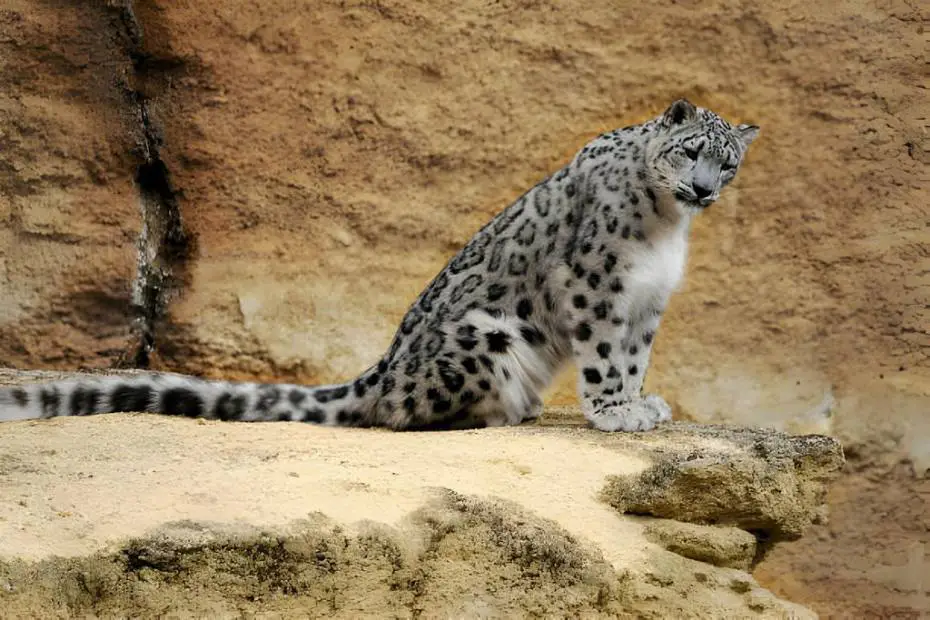
Understanding the Habitat: Where to Begin
Understanding the habitat of the elusive snow leopard is a crucial starting point for anyone hoping to track and observe these majestic creatures in India. With their preference for rugged, mountainous terrain, knowing where to begin your search can greatly increase your chances of finding snow leopards in india.
Snow leopards are primarily found in the high-altitude regions of the Himalayas, including parts of northern India such as Ladakh, Himachal Pradesh, Uttarakhand, and Sikkim. These regions offer a unique blend of rocky outcrops, steep slopes, and alpine meadows, providing ideal habitat for snow leopards and their prey.
One key aspect of understanding the habitat is recognizing the snow leopard’s preferred prey species, such as blue sheep (bharal), ibex, and marmots. These animals inhabit specific niches within the landscape, and tracking their movements can lead you to areas frequently visited by the snow leopards.
Moreover, understanding the seasonal changes and migration patterns of both snow leopards and their prey is essential. As the weather and availability of resources shift throughout the year, so too do the movements of these animals. By studying these patterns, you can pinpoint the best times and locations for your tracking efforts.
In essence, grasping the intricacies of the snow leopard’s habitat provides a solid foundation for embarking on a successful tracking expedition in India. It sets the stage for further exploration and enhances your ability to navigate the rugged landscapes where the snow leopards roam.
Essential Skills and Techniques required for tracking snow leopard in India.
The art of tracking snow leopards in India requires a blend of patience, keen observation, and specialized skills. To embark on this endeavor successfully, one must develop and hone essential tracking techniques tailored to the elusive nature of the snow leopards.
First and foremost, mastering the art of tracking demands a deep understanding of the signs and clues left behind by snow leopards as they move through their mountainous habitat. This includes recognizing their distinctive paw prints, known as pugmarks, as well as identifying other indicators such as scat, scratch marks on trees, and territorial markings. Moreover, honing observational skills is paramount. Snow leopards are masters of camouflage, seamlessly blending into their surroundings with their spotted fur. Learning to spot subtle movements or slight deviations in the landscape can make all the difference in locating these elusive predators.
Additionally, patience is a virtue when it comes to tracking snow leopards. Due to their solitary and elusive nature, encounters can be rare and fleeting. Adopting a patient and methodical approach, combined with perseverance, increases the likelihood of a successful sighting.
Furthermore, employing modern tracking technologies, such as camera traps and GPS collars, can complement traditional tracking methods and enhance the efficiency of monitoring efforts.
In essence, mastering the art of tracking snow leopards in India involves a combination of traditional tracking skills, modern technologies, and a deep respect for the natural world. By cultivating these essential skills and techniques, trackers can embark on a journey of discovery and conservation, contributing to the ongoing protection of these iconic snow leopards.

Navigating Terrain: Strategies for Effective Snow Leopard Tracking
Navigating the challenging terrain of snow leopard habitat demands a strategic approach to maximize your chances of successful tracking in India. The rugged, mountainous landscapes present a multitude of obstacles, from steep slopes to rocky outcrops, requiring careful planning and execution.
First and foremost, it’s essential to familiarize yourself with the topography of the area you intend to explore. Detailed maps, satellite imagery, and local knowledge can help identify potential routes and key features such as ridgelines, valleys, and water sources. By plotting your course in advance, you can optimize your movements and minimize unnecessary detours.
Additionally, mastering techniques for safe and efficient travel in mountainous terrain is paramount. This includes proper footwork on rocky surfaces, utilizing trekking poles for stability, and pacing yourself to conserve energy during ascents and descents. Being physically prepared and equipped with appropriate gear, including sturdy footwear and weather-resistant clothing, is crucial for tackling the challenges of high-altitude environments.
Moreover, adopting a patient and observant mindset is essential for effective snow leopard tracking. Rather than rushing through the landscape, take the time to scan your surroundings carefully, looking for signs of recent activity such as tracks, scat, or scratch marks on trees. Utilize binoculars or spotting scopes to scan distant slopes and cliffs where snow leopards may be resting or hunting.
In summary, navigating the terrain requires a combination of careful planning, physical preparedness, and keen observation skills. By employing these strategies, you can enhance your ability to track and observe snow leopards in their natural habitat in India.
Book popular snow leopard tours in India .
Unveiling Snow Leopard Behavior: Clues and Signs
Unveiling the behavior of the elusive snow leopard involves deciphering subtle clues and signs left behind in their habitat. While direct sightings of these snow leopards are rare, understanding their behavior through indirect evidence is essential for effective tracking. One of the key clues to snow leopard behavior is their preferred hunting grounds. Snow leopards often frequent areas with steep terrain and rocky outcrops, using these features to their advantage when stalking prey. Signs of recent kills, such as carcasses or tracks leading to a hunting site, can indicate the presence of a snow leopard in the vicinity.
Scratch marks on trees or rocks are another telltale sign of snow leopard activity. These markings serve as territorial boundaries and communication signals between individuals. By studying the distribution and frequency of these marks, researchers can gain insights into the social dynamics and movement patterns of snow leopards in the area.
Furthermore, analyzing scat and scent markings can provide valuable information about snow leopard diet and territory usage. DNA analysis of fecal samples can reveal the presence of specific prey species in the snow leopard’s diet, shedding light on their foraging habits.
By piecing together these various clues and signs, researchers and trackers can paint a more comprehensive picture of snow leopard behavior in India. This knowledge not only enhances our understanding of these snow leopards but also informs conservation efforts aimed at protecting their fragile habitats.

Tools of the Trade: Equipment for Tracking Expeditions
Equipping oneself appropriately is fundamental for embarking on successful snow leopard tracking expeditions in India. The right tools can significantly enhance your ability to navigate rugged terrains and endure the harsh conditions of high-altitude environments. First and foremost, a sturdy pair of hiking boots with good ankle support is essential. These boots provide stability and protection while traversing rocky slopes and uneven terrain. Additionally, layered clothing is crucial for adapting to fluctuating temperatures, including moisture-wicking base layers, insulating mid-layers, and waterproof outer shells to shield against snow and wind.
Carrying a reliable backpack is indispensable for storing essential gear such as water bottles, snacks, a first-aid kit, and navigation aids like maps and GPS devices. Binoculars or a spotting scope are indispensable for scanning vast landscapes and spotting distant wildlife, including elusive snow leopards. A camera with a telephoto lens allows for capturing memorable moments and documenting wildlife sightings.
Furthermore, consider investing in camping equipment if planning overnight stays in the wilderness. A sturdy tent, warm sleeping bag, and portable stove for cooking meals are indispensable for extended expeditions. Lastly, don’t forget safety essentials such as a headlamp or flashlight, a multi-tool, and emergency communication devices like a satellite phone or personal locator beacon.
By equipping yourself with the right tools and gear, you’ll be well-prepared to embark on unforgettable snow leopard tracking adventures in the majestic landscapes of India.
Patience Pays Off: Persistence in Snow Leopard Observation
In the realm of snow leopard observation, patience truly proves to be a virtue. Unlike some more readily visible wildlife, snow leopards are masters of stealth, blending seamlessly into their rocky, snow-covered environments. Thus, patience is not just a recommendation but a necessity for those hoping to catch a glimpse of these elusive creatures in the wild. Successful snow leopard observation often requires long periods of waiting and scanning the landscape for any subtle movement or sign of activity. Even with advanced tracking techniques and knowledge of their habitat, encounters with snow leopards can be rare and unpredictable. It’s not uncommon for days or even weeks to pass without any sighting.
However, it is during these moments of quiet vigilance that the magic of snow leopard observation truly unfolds. The anticipation builds with each passing hour, heightening the sense of excitement and anticipation. And when that moment finally arrives, when a snow leopard gracefully emerges from its concealment, the reward is unparalleled.
Moreover, patience extends beyond the physical act of waiting. It encompasses the mental fortitude to endure setbacks and challenges without losing hope. It requires resilience in the face of adversity and a deep-seated commitment to the cause of snow leopard conservation.
Ultimately, for those who are willing to invest the time and effort, the rewards of snow leopard observation are immeasurable. Each encounter serves as a poignant reminder of the beauty and fragility of the natural world, inspiring a newfound appreciation for these magnificent creatures and the habitats they call home.
Explore Tigers, snow leopards, lions & common leopards in India on our Big Cats in India Tour .
Local Insights: Leveraging Indigenous Knowledge
Local insights play a pivotal role in the pursuit of tracking snow leopards in India, as they offer invaluable wisdom passed down through generations of indigenous communities residing in the region. These communities, deeply intertwined with the natural world, possess a wealth of traditional knowledge about the behavior, movements, and habitats of snow leopards.
Indigenous people living in the snow leopard’s range have developed an intimate understanding of the landscape and its inhabitants over centuries of coexistence. They have honed their observational skills and possess a deep respect for the delicate balance of the ecosystem. Leveraging this indigenous knowledge can provide invaluable guidance for those seeking to track snow leopards effectively.
Local communities often have firsthand encounters with snow leopards and can offer insights into their behavior, such as preferred hunting grounds, denning sites, and migratory routes. They may also share folklore, myths, and legends that shed light on the cultural significance of these snow leopards and their role in the local ecosystem.
Furthermore, collaborating with indigenous guides and trackers not only enhances the chances of spotting snow leopards but also fosters mutual learning and cultural exchange. By respecting and valuing the expertise of local communities, trackers can forge meaningful partnerships that contribute to both conservation efforts and the preservation of indigenous knowledge for future generations.
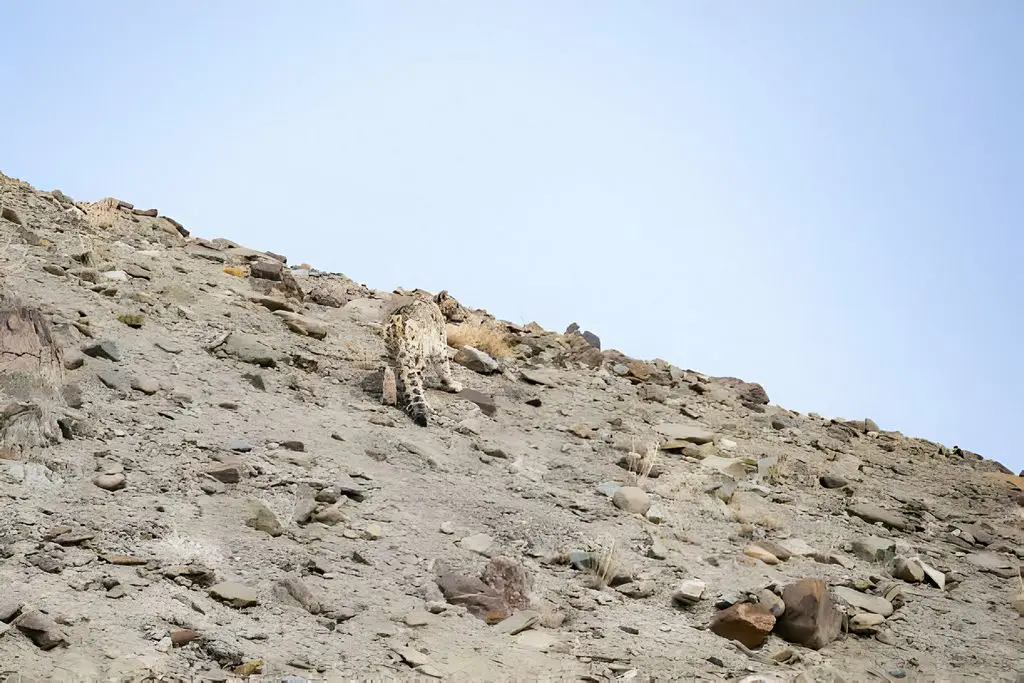
Environmental Awareness: Ethical Considerations in Tracking
Environmental awareness and ethical considerations are paramount when embarking on a snow leopard tracking expedition in India. While the desire to encounter these elusive creatures is strong, it must be balanced with a profound respect for the delicate ecosystems they inhabit.
One of the primary ethical considerations is minimizing disturbance to both the snow leopards and their habitats. This involves adhering to established guidelines and regulations, such as maintaining a safe distance from the animals and refraining from disrupting their natural behaviors. Additionally, practicing Leave No Trace principles ensures that your presence has minimal impact on the environment, preserving it for future generations of wildlife and enthusiasts alike.
Furthermore, respecting the cultural sensitivities of local communities is essential. Many indigenous groups in the region revere the snow leopard as a symbol of strength and beauty, and their traditional beliefs often play a crucial role in snow leopard conservation efforts. Engaging with these communities in a respectful and collaborative manner fosters mutual understanding and support for snow leopard conservation initiatives .
Incorporating ethical considerations into your tracking endeavors not only promotes responsible tourism but also contributes to the long-term sustainability of snow leopard populations. By prioritizing the well-being of these magnificent creatures and their habitats, you can ensure that future generations have the opportunity to marvel at their beauty in the wild.

Documenting Your Journey: Tips for Effective Field Notes
Documenting your journey while tracking snow leopards in India is not only a way to preserve memories but also a valuable tool for researchers and conservationists. Effective field notes capture the essence of your experiences and contribute to the collective understanding of snow leopard behavior and habitat dynamics. First and foremost, maintaining detailed notes requires consistency and organization. Start by recording basic information such as date, time, location, and weather conditions at the beginning of each observation session. This establishes a clear timeline and context for your observations.
When recording snow leopard sightings or signs, be as descriptive as possible. Note the behavior observed, such as hunting, grooming, or resting, and any interactions with other wildlife. Pay attention to environmental factors such as terrain, vegetation, and elevation, as these can influence snow leopard movements and preferences.
In addition to written notes, consider supplementing your documentation with photographs or sketches. Visual aids can provide valuable context and help corroborate your observations.
Furthermore, don’t overlook the importance of recording negative sightings or unsuccessful tracking attempts. These “non-events” are just as informative as sightings and can help researchers understand the factors influencing snow leopard presence or absence in certain areas.
Finally, share your field notes with relevant organizations or researchers working on snow leopard conservation. Your contributions can contribute to broader efforts to protect the snow leopards and their habitats in India and beyond.
Also Read : 4 leopard species in India & where to find them .
Conservation Impact: Contributing to Snow Leopard Research and Protection
Contributing to snow leopard research and protection efforts can have a significant conservation impact, not only for the snow leopards but also for the delicate mountain ecosystems they inhabit. With their status classified as “vulnerable” by the International Union for Conservation of Nature (IUCN), snow leopards face numerous threats, including habitat loss, poaching, and human-wildlife conflict.
One way individuals can contribute is by supporting research initiatives focused on snow leopard behavior, ecology, and population dynamics. By funding or participating in research projects, conservationists can gather valuable data on snow leopard movements, habitat use, and interactions with other species. This information is crucial for developing effective conservation strategies and management plans.
Furthermore, promoting community-based conservation efforts is vital for mitigating human-wildlife conflict and fostering local support for snow leopard conservation. Initiatives such as predator-proof livestock enclosures, compensation programs for livestock losses, and sustainable livelihood projects can help reduce retaliatory killings of snow leopards and promote coexistence between humans and wildlife.
Engaging in advocacy and raising awareness about the plight of snow leopards is another impactful way to contribute to their conservation. By educating others about the importance of preserving these iconic predators and their habitats, individuals can inspire action and mobilize support for conservation initiatives at local, national, and international levels.
In summary, actively participating in snow leopard research, supporting community-based conservation efforts, and advocating for their protection are all meaningful ways to make a positive conservation impact and ensure a brighter future for the snow leopards.
Destinations to Spot Snow Leopards in India
Leave a reply cancel reply.
Your email address will not be published. Required fields are marked *
Save my name, email, and website in this browser for the next time I comment.
507, Emaar The Palm Square, Sector 66 Gurugram - 122102, Haryana
[email protected] [email protected]
Sharad Vats : +91-9811200094
Top Tiger Safari Tours
- Corbett, Kanha & Bandhavgarh Tour
- Big Cats of India Tiger Safari Tour
- Luxury Tiger Safari in India Tour
- Kanha & Bandhavgarh Tiger Safari Tour
- Tiger Safari & Golden Triangle Tour
- Tiger, Taj & Temple Tour
- Elephant and Rhino Tour
- Snow Leopard Trip to Spiti Valley
- Tiger, Taj Mahal and Birding Tour
Tiger Safari Destinations
- Dudhwa National Park
- Pench National Park
- Satpura National Park
- Tadoba National Park
Explore Tiger Safari India
- About Nature Safari India
- Testimonials
- Tiger Safari in India
- Tiger Safari Travel Guide 2024
- Luxury Tiger Safari Tours in India
- Tiger Safari India Blog
- Nature Safari India Blog
- Privacy Policy
- Cancellation & Refund
- Other Important Information
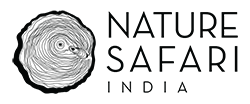
Copyright © 2024 Nature Safari India
Partners and approvals

Privacy Overview
Please enable javascript in your browser to visit this site..
Snow Leopard Trek
- Birding Tours
- Summer Treks
- Lamayuru Chiling Trek
Lamayuru Darcha Trek
- Kingdom of Zanskar Trek
Rumtse Tsomoriri Trek
Silk route trek, markha valley trek.
- Stok Kangri Expedition
- Spituk Matho Trek
- Winter Trek
Chadar Trek
- Essence of Ladakh
- Lakes of Ladakh
Cultural Immersion
- Cycling Tours
- Horse Safaris
- Educational Tour
Searching for peace and harmony?
They call it pangong tso ., we call it heaven on earth., come take a walk with us., discover yourself., step off the beaten path., let us show you how., ladakh is calling., are you listening.
Nestled in the high reaches of the Indian Himalayas, Ladakh is a land of fascinating contrasts - stark lunar terrain alongside lush green river valleys, breathtaking snowcapped mountains overlooking azure lakes, ancient Buddhist monasteries versus the forward looking town of Leh.
As one of the oldest travel companies in the region, we promise to take you on a voyage into this deeply spiritual region, into the hearts of the simple yet warm hearted inhabitants peopling this region, and right upto the final frontiers of civilization.
Experience counts
We have been in this business for more than 25 years, and are proficient in planning and leading a variety of trips in the region.
Diverse areas of expertise
We pride ourselves in being the leading operators when it comes to Snow Leopard tours, Birding tours, as well as fulfilling any filming requirements. Apart from this, we have been one of the foremost trekking companies, organizing distinctive treks in all parts of Ladakh and Himachal.
Customized itineraries
We are keen to work with you to achieve your dream trip - and offer all our help in helping you plan the perfect customized itinerary.
Ethical Tourism
Our endeavour is to provide the best experience possible for visitors, while maintaining the environmental balance and integrity of the region.
Our team has the best mix of experience and passion, with hands on management of all facets of your trip. The guides we employ are old hands in the region, and have worked with the finest wildlife and filming crews.
We also pride ourselves on being a 100% local organization, giving you that extra in the famed Ladakhi hospitality, and that edge in adding the most genuine personal experiences on your trip.
Affiliations
You can book with us confidently, as we are a registered member of the Indian Association of Tour Operators , All Ladakh Tour Operators Association , Adventure Tour Operators Association of India and Indian Mountaineering Foundation .
Few of our notable services
Birding tour, educational tours, horse safari, kingdom of zanskar.

IMAGES
COMMENTS
Voygr was awarded Robb Report's Best of the Best in the Travel Category in 2022. Harper's Bazaar rated Voygr's snow leopard tour as 2020's "Top 100 Ultimate Travel Experiences.". Condé Nast Traveler featured this expedition as the 10 page cover story (UK & US) in October, 2020 (even before our amazing camp upgrades!).
Snow Leopard Expedition to Kibber Valley. Day 01 : Arrive New Delhi (Flight). Day 02 : New Delhi - Chandigarh - Rampur (Flight + 8 hrs drive) Day 03 : Rampur - Tabo ( by road, 10-12 hrs drive) Day 04 - 09 : Tabo - Kibber. Day 10 : Kibber - Rampur. Day 11 : Rampur - Chandigarh (by road, 425 kms/8 hrs drive)
10. $10595 (+air) Photo Departures Available. Make it Custom Make it Private. Carbon Data. The Himalayas have long held allure for adventurers. And in the world's highest mountains, no creature is more alluring than the snow leopard. This elegant feline, with its rosette-spotted silver coat, patrols lofty ridges in Earth's most forbidding ...
Track snow leopards in the Himalayas of Ladakh, the best place in the world to find these near-mythical cats in the wild. The prime season for sightings is winter, when high-altitude mountain goats descend to the valleys, bringing the cats with them. In the austere beauty of Ladakh's winter landscape, we head out with local Ladakhi trackers to search for the "gray ghost." We'll be based in ...
India Snow Leopard Tour. Epic. Few journeys in life can truly be described as "EPIC.". A quest to see a Snow Leopard in its natural realm is one such expedition. Exceedingly scarce, exquisitely beautiful, the "Grey Ghost of the Himalayas" is also the most elusive of the big cats. To see one requires exploring some of the most remote ...
Birdquest's Snow Leopard tours in Ladakh, India are extraordinary adventures in the very best place on earth for seeing and photographing Snow Leopards. Your chances of seeing one are close to 100% and multiple sightings are the norm in the mating season in February/March! Join us for a unique experience in Ladakh, a very special part of ...
Snow Leopard Expedition with Leh Tour. Day 01 : Arrival in New Delhi. Day 02 : New Delhi - Leh. Day 03 : Leh Sightseeing. Day 04 : Leh - Zingchen - Husing. Day 05 - 09 : Snow Leopard Excursion with Local Guide. Day 10 : Rumbal Doh - Zinchen. Day 11 : Leh - New Delhi. Day 12 : New Delhi - Fly Back Home.
Highlights. This epic adventure takes you to the Ulley Valley, Ladakh - one of India's most protected Snow Leopard areas with expert trackers on hand to trace the cats' scents, trails and markings, this journey will keep the pulse racing as you follow every sign of their movements whilst exploring some of the world's most spectacular ...
Conservation travel is the global tool to achieve this goal. This was realized early by the late Rinchen Wangchuk, the founding Director of the Snow Leopard Conservancy (SLC) India Trust. The earliest snow leopard trips were organized by Rinchen Wangchuk and Hashim Tyabji in the early 2000s. These trips were based around Rumbak, a village ...
This elegant contemporary low-rise hotel is surrounded by seven acres of gardens, courtyards and reflecting pools, lending a resort-like ambience. This evening, join our Expedition Leader for a welcome dinner and preview of our journey into the Indian Himalaya and the realm of Panthera uncia, the snow leopard. Day 2: Delhi / Leh, Ladakh.
Tabo is noted for being the oldest continuously operating Buddhist enclave in both India and the Himalayas. Overnight at a guesthouse/ homestay. DAY 03. Tabo - Kibber (4270m) Duration: Drive 3 hours. In the morning, visit Tabo monastery, built in 996 AD and home to many priceless artefacts and spectacular murals.
Snow Leopard Tour. 10days. Starting from. $2,700. per person*. DESTINATIONS: Delhi ,Leh , Ulley , Leh , Delhi. TOUR HIGHLIGHTS:: Trekking in the mountains inUlley. Guided by experienced naturalists and Snow Leopard experts who have in the past guided BBC Planet Earth II / Silent Roar PBS / Steve Winter Photography.
Day 1: Spituk - Zingchen. Time:5hrs. Distance:15.7km. Elevation gain / loss: +375m / -161m. Note: Take a tour of Spituk monastery before you leave for the snow leopard trek. You must the Indus river's south bank until you reach our destination of Zingchen.
This incredible 11-day winter expedition* through some of India's most remote destinations sets out in search of the elusive snow leopard and other incredible Himalaya wildlife. The Trans-Himalayan region of Ladakh is one of the last frontiers for wildlife tourism.
Click the PDF icon to download the Snow Leopards of India detailed itinerary. DAY 1: ARRIVE IN DELHI. You will be met upon arrival in Delhi and transferred to your hotel. Delhi, the capital of India, is a city that offers a glimpse of both ancient and modern day India. It is the third largest city in India and one of the fastest growing in Asia.
Tigers & Snow Leopards India Safari More than a wilderness adventure, more than a safari, this is a true pilgrimage in search of two of the world's most legendary, and most elusive, Big Cats. ... In addition to all tour services from arrival in Delhi through departure from Delhi as described in the itinerary, the trip price includes all ...
Here starts the thrilling Snow Leopard Tour with Spiti Adventure, first reach at the New Delhi International Airport. Team members of Spiti Adventure will guide you from there, check in to the hotel. Guide will help you with all your travel related documents. Staying overnight in hotel in New Delhi. Day 2: Delhi - Shimla (345 kms, 7 hrs drive ...
Snow leopards are primarily found in the high-altitude regions of the Himalayas, including parts of northern India such as Ladakh, Himachal Pradesh, Uttarakhand, and Sikkim. These regions offer a unique blend of rocky outcrops, steep slopes, and alpine meadows, providing ideal habitat for snow leopards and their prey.
Welcome to Snow Leopard Trails. Nestled in the high reaches of the Indian Himalayas, Ladakh is a land of fascinating contrasts - stark lunar terrain alongside lush green river valleys, breathtaking snowcapped mountains overlooking azure lakes, ancient Buddhist monasteries versus the forward looking town of Leh. As one of the oldest travel ...
According to World Wildlife Federation (WWF) India, there are only 450-500 snow leopards in India. Also known as the 'Grey Ghost' this endangered species can be found in the western Himalayan states of Uttarakhand, Himachal Pradesh, Ladakh, Sikkim and Arunachal Pradesh.These strikingly beautiful animals are found at elevations between 3,000-5,000 metres or higher in the Himalayas.
Snow Leopards, Himalayan Ibex, Himalayan Blue Sheep, Red fox, Himalayan Snow Cock, White breasted stone / beech marten (aka Himalayan Weasel), Eurasian Lynx, Tibetan Sandgrouse, and Woolly Hare. Trip span. 9 Days and 8 Nights. Scheduled Events in 2024. January 1,12 and February 5,15.